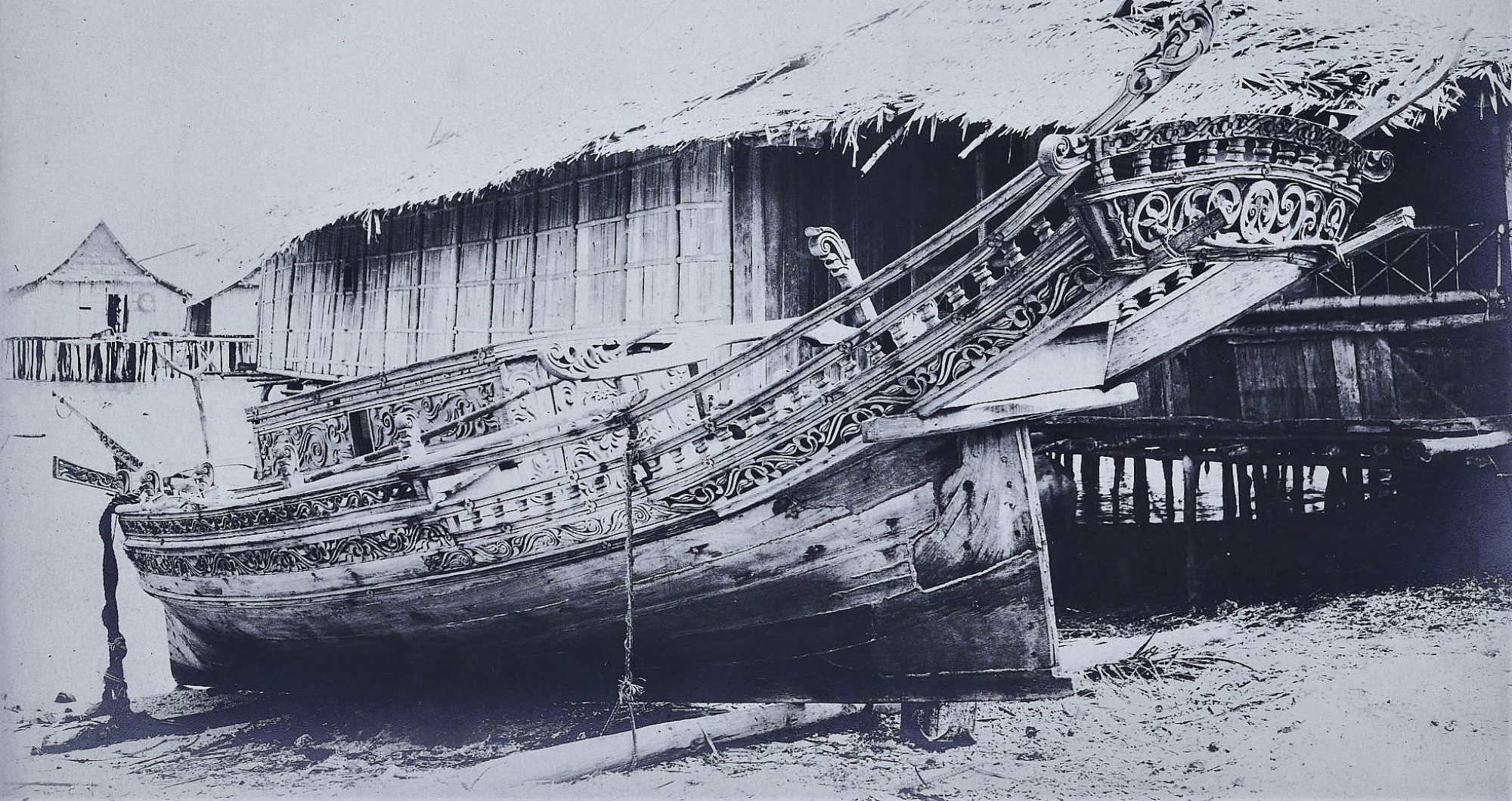- Past events
See the videos of the talk in our facebook page: https://www.facebook.com/4DownByTheWater
Speakers for the Fall of 2020 (Sep-Dec)
14 September, inaugural talk :
Maritime archaeology in the 21st CENTURY: A PERSONAL VIEW
With James Delgado, Affiliation: SEARCH, Inc.
Abstract:
This personal reflection draws on his 43 years of work in the field to focus on themes of the relevance of maritime archaeology to society, the role of maritime archaeology in ocean science and as part of multi-disciplinary endeavours, the impact of new technologies, and close with a brief discussion of his most recent projects, one focusing on the shallow water wreck of the schooner Clotilda, the last vessel known to have brought people to the United States to be enslaved, and the deep=water discovery and preliminary archaeology documentation of the atomic-bombed battleship USS Nevada in the deep Pacific.
James Delgado’s work as a maritime archaeologist has included prehistoricsites, maritime landscapes, and shipwrecks ranging from antiquity 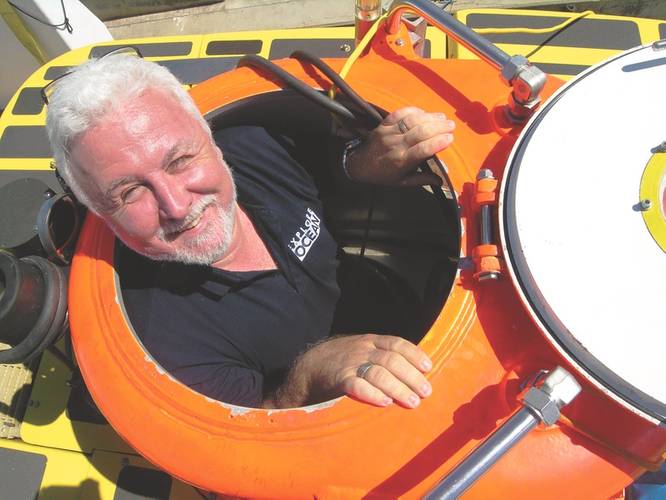 to the nuclear age. This includes sites found on beaches and intertidal zones, buried in urban landfill, and submerged in rivers, lakes, and in the ocean from shallow waters to sites nearly five kilometres deep.
to the nuclear age. This includes sites found on beaches and intertidal zones, buried in urban landfill, and submerged in rivers, lakes, and in the ocean from shallow waters to sites nearly five kilometres deep.
Host: Veronica Walker & Kristin Ilves
28 September
Sugar, tobacco and coffee: New habits and trends in 18th century northern Baltic Sea area based on shipwreck findings
With: Riikka Aalvik, University of Helsinki
Abstract:
The northern Baltic Sea is known of the well preserved shipwrecks. The conditions in the sea are unique; low salinity, cold water, lack of marine borers like Teredo navalis and low amount of daylight create an environment, where our maritime past has preserved. Maritime trade, consuming habits, 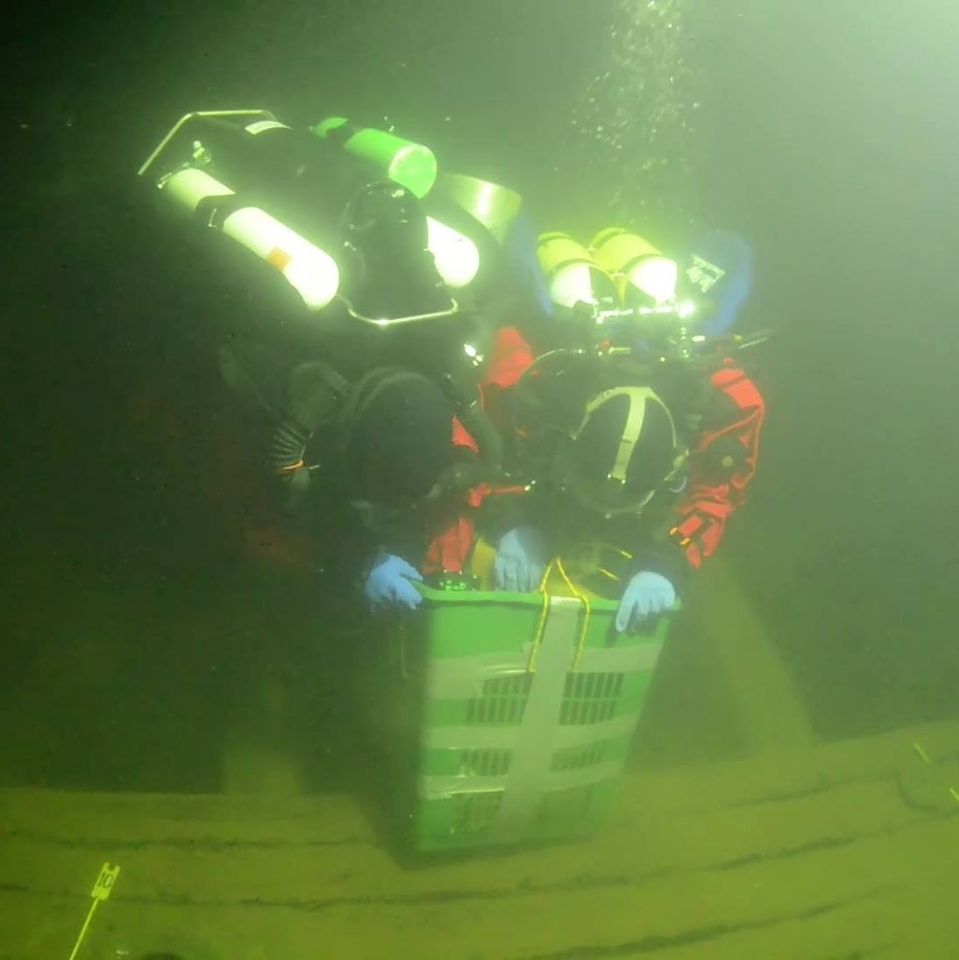 new trends and ideas have often researched through historical documents like toll and maritime salvage records. They give information of the trade of colonial and European goods in the northern Baltic Sea area in the 17th-19th century, but the material evidence is often missing, though. The groceries and goods like wine, coffee, tea and tobacco were consumed, dyes used for textile and leather and many artefacts, like wooden objects were vanished during the centuries. The material evidence may be found in the well preserved wrecks. Sometimes, the ships sank with all their equipment, every day artefacts and cargo. My research is about 18th century wrecks of cargo vessels like the Vrouw Maria and maritime trade on the so called St. Petersburg line. The research of shipwrecks has given proof of dyes, different kinds of tobacco products, coffee, textile and all the new material culture around them, which spread in the Northern Europe and Russia in the cargo holds of the merchant ships from the Netherlands, France, England and other countries. In the well preserved shipwrecks we can find miniature worlds with every day eating and drinking vessels, remains of people´s clothing and spaces where they worked and rested.
new trends and ideas have often researched through historical documents like toll and maritime salvage records. They give information of the trade of colonial and European goods in the northern Baltic Sea area in the 17th-19th century, but the material evidence is often missing, though. The groceries and goods like wine, coffee, tea and tobacco were consumed, dyes used for textile and leather and many artefacts, like wooden objects were vanished during the centuries. The material evidence may be found in the well preserved wrecks. Sometimes, the ships sank with all their equipment, every day artefacts and cargo. My research is about 18th century wrecks of cargo vessels like the Vrouw Maria and maritime trade on the so called St. Petersburg line. The research of shipwrecks has given proof of dyes, different kinds of tobacco products, coffee, textile and all the new material culture around them, which spread in the Northern Europe and Russia in the cargo holds of the merchant ships from the Netherlands, France, England and other countries. In the well preserved shipwrecks we can find miniature worlds with every day eating and drinking vessels, remains of people´s clothing and spaces where they worked and rested.
Host: Kristin Ilves
12th October
Maritime Archaeology of Kublai Khan fleets
With Jun Kimura, School of Marine Science and Technology, Tokai University
Abstract:
The expansion of the Mongol Empire engulfed most of Eurasia by means of invincible military forces in the 13th century. In China, Kublai Khan, who is a grandson of Great Khan of Genghis and the fifth Mongolian Emperor,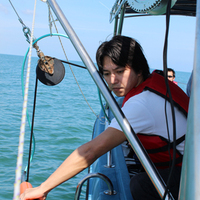 established the Yuan Dynasty (1271-1368 A.D.) Kublai Khan dispatched armies aboard fleets of ships in attempts to expand the empire’s hegemony and extend his rule into East Asia and Southeast Asia during his reign. There are two highly significant locations associated with the attempted Yuan invasions: waters offshore coast of Takashima Island in Japan and an area on the Bach Dang River in Vietnam These are places where historical naval battles are known to have taken place and archaeologically evidenced, in each case resulting from the defeat of the Yuan Dynasty’s fleets.
established the Yuan Dynasty (1271-1368 A.D.) Kublai Khan dispatched armies aboard fleets of ships in attempts to expand the empire’s hegemony and extend his rule into East Asia and Southeast Asia during his reign. There are two highly significant locations associated with the attempted Yuan invasions: waters offshore coast of Takashima Island in Japan and an area on the Bach Dang River in Vietnam These are places where historical naval battles are known to have taken place and archaeologically evidenced, in each case resulting from the defeat of the Yuan Dynasty’s fleets.
Host: Veronica Walker
26th October
Digital Maritime Archaeology: The experience at the MARELab, University of Cyprus
With Massimiliano Secci, University of Cyprus
Abstract:
The last 30 years have witnessed an unprecedented development of digital technologies. Among many other disciplines, Maritime Archaeology is in the process of experimenting with and exploiting the various potentials of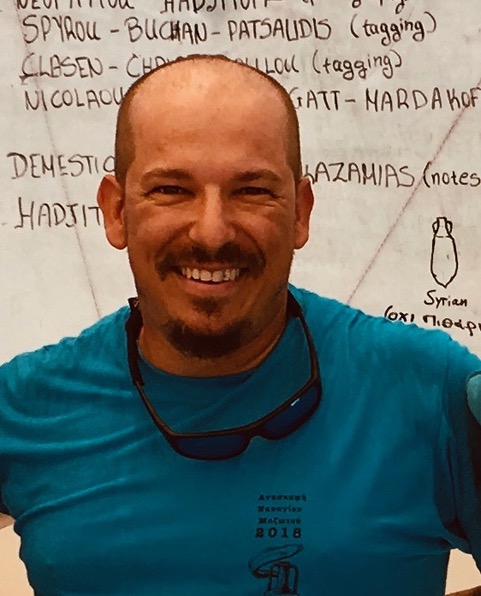 the digital world. The Maritime Archaeology Research Laboratory (MARELab) at the University of Cyprus has been testing numerous digital applications and techniques to record, analyze and disseminate the outstanding maritime heritage of the island. In collaboration with national and international partners, MARELab has exploited photogrammetry, 3D modeling and analysis as well as virtual reality applications to study new sites and make underwater cultural heritage publicly accessible. The talk will provide an overview of these developments, bringing the audience to close (although virtual) contact with the amazing shipwrecks and maritime heritage of the Island of Cyprus.
the digital world. The Maritime Archaeology Research Laboratory (MARELab) at the University of Cyprus has been testing numerous digital applications and techniques to record, analyze and disseminate the outstanding maritime heritage of the island. In collaboration with national and international partners, MARELab has exploited photogrammetry, 3D modeling and analysis as well as virtual reality applications to study new sites and make underwater cultural heritage publicly accessible. The talk will provide an overview of these developments, bringing the audience to close (although virtual) contact with the amazing shipwrecks and maritime heritage of the Island of Cyprus.
Host: Kristin Ilves
9th November
Talking Jars across the Seas: Rice Beer or Mercury Containers from East Asia to Southeast Asia
With Sharon Wong, The Chinese University of Hong Kong
Abstract:
Jars were crucial objects in global maritime trade; however, they have received little attention by archaeologists comparing with other Chinese delicate ceramic vessels with higher aesthetic value, such as blue-and-white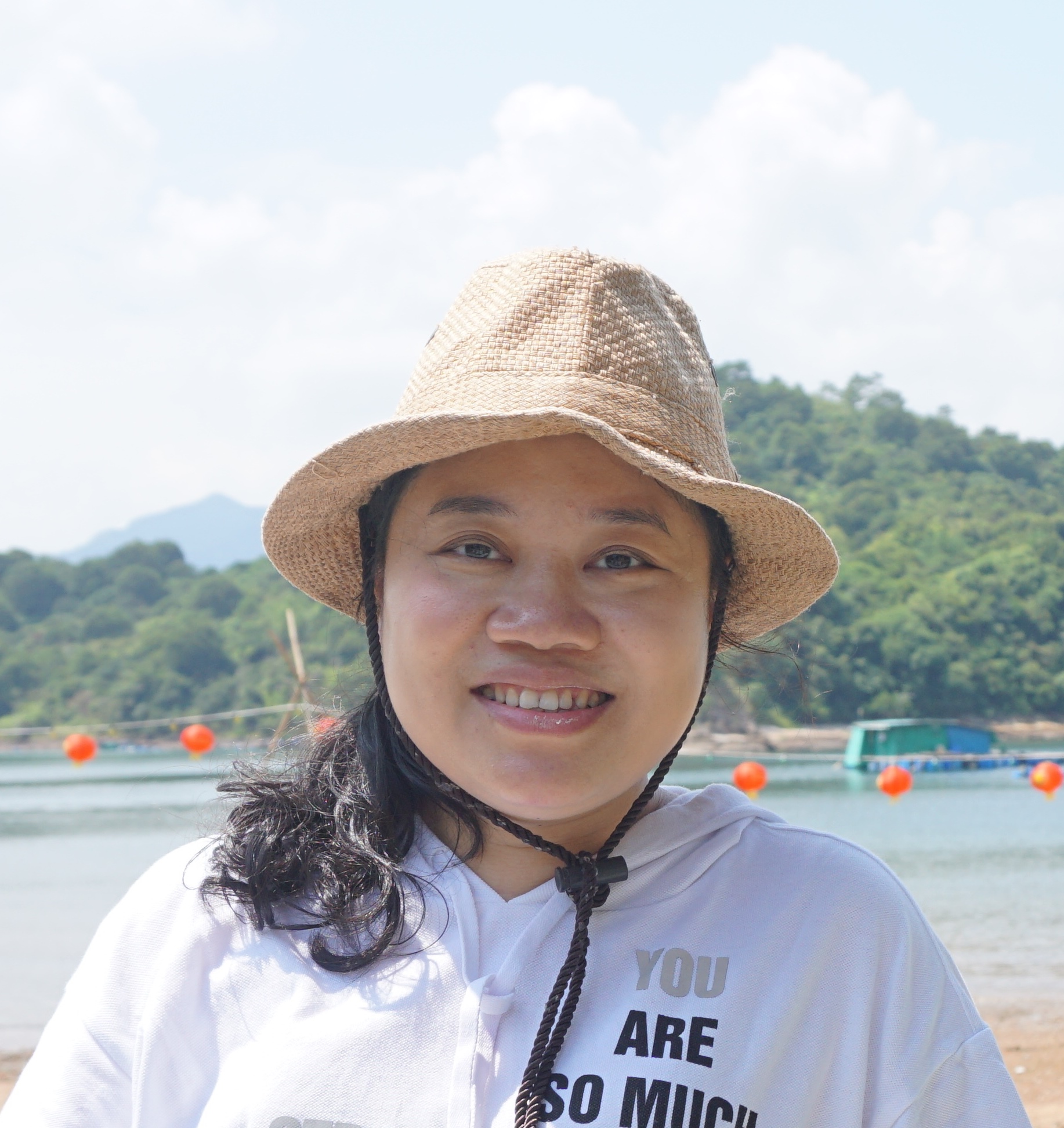 porcelain. In the South China Sea No. 1 Shipwreck, a very distinctive type of small-mouth jar (also called ‘mercury jar’) was found in the cabin. This talk will examine an ongoing debate regarding what this type of jar contained for export: rice beer? Mercury? Gun powder or just an empty container? Why were these jars distributed widely near the ports or districts along the sea route? This talk will shed light on our new understanding of the social life of jars across the seas and various drinking cultures from East Asia to Southeast Asia.
porcelain. In the South China Sea No. 1 Shipwreck, a very distinctive type of small-mouth jar (also called ‘mercury jar’) was found in the cabin. This talk will examine an ongoing debate regarding what this type of jar contained for export: rice beer? Mercury? Gun powder or just an empty container? Why were these jars distributed widely near the ports or districts along the sea route? This talk will shed light on our new understanding of the social life of jars across the seas and various drinking cultures from East Asia to Southeast Asia.
Host: Veronica Walker
23rd November
Waterfronts, fishponds, ports: underwater archaeology researches in the submerged part of Roman villae maritimae
With Michele Stefanile, SSM-Scuola Superiore Meridionale, University of Naples Federico II
Abstract:
The villae maritimae along the Tyrrhenian coast of Italy are important testimonies of the Roman architecture during the Late Republican and Imperial Ages: their analysis allows us to understand how the Romans were able to build directly on rocky coasts and jagged promontories, often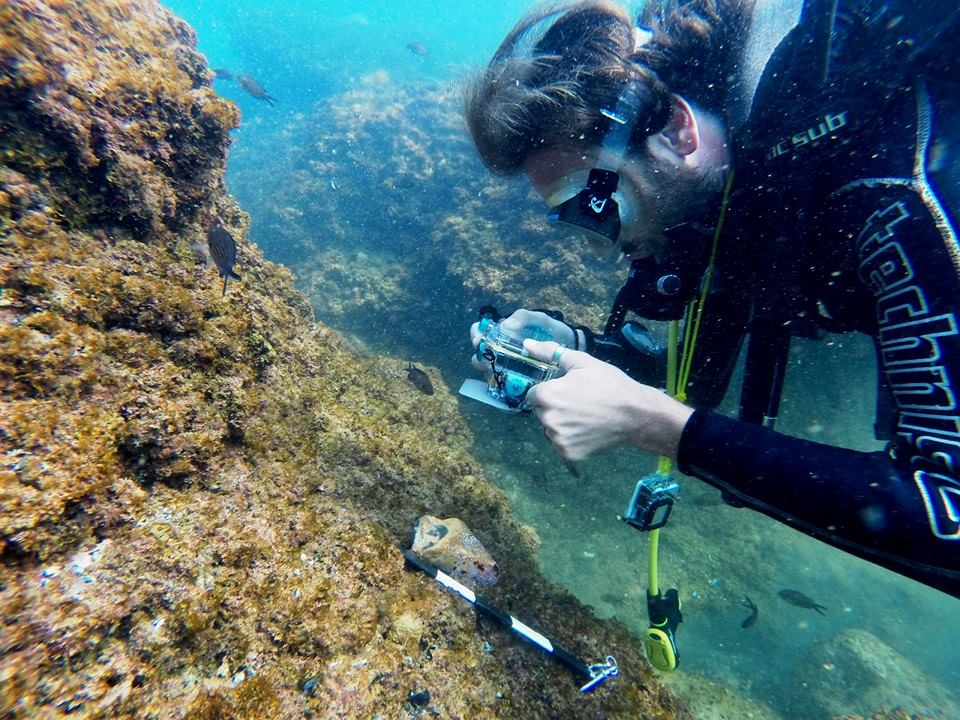 deeply changing the natural landscape. Despite a long and fruitful tradition of studies on the subject, the scholars rarely worked on what now lies below the sea level, where, actually, a considerable part of the most remarkable structures is: maritime infrastructures like fishponds, private ports or impressive waterfronts, often submerged because of the sea level rise, can offer valuable information about the Roman architecture and about the exploitation of marine resources. In this short talk we will provide new data from recent underwater archaeology researches in the submerged part of Roman maritime villas in Central and Southern Italy, in the sinus Formianus and in the Gulf of Naples.
deeply changing the natural landscape. Despite a long and fruitful tradition of studies on the subject, the scholars rarely worked on what now lies below the sea level, where, actually, a considerable part of the most remarkable structures is: maritime infrastructures like fishponds, private ports or impressive waterfronts, often submerged because of the sea level rise, can offer valuable information about the Roman architecture and about the exploitation of marine resources. In this short talk we will provide new data from recent underwater archaeology researches in the submerged part of Roman maritime villas in Central and Southern Italy, in the sinus Formianus and in the Gulf of Naples.
Host: Kristin Ilves
7th December
Non-instrument Navigation and Inter-island Voyaging in the Pacific
With Rick Feinberg, Kent State University (Prof. Emeritus)
Abstract:
The Pacific is our planet’s largest ocean, covering approximately one third of the Earth’s surface. Scattered through that vast expanse are thousands of islands and archipelagoes. Many are but tiny specs, and they are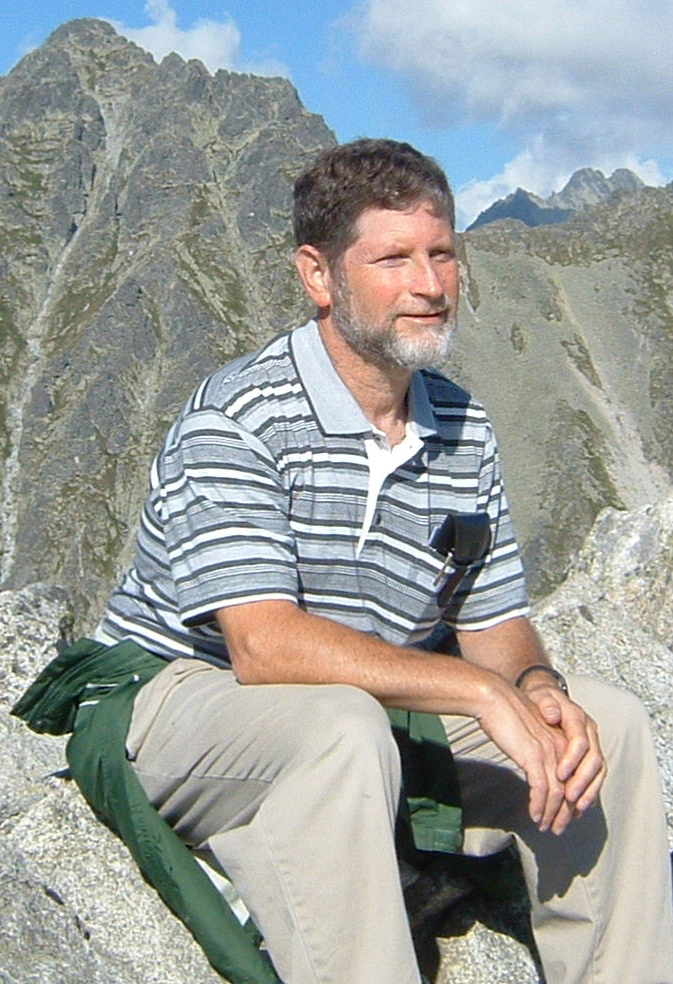 often hundreds of miles distant. Yet by the time of European contact, humans had settled virtually every habitable isle. That realization led to centuries of speculation and debate over how Pacific islanders had reached their places of habitation. Popular theories ranged from Peter Buck (Te Rangi Hiroa)’s literal acceptance of Polynesian oral traditions to Andrew Sharp’s contention that disoriented wanderers arrived as a result accidental drift. Since the 1960s, anthropologists have undertaken systematic ethnographic study of communities where seafarers continue to rely on customary vessels and find their way across the sea without the aid of instruments. They have documented skills that allowed islanders to spread through the Pacific and sometimes engage in two-way voyages, thereby maintaining contact with their ancestral communities. This talk will review Western understandings of Pacific travel, examine the vessels upon which inter-island voyagers depended, and describe the techniques they used to find their way at sea when out of sight of land. I will draw in part on my own ethnographic studies of Anuta and Taumako Islands in the Solomons and Papua New Guinea’s Nukumanu Atoll.
often hundreds of miles distant. Yet by the time of European contact, humans had settled virtually every habitable isle. That realization led to centuries of speculation and debate over how Pacific islanders had reached their places of habitation. Popular theories ranged from Peter Buck (Te Rangi Hiroa)’s literal acceptance of Polynesian oral traditions to Andrew Sharp’s contention that disoriented wanderers arrived as a result accidental drift. Since the 1960s, anthropologists have undertaken systematic ethnographic study of communities where seafarers continue to rely on customary vessels and find their way across the sea without the aid of instruments. They have documented skills that allowed islanders to spread through the Pacific and sometimes engage in two-way voyages, thereby maintaining contact with their ancestral communities. This talk will review Western understandings of Pacific travel, examine the vessels upon which inter-island voyagers depended, and describe the techniques they used to find their way at sea when out of sight of land. I will draw in part on my own ethnographic studies of Anuta and Taumako Islands in the Solomons and Papua New Guinea’s Nukumanu Atoll.
Host: Veronica Walker
Speakers for the Spring of 2021 (Jan-Jun)
25th of January (11am)
Intensive Ethnographic Survey on Traditional Routes in Kosraean Culture
With Ashley Meredith, National Cultural Anthropologist at the National Archives of Culture and Historic Preservation (NACH), Federated States of Micronesia
Abstract:
Among the more than 600 islands in the Federated States of Micronesia (FSM), Kosrae is the second highest island. It is the easternmost island of the FSM and on edge of the Polynesian triangle. It is home to the lowest lying cloud forest and largest Ka tree (Terminalia carolinensis) forest in the world. This island, while a 42 square mile island with one road, boasts a network of traditional routes that may at first be invisible. Traditional routes contain markers of important geography, astronomy, and animals. They can reflect sea and air lanes, footpaths, trails which may be part of distribution, ritual, creating maps and charts, or demonstrating character. The guiding research questions for this intensive ethnographic survey on traditional routes in Kosraean culture include: (1) What is considered a traditional route? (2) Where are these traditional routes? and (3) For what were these routes used? During this survey, our team conducted semi-structured interviews with elders and explored with Kosraean youth some of the cartographic building blocks for contemporary navigation technology and the ways the students navigate and remember traditional routes season after season. This talk will review a history of traditional routes on Kosrae and their connections within the FSM. This will be followed by a discussion of recent data collected and what it meant for Kosrae.
This island, while a 42 square mile island with one road, boasts a network of traditional routes that may at first be invisible. Traditional routes contain markers of important geography, astronomy, and animals. They can reflect sea and air lanes, footpaths, trails which may be part of distribution, ritual, creating maps and charts, or demonstrating character. The guiding research questions for this intensive ethnographic survey on traditional routes in Kosraean culture include: (1) What is considered a traditional route? (2) Where are these traditional routes? and (3) For what were these routes used? During this survey, our team conducted semi-structured interviews with elders and explored with Kosraean youth some of the cartographic building blocks for contemporary navigation technology and the ways the students navigate and remember traditional routes season after season. This talk will review a history of traditional routes on Kosrae and their connections within the FSM. This will be followed by a discussion of recent data collected and what it meant for Kosrae.
Host: Kristin Ilves
8th of February (11am)
The international legal protection of the underwater cultural heritage
with Mariano Aznar Gomez, Professor of Public International Law, University Jaume I, Spain
Abstract:
The international legal protection of the underwater cultural heritage (UCH) offers a clear example of legal complexities given the nature, the location and the uses of that heritage. As cultural objects, it is governed by international heritage law (mainly codified at UNESCO). As objects sometimes located at sea, the law of the sea as codified by UNCLOS does apply as well as some rules of maritime law. Depending on its location, under the sovereignty or jurisdiction of the coastal state or not, the domestic legislation of the latter may also apply. Finally, as objects, UCH may also have a private or public owner, may be a marine peril or deserve to be protected or managed for other reasons. To complete the sometimes contradictory and ambiguous regime for the UCH created by UNCLOS, States decided to negotiate the 2001 UNESCO Convention on the Protection of the Underwater Cultural Heritage around four main ideas: (i) the enhancement of this duty to protect and the organization of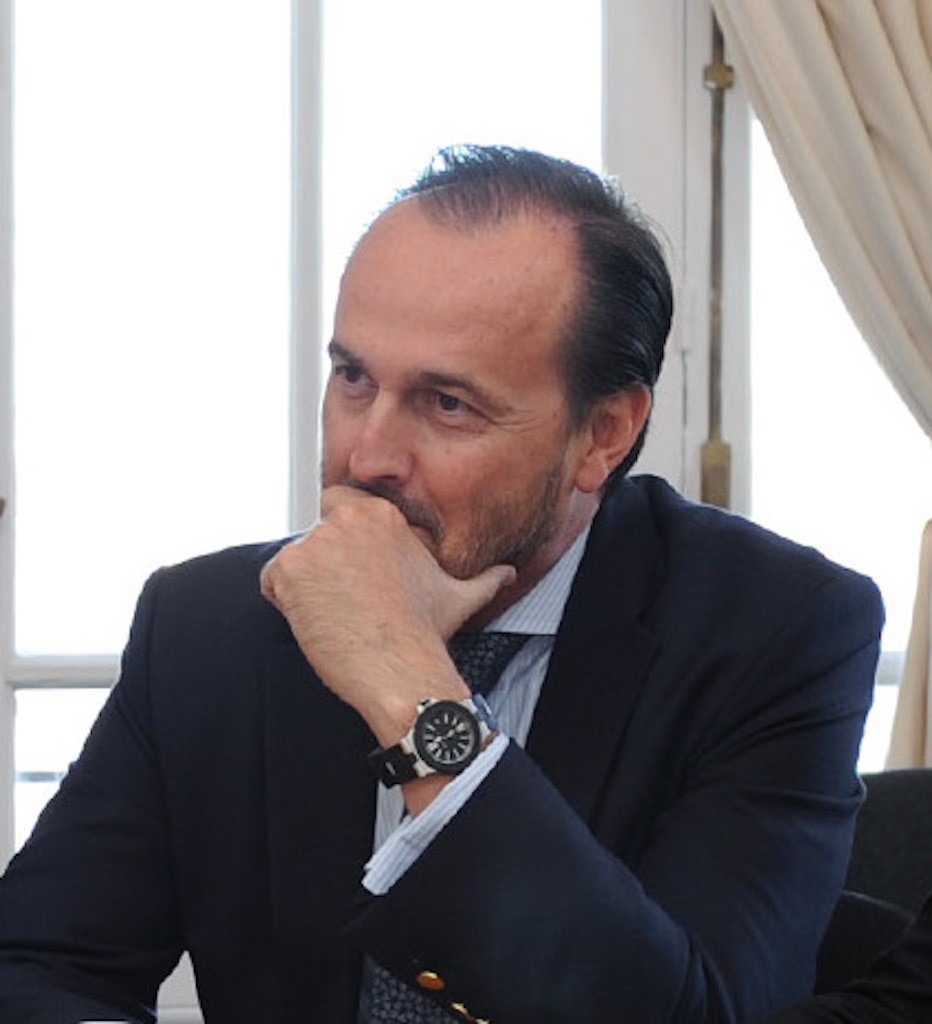 the duty to cooperate, (ii) the prohibition of commercial exploitation of UCH, (iii) the importance of a scientific approach to UCH avoiding the discussion on title upon that heritage, and (iv) the incardination of this new convention into a more ample and diverse canvas of laws and policies trying to preserve underwater heritage for future generations. This new convention has provoked, however, some criticisms; there are also some problems still existing which deserve a close legal scrutiny; and some challenges that need to be evaluated and, if possible, resolved.
the duty to cooperate, (ii) the prohibition of commercial exploitation of UCH, (iii) the importance of a scientific approach to UCH avoiding the discussion on title upon that heritage, and (iv) the incardination of this new convention into a more ample and diverse canvas of laws and policies trying to preserve underwater heritage for future generations. This new convention has provoked, however, some criticisms; there are also some problems still existing which deserve a close legal scrutiny; and some challenges that need to be evaluated and, if possible, resolved.
Host: Emilia Mataix Ferrandiz
22nd of February (11am)
Coastal Shrines and Transnational Maritime Networks across India and Southeast Asia
with Prof. Himanshu P. Ray, Oxford Centre for Hindu Studies, University of Oxford
The presentation will discuss her recent book of the same title, which breaks new ground by examining trans-oceanic connectivity through the perspective of coastal shrines and maritime cultural landscapes across the Bay of Bengal and the South China Sea. It covers a period of expanding networks and cross-cultural encounters from the 3rd century BCE to the 13th century CE. In her work, Ray examines the distinctiveness of these shrines, and highlights their interconnections, and their role in social integration in South and Southeast Asia. By drawing on data from shipwreck sites, the author elaborates on the material and religious intersections and transmissions between cultures across the seas. Many of these coastal shrines survived into the colonial period when they came to be admired for their aesthetic value as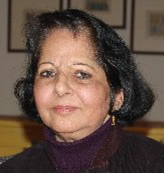 ‘monuments’. As nation states of the region became independent, these shrines were often inscribed on UNESCO’s World Heritage List on account of their Outstanding Universal Values. The book argues that in the 21st century there is a need to promote the cultural connectivity of the past as transnational heritage on UNESCO’s global platform to preserve and protect our shared heritage.
‘monuments’. As nation states of the region became independent, these shrines were often inscribed on UNESCO’s World Heritage List on account of their Outstanding Universal Values. The book argues that in the 21st century there is a need to promote the cultural connectivity of the past as transnational heritage on UNESCO’s global platform to preserve and protect our shared heritage.
8th of March (11am)
Are boats still for boys? Celebrating Women in maritime archaeology
Round-table discussion with Riikka Tevali, Christin Heamägi, and Kristin Ilves, hosted by Veronica Walker Vadillo
Abstract
In her provocative article: “Boats are for Boys: queering maritime archaeology”, Jesse Ransley opened up by saying: “Seafaring, both historic and prehistoric, fishing, trading, exploring and colonizing – the business of boats, ships and the sea – have for a long time now all been portrayed as masculine endeavours. Maritime activity is about physical strength, endurance, adventure and danger. The ocean is big, unpredictable and unforgiving. In taking to the seas you are risking your life, battling the elements, using the best of science and human design to improve your odds, while always challenging nature. These are ‘manly’ struggles. The sea and boats – it is what men do.”
In this 8th of March we want to re-examine Ransley’s 2005 article and discuss women in the field of maritime archaeology, both as creators and subjects of the field. We will pay homage to the figures of Joan du Plat Taylor and Honor Frost, and discuss how the field has changed since the first scientific excavation of a shipwreck site in Cape Gelidonya in 1960.
We are very pleased to have Christin Heamagi, Riikka Tevali, and Kristin Ilves as discussants of this round table hosted by Veronica Walker Vadillo.
Christin Heamagi (UK) has been working for Maritime Archaeology Ltd since early 2009. She initially trained as an archaeologist at the University of Stockholm and Sodertorn University followed by a Masters in Maritime Archaeology from the University of Southampton. Christin is currently focused on providing archaeological support to a wide range of marine projects, including wind farm and other offshore developments.
Riikka Tevali (FI) is a maritime archaeologist. She has worked many years with the Finnish Heritage Agency in various projects, excavations and surveys. Currently, she is working on her PhD at the University of Helsinki, which concentrates on the medieval maritime networks in the Finnish archipelago.
Kristin Ilves (EST/FI) is an Assistant Professor in Maritime Archaeology at Helsinki University. Interested in maritime cultural landscapes, she is currently focusing in relating climate, environment, and culture change to each other and is particularly drawn to the construction of island identities.
The image pays homage to Anna Shchetinina, the first-ever female captain of a merchant marine vessel in 1935 at age 27.
22nd of March (11am)
Re-imagining the use of traditional watercraft in the Aegean Sea for a sustainable environment and economy
with Katerina Velentza, Kone Fellow, University of Helsinki
Abstract
This paper explores the main goals of a new research project that envisages the use of traditional watercraft as a step towards a more sustainable environment and economy in the Aegean Sea, in Greece. The project will start by documenting the changes in the use of traditional watercraft and particularly the shift from wooden non-fuel boats to polluting motorboats as it occurred during the 20th and 21st centuries. Secondly, the research will attempt to determine the socio-political circumstances that led to this transition, as well as the impact of this change on the local economies, the coastal communities and the marine environment of the Aegean. Finally, the project will assess the possibility of a successful re-introduction of traditional watercraft and the impact of such action to the local communities, economies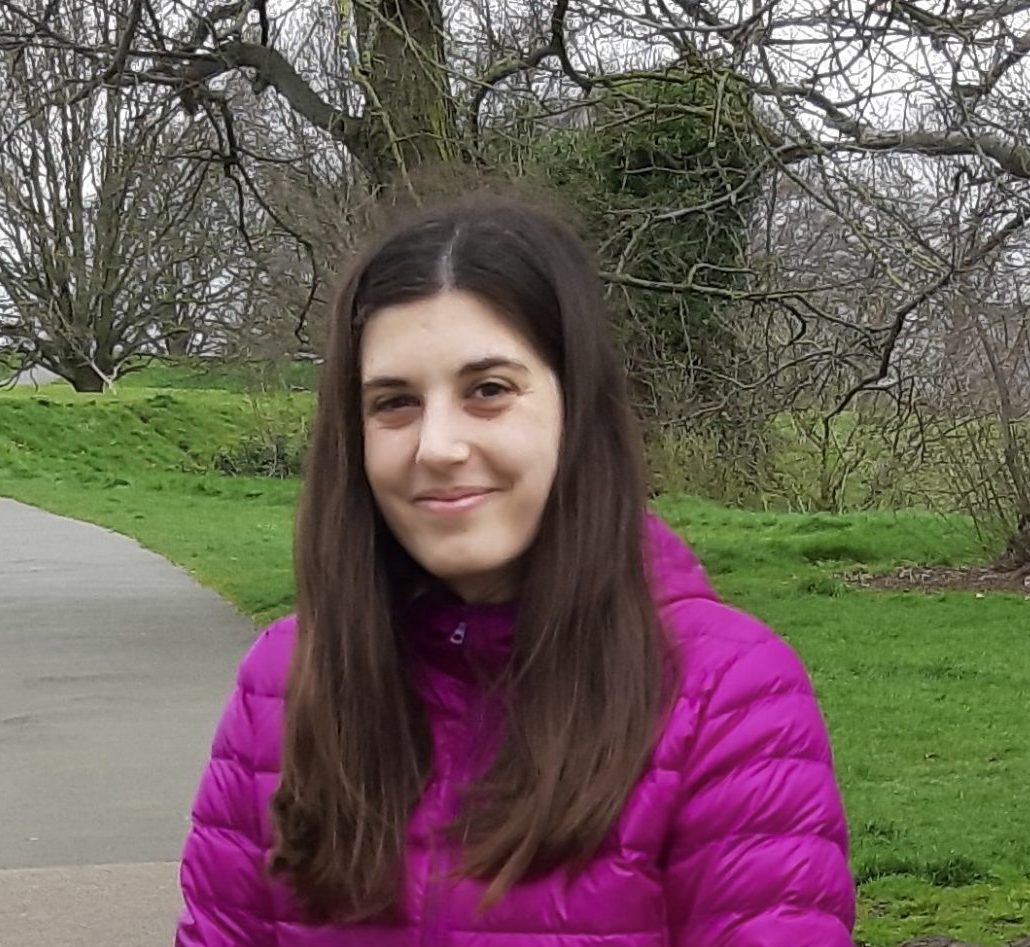 and the natural environment. Overall, this project examines issues of environmental and economic sustainability from the scopes of maritime history, archaeology and ethnography highlighting the importance of humanities in dealing with the climate emergency that the planet is currently facing.
and the natural environment. Overall, this project examines issues of environmental and economic sustainability from the scopes of maritime history, archaeology and ethnography highlighting the importance of humanities in dealing with the climate emergency that the planet is currently facing.
Host: Kristin Ilves
Monday, 5th of April, 11am Helsinki, 10am (CET)
Fish, salting vats & amphorae: archaeological studies on Roman Garum
With, Darío Bernal-Casasola
Full Professor in Classical Archaeology. University of Cádiz (Spain)
Abstract:
With a great tradition that has its roots in the Phoenician-Punic world and in Classical Greece, garum was one of the most consumed and famous products of Classical Antiquity, from the emperor’s table to the soldiers’ barracks at the farthest points in the limes of the Roman Empire. A fermented fish sauce currently non-existent in our european diet, but comparable to those consumed in the Far East (Vietnam, Cambodia, Thailand…). Its main manufacturing area was the Strait of Gibraltar, where it was produced in the numerous urban and rural fish-salting factories (so called cetariae). The University of Cádiz in Andalusia has spent two decades studying from an interdisciplinary perspective the various phases of the Roman fishing-canning chain, also known as the “halieutic cycle”: determination of marine resources; knowledge of fishing gear; food production; transport; sale and consumption.
This talk will reflect on the research methodology of these ancient Roman sauces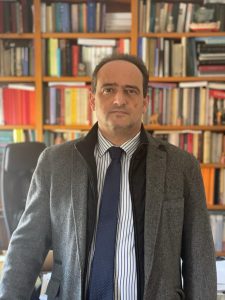 , which necessarily includes an interdisciplinary approach (archeology, archaeozoology, palynology, biomolecular studies and food technology). Archaeological examples from the Hispano-Roman city of Baelo Claudia (current Tarifa, province of Cádiz, Spain), on the coasts of the old Baetica will be shown to illustrate the works, the achievements and the pending subjects.
, which necessarily includes an interdisciplinary approach (archeology, archaeozoology, palynology, biomolecular studies and food technology). Archaeological examples from the Hispano-Roman city of Baelo Claudia (current Tarifa, province of Cádiz, Spain), on the coasts of the old Baetica will be shown to illustrate the works, the achievements and the pending subjects.
19th of April, 17:00 in Helsinki, 09:00 in Mexico DF, 15:00 in London
Theoretical approaches to the Archaeology of Manila Galleons. The case of the excavations at the port of Acapulco
with Prof. Roberto Junco, Instituto Nacional de Antropologia e Historia, Mexico
Abstract
The Archaeology of Manila Galleons can be approached from several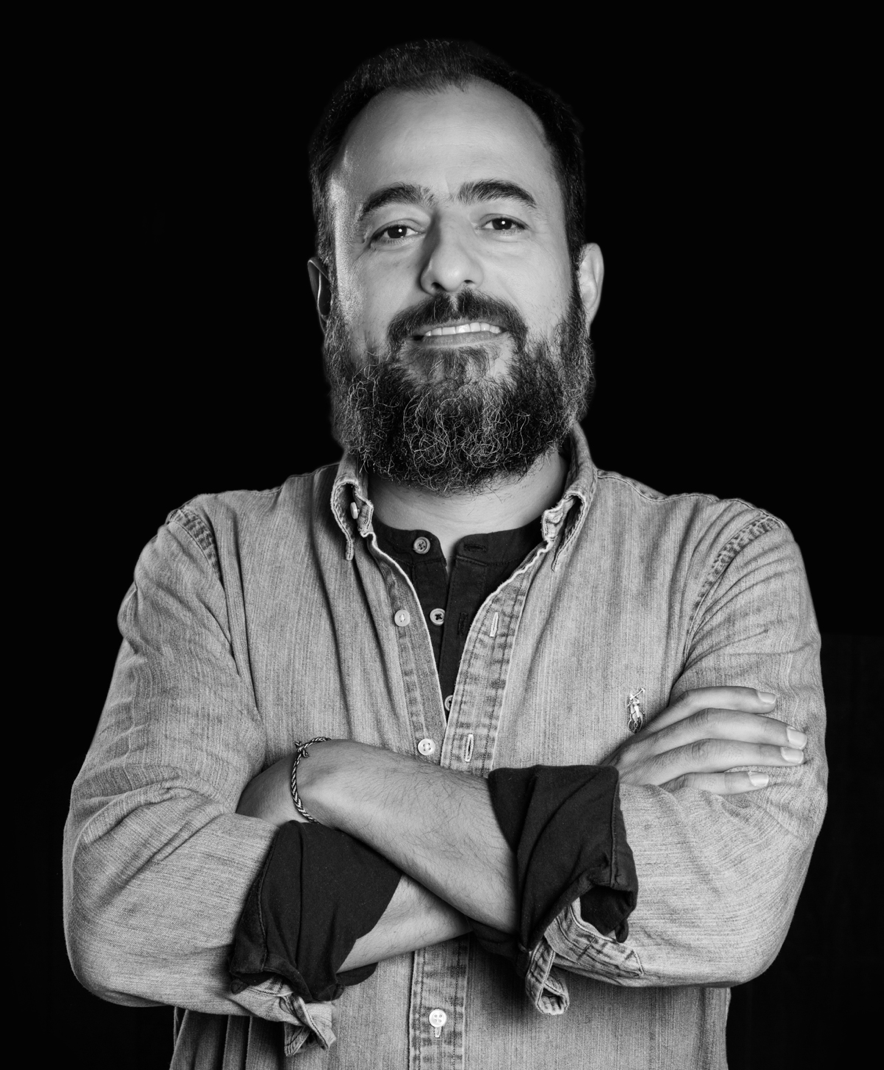 theoretical perspectives. In the current excavations at Acapulco, several theoretical concepts are being applied to understand the archaeological record. The product of these exercises helps elucidate the complex dynamics of the port and its social life. Cyclical events, baroque music, and the archaeology of the senses are concepts that can be used to understand better the daily life of the port and the Manila Galleon’s impact on the social sphere in its complexity. Although this attempt is an in-process exercise, several ideas are exposed in this presentation.
theoretical perspectives. In the current excavations at Acapulco, several theoretical concepts are being applied to understand the archaeological record. The product of these exercises helps elucidate the complex dynamics of the port and its social life. Cyclical events, baroque music, and the archaeology of the senses are concepts that can be used to understand better the daily life of the port and the Manila Galleon’s impact on the social sphere in its complexity. Although this attempt is an in-process exercise, several ideas are exposed in this presentation.
17th of May, 13:00 in Helsinki, 18:00 in Guangzhou, 11:00 in London
Investigating, Protecting and Promoting Underwater Cultural Heritage in the Water Kingdom: a new Sino-Cambodian Approach
with Sarah Ward, Visiting Professor, Dalian Maritime University, China
Having ratified the 2001 UNESCO Convention for the Protection of the Underwater Heritage in 2007 and implemented that Convention into local legislation the same year, the Kingdom of Cambodia, a small Southeast Asian nation with a territorial sea comparable in size to that of the Netherlands, has taken proactive action to conserve and sustainably manage its ocean, and the rich record of human history that lies lost beneath the waves.
Located along the ancient Maritime Silk Route, in the transit zone between China and west, Cambodia’s coastal zone is a crossroad of human activity that has served as a vector of maritime cultural interaction, economic trade and exchange, and the transmission of geopolitical knowledge for more than a millennia. In recognition of the vital role that the ethical protection of Underwater Cultural Heritage plays in sustainable ocean management, China and Cambodia established a 5-year Underwater Cultural Heritage Cooperation Program. A bilateral call to action, this significant Ocean Decade initiative aims to protect Cambodia’s Underwater Cultural Heritage through the location, identification, investigation, preservation and promotion of this unique underwater archaeological archive.
Join us Down by the Water on Monday 17 May as Sarah introduce’s the “China Cambodia Underwater Cultural Heritage Research Cooperation Program”, its aims and objectives. She will talk through the program’s four-pronged approach; capacity building, research, promotion and protection; the three primary investigation sites; and explain how the program came to pass. Sarah will pose more questions than she will answer, but that’s where you come in! Just us for an engaging, insightful, collaborative webinar about the beginnings of underwater archaeology in Cambodia, the water kingdom.
Bio
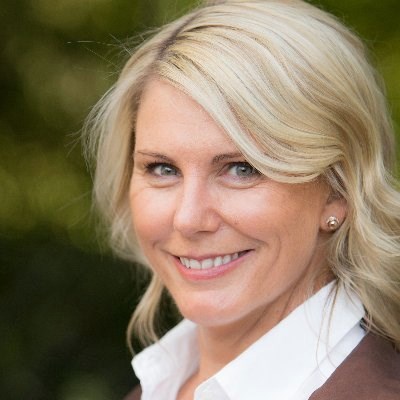
Sarah WARD is Visiting Professor of Maritime Archaeology at Dalian Maritime University (DMU)’s Centre for Maritime History and Culture Research. A Maritime Archaeologist with 21 years of professional experience and more than 200 books, reports and publications to her name, Sarah is the lead archaeologist on DMU’s prestigious Chinese National Research Project investigating the Globalisation of Sino-foreign Maritime Cultural Exchange (Ocean Cultures), an Explorers Club Fellow, UNESCO Expert, Nautical Archaeology Society Senior Tutor and former MIT Ocean Discovery Fellow. She is also Co-Director of the brand new China-Cambodia Underwater Cultural Heritage Research Cooperation Program, the topic of today’s presentation. Sarah has been based in China since 2018.
Host: Veronica Walker Vadillo
31st of May
LA ARQUEOLOGÍA SUBACUÁTICA EN ESPAÑA (in spanish)
with Xavier Nieto Prieto, Coordinador de arqueología náutica y subacuática en Campus de Excelencia Internacional del Mar / Universidad de Cádiz. UNESCO
Los cambios políticos y administrativos ocurridos en España durante losaños 70 del siglo XX marcaron también un hito en el campo de la arqueología subacuática. Entre los cambios transcendentes destacamos dos:
* La promulgación de la ley 16/1985 de Protección de Patrimonio Histórico Español. En esta ley, por primera vez de equiparan, a efectos legales, el patrimonio arqueológico terrestre y el subacuático.
* El Estado español se organiza administrativamente en Comunidades Autónomas y el gobierno central traspasa a los diversos gobiernos autonómicos las competencias sobre el Patrimonio Histórico.
Estos dos hechos posibilitaron que, a partir de la década de los años 80, se crearan en España diversos organismos especializados en arqueología subacuática, que se dotaron de personal y de medios que contribuyen a un incremento substancial de la actividad arqueológica subacuática (En 1982 el Museo y Centro Nacional de Arqueología Subamarina dependiente del Ministerio de Cultura. En 1981 el Centre d’Arqueología Subacuática de Catalunya. En 1996 el Centred’Arqueologia Subaquàtica de la Comunitat Valenciana y en 1997 el Centro de Arqueología Subacuática de Andalucía). Estos centros y otras empresas y grupos de arqueólogos han llevado a cabo trabajos de investigación, difusión y gestión que pretendemos sintetizar en esta conferencia centrándonos especialmente en los trabajos actualmente en curso.
Bio:
Professor Nieto got his doctorate in prehistory and ancient history at the Universidad Autónoma de Barcelona en 1991. Since 1981 until now, professor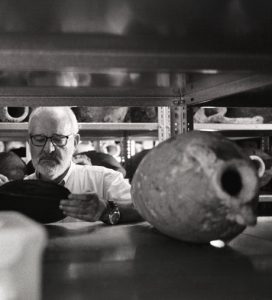 Nieto has been the director from the centre of underwater archaeology from Catalonia (Spain). Since 1998, he was an associate professor at the University of Barcelona, and since 2010 until 2013, he was the director of the national museum of underwater archaeology from Spain (ARQUA). He was the Head of the UNESCO mission to Haiti in 2014 and in Panama in 2015 to prepare reports on acts of plunder by treasure hunters.
Nieto has been the director from the centre of underwater archaeology from Catalonia (Spain). Since 1998, he was an associate professor at the University of Barcelona, and since 2010 until 2013, he was the director of the national museum of underwater archaeology from Spain (ARQUA). He was the Head of the UNESCO mission to Haiti in 2014 and in Panama in 2015 to prepare reports on acts of plunder by treasure hunters.
From April 2015 to April 2019, he was the member of the Scientific and Technical Advisory Council of UNESCO for the 2001 Convention on Underwater Cultural Heritage (STAB) and vice-president from 2017 to 2018.
From March 2015 to September 2017. Nowadays, he is the coordinator of Nautical and Underwater Archeology of the International Center of Excellence of the Sea (CEIMAR) at the University of Cádiz. He is also the creator of the master’s degree in Nautical and Underwater Archeology at the University of Cádiz. Professor Nieto is the co-director or member of eight European projects on the subject, especially within the Interreg III program of the European Union. Since 1976 he has participated or directed some thirty underwater archeology campaigns in Spain, Turkey, Italy, France, Morocco, Haiti, Panama. He is the author of some 13 monographic books and more than 100 articles, mainly on underwater archeology.
Video link: https://www.facebook.com/4DownByTheWater/videos/2953755381580563
Speakers of the Fall 2021
20th of September, 11:00-12:30 in Helsinki, 12:00-13:30 in London
Kutaisi before the Greeks
With Dr. Marta Lorenzon, University of Helsinki
This contribution synthesizes the results of the Kutaisi Archaeological Landscape Project (EKAL), directed by Jacek Hamburg and Roland Isakadze,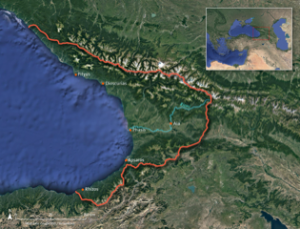 focusing on the analysis of the development of settlements patterns and fluvial connections in the Colchis lowlands during the 2nd and 1st millennia BC. The three sites identified within the Kutaisi urban area, Gabashvili, Dateshidze, and Bagrati, provided new information on earthen architectural practices, defensive structures and canal system that characterised the Colchis settlements of the period. The results of our investigation indicate a distinctive architectural vernacular traditions in Colchian marsh areas that make the role of Kutaisi in the region importnat to understand LBA/EIA building practices, their continuity over time and environmental sustainability in a marsh areas.
focusing on the analysis of the development of settlements patterns and fluvial connections in the Colchis lowlands during the 2nd and 1st millennia BC. The three sites identified within the Kutaisi urban area, Gabashvili, Dateshidze, and Bagrati, provided new information on earthen architectural practices, defensive structures and canal system that characterised the Colchis settlements of the period. The results of our investigation indicate a distinctive architectural vernacular traditions in Colchian marsh areas that make the role of Kutaisi in the region importnat to understand LBA/EIA building practices, their continuity over time and environmental sustainability in a marsh areas.
Marta Lorenzon is an archaeologist and architectural specialist. She is currently the vice-leader of ANEE’s Team 3 and a university researcher in the  Faculty of Arts. Her research concentrates on developing an interdisciplinary methodology in the study of ancient architecture, combining geoarchaeology, ethnoarchaeology and social anthropology. Since 2005 she has worked in the Mediterranean region, in the Americas and Asia with a research focus in earthen architecture, knowledge of production, conflict archaeology and identity construction. Her core expertise lies in the archaeology of architecture, geo-ethnoarchaeology, and community outreach. Currently, Lorenzon’s research at ANEE concentrates primarily on the built environment as a key instrument to investigate the process of identity creation in ancient and modern times, the relationship between power and architecture in the first millennium BCE Near East, and the use of computational archaeology in diachronic settlements analysis.
Faculty of Arts. Her research concentrates on developing an interdisciplinary methodology in the study of ancient architecture, combining geoarchaeology, ethnoarchaeology and social anthropology. Since 2005 she has worked in the Mediterranean region, in the Americas and Asia with a research focus in earthen architecture, knowledge of production, conflict archaeology and identity construction. Her core expertise lies in the archaeology of architecture, geo-ethnoarchaeology, and community outreach. Currently, Lorenzon’s research at ANEE concentrates primarily on the built environment as a key instrument to investigate the process of identity creation in ancient and modern times, the relationship between power and architecture in the first millennium BCE Near East, and the use of computational archaeology in diachronic settlements analysis.
Images: courtesy of Marta Lorenzon
- Host: Emilia Mataix Ferrandiz
11th October 11:00-12:30 in Helsinki, 10am CET
From Aksum to India: new perspectives on Indian Ocean maritime archaeology
With Dr. Marike van Aerde, Leiden University
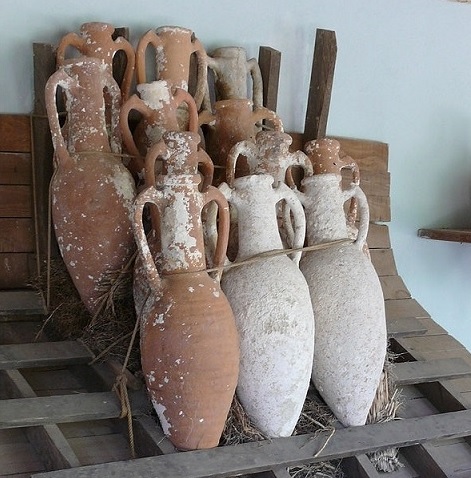
Abstract
Archaeological studies of ancient Indian Ocean trade have traditionally and predominantly focused on Indo-Roman sources and connections, but recent multiregional research and scientific analyses show that from ca. 300 BCE a majority of maritime trade traffic revolved around nodal points to and from the Indian Subcontinent, from the time of the Maurya kingdom onwards. This seminar discusses several new findings concerning maritime sites from both the Indian west coast, the Arabian Peninsula, and the African east coast in order to more comprehensively and factually reconstruct maritime trade and exchange routes in the ancient world – and subsequently to raise new perspectives for trans-regional interpretative research and discourse beyond the more traditional Mediterranean paradigms.
Marike van Aerde is Assistant Professor World Archaeology at Leiden University. She specializes in the archaeology of trade routes between the Indian Subcontinent and East Africa up to the mid-1st millennium CE. She works with an international team as part of her research project Routes of Exchange, Roots of Connectivity, focused on multiregional sites and datasets across the Indian Ocean region. Her research has a strong interdisciplinary component, including ceramics studies, chemical analysis, satellite and LiDAR, and database analyses. Her publications include studies of Indian Ocean trade networks, ancient Egyptian, Aksumite and Indian ports, and the documentation and preservation of rock art from the Karakorum Himalaya mountains. She appears regularly at international conferences and actively pursues Open Access and Heritage initiatives. She frequently works together with the Antiquities Museum in Leiden (RMO) for public outreach programs, and maintains international collaborations with universities and institutes in India, Sri Lanka, Pakistan and Egypt.
works with an international team as part of her research project Routes of Exchange, Roots of Connectivity, focused on multiregional sites and datasets across the Indian Ocean region. Her research has a strong interdisciplinary component, including ceramics studies, chemical analysis, satellite and LiDAR, and database analyses. Her publications include studies of Indian Ocean trade networks, ancient Egyptian, Aksumite and Indian ports, and the documentation and preservation of rock art from the Karakorum Himalaya mountains. She appears regularly at international conferences and actively pursues Open Access and Heritage initiatives. She frequently works together with the Antiquities Museum in Leiden (RMO) for public outreach programs, and maintains international collaborations with universities and institutes in India, Sri Lanka, Pakistan and Egypt.
Images: courtesy of Marike van Aerde
- Host: Emilia Mataix Ferrandiz
18th October 11:00-12:30 in Helsinki and Israel, 17:00-18:30 in Tokyo
A Japanese Domestic Freighter Lost Circa 1700
With Prof. Akifumi Iwabuchi, Tokyo University of Marine Science and Technology (Japan)

The wooden shipwreck of a domestic freighter was discovered at the depth of 20m off of Hatsushima island in front of Atami city, eastern Japan. Since 2010 Tokyo University of Marine Science and Technology (TUMSAT) and the Asian Research Institute of Underwater Archaeology (ARIUA) have conducted underwater archaeological survey and historical research on the wreck, with the help of ARIUA scientific divers, TUMSAT graduate students, foreign volunteer archaeologists, and self-made AUV or ROV. The original vessel carried roof tiles to Edo castle or grinding bowls from western Japan, many of which are scattered on the seabed, and its pine wood hull is still half-buried. According to the typological analysis on its cargo, this freighter seems to have been lost circa 1700. Because the cargo of roof tiles is always in danger of being stolen by treasure-hunters, TUMSAT and ARIUA have recovered some outstanding gargoyle roof tiles, having installed their accurate replicas as substitute on the seabed.
Akifumi Iwabuchi is Professor of Maritime Anthropology and Nautical Archaeology at Tokyo University of Marine Science and Technology, which is a member institution of the UNESCO UNITWIN Network for Underwater Archaeology. He is the ICOMOS-ICUCH National Representative for Japan, a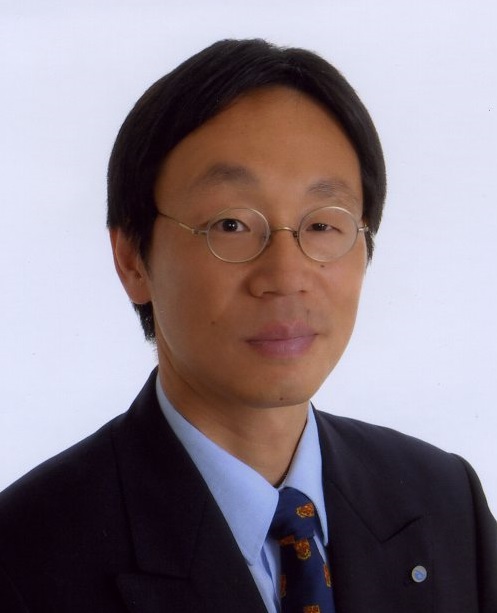 Vice-President of the Japan Society for Nautical Research, and a Director of the Asian Research Institute of Underwater Archaeology at Fukuoka. He received his DPhil form the University of Oxford in 1990. On the basis of fieldworks conducted in Southeast and East Asia, the South Seas, and Europe, he has published numerous articles and books, which deal mainly with insular ethnic groups and their material culture or colonial history, including The People of the Alas Valley or Cultural Heritage under the Sea that is the first comprehensive introductory book of underwater archaeology and the 2001 UNESCO Convention in the Japanese language.
Vice-President of the Japan Society for Nautical Research, and a Director of the Asian Research Institute of Underwater Archaeology at Fukuoka. He received his DPhil form the University of Oxford in 1990. On the basis of fieldworks conducted in Southeast and East Asia, the South Seas, and Europe, he has published numerous articles and books, which deal mainly with insular ethnic groups and their material culture or colonial history, including The People of the Alas Valley or Cultural Heritage under the Sea that is the first comprehensive introductory book of underwater archaeology and the 2001 UNESCO Convention in the Japanese language.
Images: courtesy of Akifumi Iwabuchi
- Host: Veronica Walker Vadillo
1st of November, 14:00-16:00 in HKL, 13:00-15:00 in Paris
Building Communities of Academics and Stakeholders to Address Climate Change
With Prof. Em. Carole Crumley, Executive Director of the History and Future of People on Earth (IHOPE), University of North Carolina/ Uppsala University
Abstract
Marine archaeologists and historical ecologists can find much common ground in the race to mitigate climate change and catastrophic disruptions in both the Earth system and for humanity. The talk will examine shared professional origins and an expanding common toolbox. In dialogue, we can explore the means by which our mutual understandings can be transmitted to stakeholders, managers, and policy makers.
Carole Crumley is a founding scientist in the area of historical ecology and has written the first text book in this subject, Historical Ecology: Cultural Knowledge and Changing Landscapes (1994). Carole Crumley’s special areas of interest are epistemology of complex adaptive systems, especially as regards human societies; “Two Cultures” (science/humanities) problems in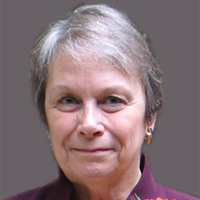 inter- and transdisciplinary research; integrated global- to local-scale historical ecology; historical climate change; evolution of landscapes; social inequality; social memory; geomatics (e.g., GIS, RS) applications in anthropology, ecology, and planning. Her research interests focus on Western Europe, where she directs a long-running research project (1975-present), and pursued with her students, in Burgundy, France. The research traces the history of agriculture and industry in a key European region over a three thousand year period, using archaeology, historical documents and maps, ethnography, and environmental data in a GIS database. The project’s ethnographic component is large, and is focused on the practice of contemporary agro-pastoralism in the contexts of a rapidly changing global market and a complex regulatory environment (e.g., the EU Common Agricultural Policy, French regulations).
inter- and transdisciplinary research; integrated global- to local-scale historical ecology; historical climate change; evolution of landscapes; social inequality; social memory; geomatics (e.g., GIS, RS) applications in anthropology, ecology, and planning. Her research interests focus on Western Europe, where she directs a long-running research project (1975-present), and pursued with her students, in Burgundy, France. The research traces the history of agriculture and industry in a key European region over a three thousand year period, using archaeology, historical documents and maps, ethnography, and environmental data in a GIS database. The project’s ethnographic component is large, and is focused on the practice of contemporary agro-pastoralism in the contexts of a rapidly changing global market and a complex regulatory environment (e.g., the EU Common Agricultural Policy, French regulations).
Carole is also Executive Director of the international project Integrated History and Future of People on Earth (IHOPE), which uses a complex systems framework and the tools of historical ecology to integrate knowledge of past human societies with knowledge of past biophysical conditions. This integrated analysis enables modeling old-and-new possibilities for a sustainable planetary and human future. IHOPE is a global network of researchers and research projects; its International Program Office (IPO) is based at Uppsala University in Sweden.
Images: courtesy of Carole Crumley
- Host: Veronica Walker Vadillo
15th of November, 14:00-16:00 in HKL, 13:00-15:00 in Paris
Skippers and entrepreneurs: The shipmasters of pre-modern Insular Southeast Asia
With Prof. Em. Pierre-Yves Manguin, École française d’Extrême-Orient
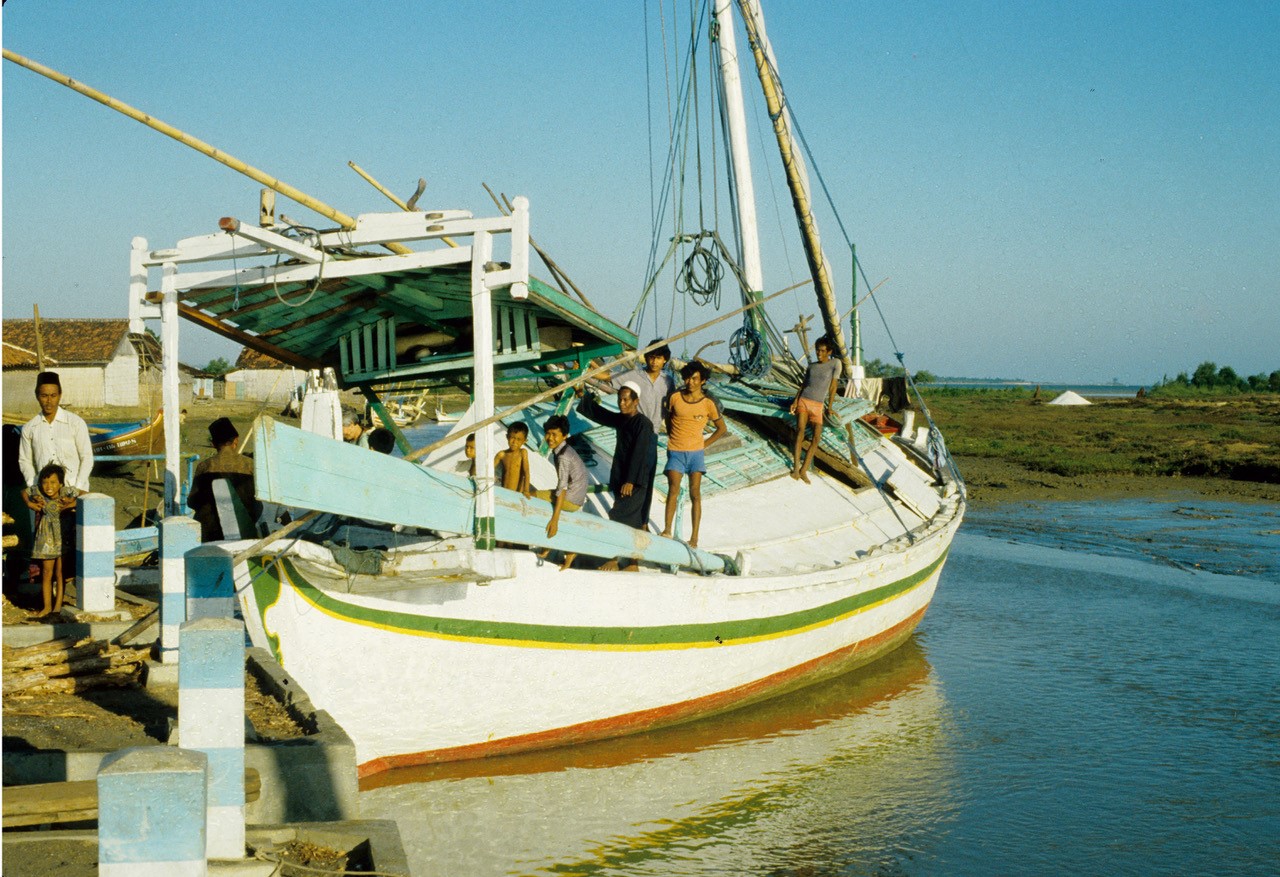
Abstract
Shipmasters played a crucial role in long distance exchange networks of Asian seas, as evidenced by early historic and medieval epigraphic and textual sources. In Insular Southeast Asia, their action is moreover intimately associated with the state formation process of coastal polities. Between the 5th and the 18th century, their position is documented in local epigraphy, as well as in Malay, Chinese, Arabic and Indian textual sources. Owners of trading ships and investors in part of their cargoes, these “masters of the ship” appeared under designations of various origins, which all partook of one single semantic field: mahānavika (Sanskrit), puhawang (Austronesian), nakhoda (Arabo-Persian). In the Malay World, they belonged to a high status, non-noble class; alongside the “sea merchants”, they formed a social group that connected local political power to networks of overseas relationships and exchange, the very foundation of the merchant economy of coastal polities. Their distinct position in complex societies of Insular Southeast Asia makes them essential agents in the mainstream and early globalisation of Asian seas.
Speaker’s bio
Pierre-Yves Maguin is an emeritus professor and researcher at the École française d’Extrême-Orient (EFEO). His research is on the history of the sea front of pre-modern Southeast Asia, and more specifically on the study of the merchant networks in the China Seas and in the Indian Ocean, of their role in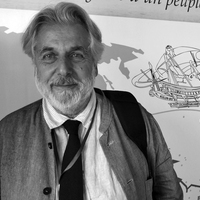 the constitution of political systems and of urbanization. During the course of various research actions, he has also studied the perceptions that coastal societies have of their history and their maritime environment, through the study of their vocabulary and their representations. He participated in a multidisciplinary research program on the population dynamic in Sumatra.
the constitution of political systems and of urbanization. During the course of various research actions, he has also studied the perceptions that coastal societies have of their history and their maritime environment, through the study of their vocabulary and their representations. He participated in a multidisciplinary research program on the population dynamic in Sumatra.
At first based solely on written documents, his work began, starting in the 1980s, to draw more and more heavily on archaeology to fill in the blanks of the missing historical data. These archaeological dig programs, conducted in cooperation with Indonesian and Vietnamese researchers, were focused both on the merchant ships and the port cities of these two countries.
He thus directed archaeological missions in Sumatra on the port sites of the Sriwijaya period (7th to 13th centuries), as well as new explorations of these sites in 2010 and 2011. These research projects enabled him to finally prove beyond a doubt that G. Coedès had been right in placing the capital of Sriwijaya in Palembang. Above all, they contributed to the establishment of a solid chronology for the history of this great maritime State and helped prove that the tradition of the merchant cities of insular Southeast Asia dates back to the first millennium of the CE. This research then turned to the port site of Oc Eo, in the Mekong delta (1st to 7th centuries). Finally, up until 2007, he led a program on the Batujaya and Cibuaya sites (1st to 7th centuries), in West Java. These last two programs are focused on better understanding a period of Southeast Asian history that has been overlooked up until now, and during which the first political systems of the region, based on long-distance exchanges, are developed and progressively adopt cultural models imported from India.
Images: courtesy of Pierre-Yves Manguin
- Host: Veronica Walker Vadillo
Special Event sponsored by the Spanish Embassy in Helsinki
25th November 10:00-12:00 in Helsinki, Common Room of the Helsinki Collegium for Advanced Studies, PL 4 (Fabianinkatu 24), 00014 University of Helsinki
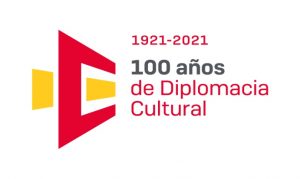
From the Atocha to the San José. Sunken Historic State Vessels and Spain’s Foreign Legal Policy
With, Mariano J. Aznar, University Jaume I (Castellón, Spain)
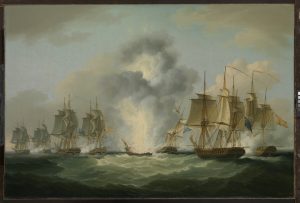
The conference will review the cases of findings of sunken Spanish State vessels (from Atocha to San José) to know the data, as well as indicate on the response of Spain to each case and its accommodation to the legal doctrine that Spain has adopted in relation to to the legal status of State ships. The cooperation efforts of Spain with third States, particularly the Latin-American States, will also be discussed.
Special Event co-organised with the center of excellence ‘Law, identity and the european narratives’
25th November 15:00-17:00 in Helsinki, Center of european studies, Siltavuorenpenger 1A; room 229, 00170 University of Helsinki
Maritime Claims and Underwater Archaeology. When History Meets Politics
To what extent can underwater archeology and underwater cultural heritage support a maritime claim by a State? Many States have plausibly extended their maritime legislative and executive jurisdiction to the outer limit of the contiguous zone to better protect underwater cultural heritage. However, some states —like Canada in the Arctic, China in the South China Sea or Russia in Crimea— are going farther claiming sovereignty over disputed maritime areas or, even, the high seas. This book, aimed at internationalists and archaeologists, tries to critically assess these recent practices from a legal, historical and ethical perspective, reviewing this search for buried sovereignty.
This talk constitute´s professor Aznar presentation of his most recent book published by Brill.
https://brill.com/view/title/61432?language=en
Mariano Javier Aznar Gómez
Since 2008, Mariano is Professor of Public International Law at the University Jaume I. He has published one monograph and numerous scientific articles on different aspects of the legal protection of underwater cultural heritage; he has given legal advice to the Spanish Government and to the UNESCO in different cases and missions, and acted as representative of Spain before the Meeting of States Parties of the 2001 UNESCO Convention, he has participated in the drafting of the Operational Guidelines of this Convention and the new Spanish Law on Maritime Navigation. Mariano has also been co-author of the Green Book for the Protection of the Spanish Underwater Cultural Heritage (2010), he acted as advocate and counsel of the Kingdom of Spain before the International Tribunal for the Law of the Sea in the M/V Louisa case, when the looting of UCH was discussed. Mariano has been visiting professor in different universities in Spain, Italy and France, and also been Visiting Fellow at the University of Cambridge where he is Life Member at Clare Hall College. Founder member of the European Society of International Law (ESIL) and member of its Board (2004-2012), Mariano is Editor-in-Chief of the Spanish Yearbook of International Law since 2013. He is also Consultant Scholar of Cultural Heritage Center at Penn University and Patron of the Spanish National Museum of Underwater Cultural Heritage (ARQVA). Member of ICOMOS/ICUCH.
29th November 11:00-12:30 in Helsinki and Israel, 10:00-12:30 in London
WW2 Submarine Wrecks in the Eastern Mediterranean (1939–1945)
With Dr. Federico Ugolini, The Leon Recanati Institute for Maritime Studies, Haifa (Israel); Haifa Center for Mediterranean History
Conflict archaeology has recently been the subject of much scholarly attention. An appreciable number of submarine wrecks have been identified in the Eastern Mediterranean since 1943, some in deep waters, thanks to the growing use of advanced underwater technologies, as well as to the work of professional divers, and some off coast, where underwater surveys have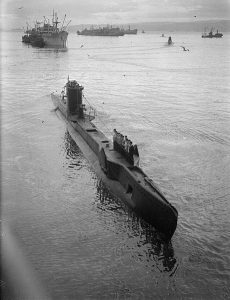 been undertaken. Nevertheless, little attention has been paid to these wrecks: despite being a key watercraft during WWII, submarine wrecks have neither been included in studies of maritime archaeology and history, nor considered for digital humanities and mapping purposes. Taking a region-wide approach, this preliminary study explores WWII submarine wrecks sunk in the Aegean, Ionian, Libyan and Levantine Seas in the Eastern Mediterranean, to provide a basis for an overall catalogue of all known submarine wrecks from 1939–1945, building on the seminal works of Giorgerini (2002), and the database from Helgason (1995), which aimed at categorizing submarines from Italy, Germany, and the United Kingdom, in the Atlantic and the Mediterranean. This study will provide the basis for a broader project that aims to create a database containing over 1,500 WWII submarine wrecks.
been undertaken. Nevertheless, little attention has been paid to these wrecks: despite being a key watercraft during WWII, submarine wrecks have neither been included in studies of maritime archaeology and history, nor considered for digital humanities and mapping purposes. Taking a region-wide approach, this preliminary study explores WWII submarine wrecks sunk in the Aegean, Ionian, Libyan and Levantine Seas in the Eastern Mediterranean, to provide a basis for an overall catalogue of all known submarine wrecks from 1939–1945, building on the seminal works of Giorgerini (2002), and the database from Helgason (1995), which aimed at categorizing submarines from Italy, Germany, and the United Kingdom, in the Atlantic and the Mediterranean. This study will provide the basis for a broader project that aims to create a database containing over 1,500 WWII submarine wrecks.
Federico Ugolini is Federico Ugolini received a PhD in Roman Archaeology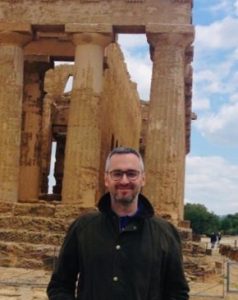 from King’s College London. His research interests include ancient harbor archaeology, with a focus on the Adriatic region, shipwrecks and seafaring, as well as ancient iconography and antiquarian reception. More recently he investigated the dynamics of iconography and visual reception of maritime cityscapes in the Mediterranean and their symbolic meaning in antiquity, which is the topic of his monograph ‘Visualizing Harbours in the Classical World. Iconography and Representation around the Mediterranean’, published by Bloomsbury. He was research associate at the Institute of Classical Studies, University of London, and staff member of the Portus Project excavation. During his postdoctoral research fellowship, Federico will conduct research on the port system of the Northern Adriatic basin and its network of coastal and rural settlements in the Roman period (200 BCE – 300 CE), as well as on dedicated research activities of the Ancient Ship Lab.
from King’s College London. His research interests include ancient harbor archaeology, with a focus on the Adriatic region, shipwrecks and seafaring, as well as ancient iconography and antiquarian reception. More recently he investigated the dynamics of iconography and visual reception of maritime cityscapes in the Mediterranean and their symbolic meaning in antiquity, which is the topic of his monograph ‘Visualizing Harbours in the Classical World. Iconography and Representation around the Mediterranean’, published by Bloomsbury. He was research associate at the Institute of Classical Studies, University of London, and staff member of the Portus Project excavation. During his postdoctoral research fellowship, Federico will conduct research on the port system of the Northern Adriatic basin and its network of coastal and rural settlements in the Roman period (200 BCE – 300 CE), as well as on dedicated research activities of the Ancient Ship Lab.
Images: courtesy of Federi Ungolini
- Host: Emilia Mataix Ferrandiz
- 13th of December, 14:00-16:00 in Helsinki, 12:00-14:00 in London
Water for Seafarers: Demand, Accessibility and Safety
With Prof. Em. Dionisius Agius, University of Exeter
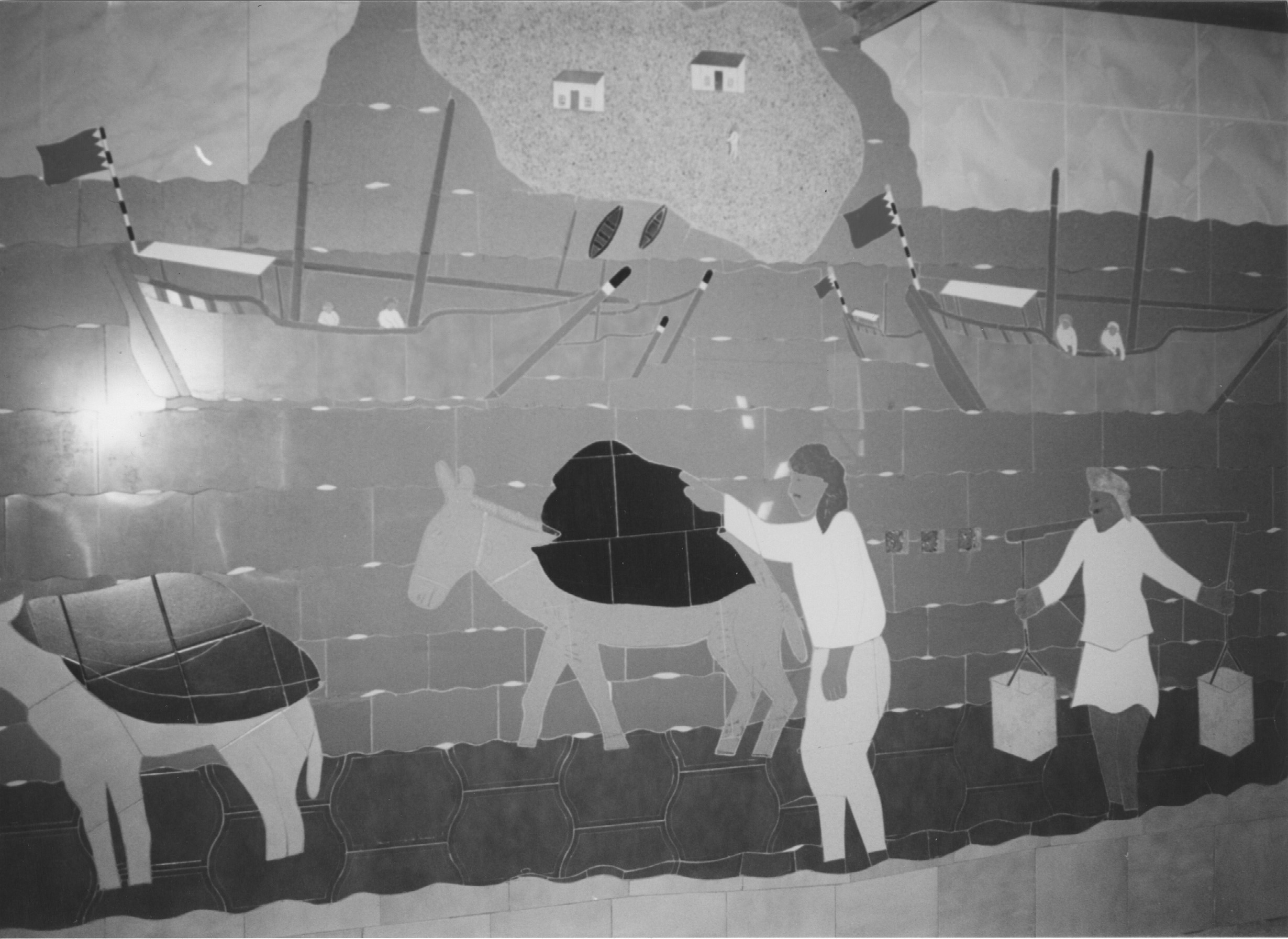
In this presentation I will talk about freshwater demand and availability in sea towns and on board the dhow from medieval and modern reports on travel in the western Indian Ocean. The main question to ask is: How was water provision organized and managed?
Freshwater provision was naturally of great concern to seafarers. The problem was not its lack but more its availability. Geographers of Medieval Islam mention ports and anchorages where wells are found but although water was pure in some, in others it was undrinkable. Also mentioned by European travellers of the Early Modern Age and more recent oral historical research rainwater captured in cisterns although sometimes it turned brackish. It was the captain’s responsibility to provide water on board the dhow; however, when water was stored in metal or wooden containers it often turned bad while in glass or earthenware containers, it held better. Merchants and pilgrims took no chances, they carried waterskins on board but even so, when water was in short supply the atmosphere on board became tense and unpleasant. The unbearable heat of the day and the mosquitoes at night made things worse as fights among passengers broke out causing havoc and distress. On pearling voyages, rationing of water was enforced by the captain on divers and haulers, providing three cups a day, a restriction that could lead to ill-health or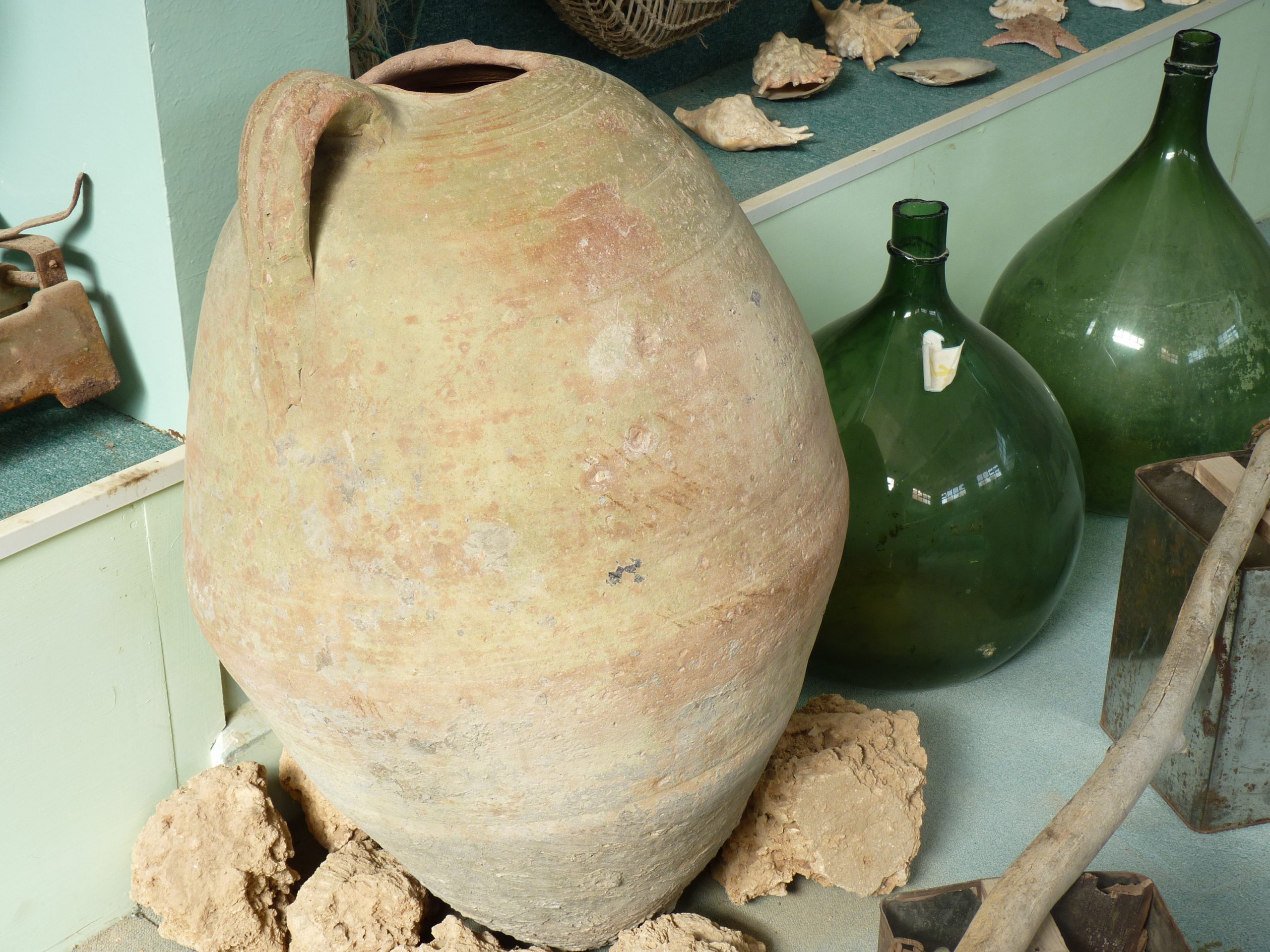 death. In general, when water became scarce the captain had to make provision to anchor at a port instructing sailors to fetch water from the town. However, some narratives recount incidents of passengers on board the dhow being robbed by nomads while the crew was on shore. Such incidents must have been nightmarish for seafarers particularly those who were experiencing travel for the first and only time in their lives because of pilgrimage.
death. In general, when water became scarce the captain had to make provision to anchor at a port instructing sailors to fetch water from the town. However, some narratives recount incidents of passengers on board the dhow being robbed by nomads while the crew was on shore. Such incidents must have been nightmarish for seafarers particularly those who were experiencing travel for the first and only time in their lives because of pilgrimage.
The written and oral accounts do shed light on the life of seafarers when water provision was lacking but it is left to our imagination to fully comprehend how severe the situation must have been when waters ran dry, and seafarers had to suffer extreme privation.
Dionisius Agius is an Arabist, philologist, and ethnographer specializing in the maritime landscapes of the Islamicate world with a focus on the material culture and heritage, and the medieval Arabic cultural geography of the Western Indian Ocean. I have conducted extensive maritime fieldwork on the coasts of the Arabian Gulf and Oman between 1990 and 2000, and the African and Arabian coasts of the Red Sea from 2002 to present.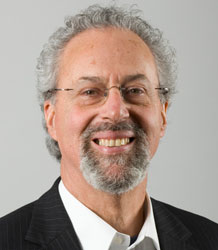
Pioneering dhow studies his research uses multiple methods or data sources in extensive archival material and archaeological finds establishing a historical, geographical, and cultural pattern of the life of a maritime people in a unique multi-disciplinary series of research outputs
New Book by Prof. Agius out now!
The Life of the Red Sea Dhow: A Cultural History of Seaborne Exploration in the Islamic World (hardback & paperback 2019). I offer a wide-ranging cultural history of the iconic dhow based on primary and secondary sources together with ethnographic fieldwork on the African and Arabian coasts of the Red Sea. While the history of global and seafaring exploration is more popular than ever, seaborne discovery from Islamicate lands remains an understudied subject. Whether discussing trade routes; shoals and wind patterns; harvest seasons; litanies and votive offerings to the sea; or the deep and resonant connection between language, memory and oral tradition, this is the first book to place the dhow in its full and remarkable cultural contexts.
https://www.amazon.co.uk/Life-Red-Sea-Dhow-Exploration/dp/184885806X
Images: courtesy of Dionisius Agius
- Host: Veronica Walker Vadillo
- 7 February, 11am in Helsinki, 10am CET
Ships and Shipping in Medieval Flanders
With: Jeroen Vermeersch (University of Ghent, Belgium)
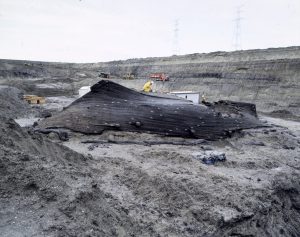
Abstract:
During the late medieval period Flanders and in particular Bruges, with its outports, was one of the main economic regions of Europe due to its geographical location and accessibility to the sea. Between 2019 and 2024 the University of Ghent is studying the ‘maritime cultural landscape’ of Bruges and its outports within a large interdisciplinary research project ‘High Tide – Low Tide’. These outports are situated along the Zwin inlet, that connected Bruges to the North Sea. The area was visited by traders coming from as far as Venice and the Baltic and it was there that goods but also ideas were exchanged.
An introduction to this historical landscape will be given, after which we will have a closer look at some significant archaeological finds and iconographical and historical sources on the ships and shipping activities in the Zwin area and elsewhere in Flanders. Amongst others will have an update on the cogs from Doel, a look at the ship finds from harbour sites of Hulst and Hoeke (excavated last summer) and we will learn what certain artefacts can tell us about the international character of the area during the late medieval period.
Host: Emilia Mataix Ferrándiz
Bio:
Jeroen Vermeersch (°1981) studied archaeology in Leuven and Köln and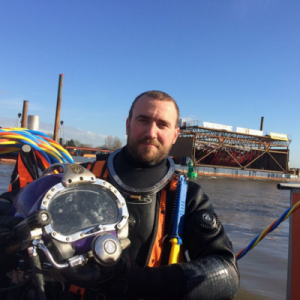 maritime archaeology in Southampton. He has worked on shipwreck sites in Turkey (Kizilburun), the Netherlands (e.g. 17th century wrecks in the Wadden Sea, cog NT25 and the IJsselcog), Belgium (e.g. WWI & II-wrecks, cogs Doel 1 and 2) and the UK (e.g. Newport ship). Jeroen is currently working on a PhD at the University of Ghent studying the ships and shipping in late medieval Flanders.
maritime archaeology in Southampton. He has worked on shipwreck sites in Turkey (Kizilburun), the Netherlands (e.g. 17th century wrecks in the Wadden Sea, cog NT25 and the IJsselcog), Belgium (e.g. WWI & II-wrecks, cogs Doel 1 and 2) and the UK (e.g. Newport ship). Jeroen is currently working on a PhD at the University of Ghent studying the ships and shipping in late medieval Flanders.
(Postponed)
- 21st of February, 11am Helsinki, 10am CET
The maritime economy of roman Lusitania – historical framework and natural hazards
Speaker: apl. Prof. Dr. Felix Teichner, Philipps-Universität Marburg
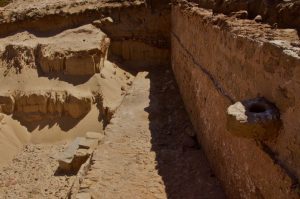
Abstract:
Besides mining and farming, the maritime economy with its distinctive fish sauce production (garum) should be acknowledged amongst the pillars of the proverbial flourishing of the Roman Hispanic provinces. The focus of this interdisciplinary research project financed by the DFG since 2017 particularly addresses the vulnerability of this fish-processing industry, as well as its complex production networks, when confronted with short and long-term natural phenomena occurring at the highly dynamic Atlantic coast. The project selectively analyses archaeological and geological records (production facilities; sediment archives) in three areas along the Atlantic coast of Lusitania and Baetica, in order to detect the reasons for drastic changes in fish-sauce production during the Roman Empire. Within the framework of the project, Roman port and production installations have been prospected with geophysical methods and excavated. At the same time, the former geomorphological and environmental setting is reconstructed. Furthermore, the attested local extreme events are traced with geoarchaeological methods and cross-checked with historical accounts about natural catastrophes and their long-range impacts on the Roman sea-side settlements.
The ‘maritime economy’ of the Roman Empire is a focal point of recent discourses within Classics. This is evident from the SPP 1630 (Harbours and Ports – from Roman Imperial until Medieval Times) and the GDK 1878 (The Archaeology of the Pre-modern Economies), as well as by the ERC projects RoMP (S. Keay) and EPNet (J. Remesal).
Bio:
Felix Teichner is a professor of archaeology at the Philipps-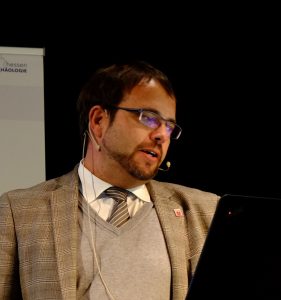 Marburg . He works in the field of European archeology, the spectrum extends geographically from the Balkan Peninsula to the northern Alpine region of Central Europe to the south of the Iberian Peninsula and from the early Roman Empire to the Middle Ages. His main focus is on Romanization research, geoarchaeology and continuity issues (late antiquity, Christianity, Islam). Teichner researched, among other things, the Roman facilities in Milreu, Miróbriga / Santiago do Cacém, Abicada, Munigua, Mursella and the Christian / early Islamic buildings of Mértola. He also worked on the DFG project “Cultural Change at the Beginning of the 1st Millennium in West Pannonia” and Ulpiana (Kosovo) for the Roman-Germanic Commission in cooperation with the German Archaeological Institute.
Marburg . He works in the field of European archeology, the spectrum extends geographically from the Balkan Peninsula to the northern Alpine region of Central Europe to the south of the Iberian Peninsula and from the early Roman Empire to the Middle Ages. His main focus is on Romanization research, geoarchaeology and continuity issues (late antiquity, Christianity, Islam). Teichner researched, among other things, the Roman facilities in Milreu, Miróbriga / Santiago do Cacém, Abicada, Munigua, Mursella and the Christian / early Islamic buildings of Mértola. He also worked on the DFG project “Cultural Change at the Beginning of the 1st Millennium in West Pannonia” and Ulpiana (Kosovo) for the Roman-Germanic Commission in cooperation with the German Archaeological Institute.
Host: Emilia Mataix Ferrandiz
28th of February, 11am in Helsinki, 16:00 in Phnom Penh
**Postponed from 24th January**
The boat and the plough: biocultural heritage and the archaeology of the Lower Mekong Delta
With: Veronica Walker Vadillo (University of Helsinki, Finland)

Abstract:
The location of pre-Angkorian archaeological sites in the main course of the Mekong River Basin between Kratie (Cambodia) and Champassak (Laos) has been attributed to local populations’ attempts to control goods moving in and out of the hinterland based on Bronson’s model of river hierarchies in Southeast Asia. These interpretations have placed an emphasis on trade, in addition to rice cultivation, as a marker for social complexity and wealth accumulation. In this presentation I will argue that the location of these sites can be linked to fish resources, and that social complexity can be similarly attributed to societal responses to fisheries management, adding to an increasing list of examples of convergence in cultural niche construction surrounding floodplain fishery in tropical river environments. In doing so, the essay reviews two data sets that are rarely used to discuss the selected archaeological material: regional fish ecosystems and traditional ecological knowledge of fishing practices among local communities. The study examines fish migration patterns, and explores traditional fishing practices connected to the systematic exploitation of the two main ecological niches linked to the reproductive life of fish –flood plains and deep pools. The location of these fishing grounds and the constraints that fishing resources impose on people is discussed in relation to archaeological data and livelihood activities related to fishing and fish processing. The discussion will then explore similar examples of flood plain fisheries management in the Amazon and Congo River Basins.
Bio:
Veronica Walker Vadillo is the PI of this Three-Year Research Grant project funded by the University of Helsinki. She holds a BA+MA in Spanish and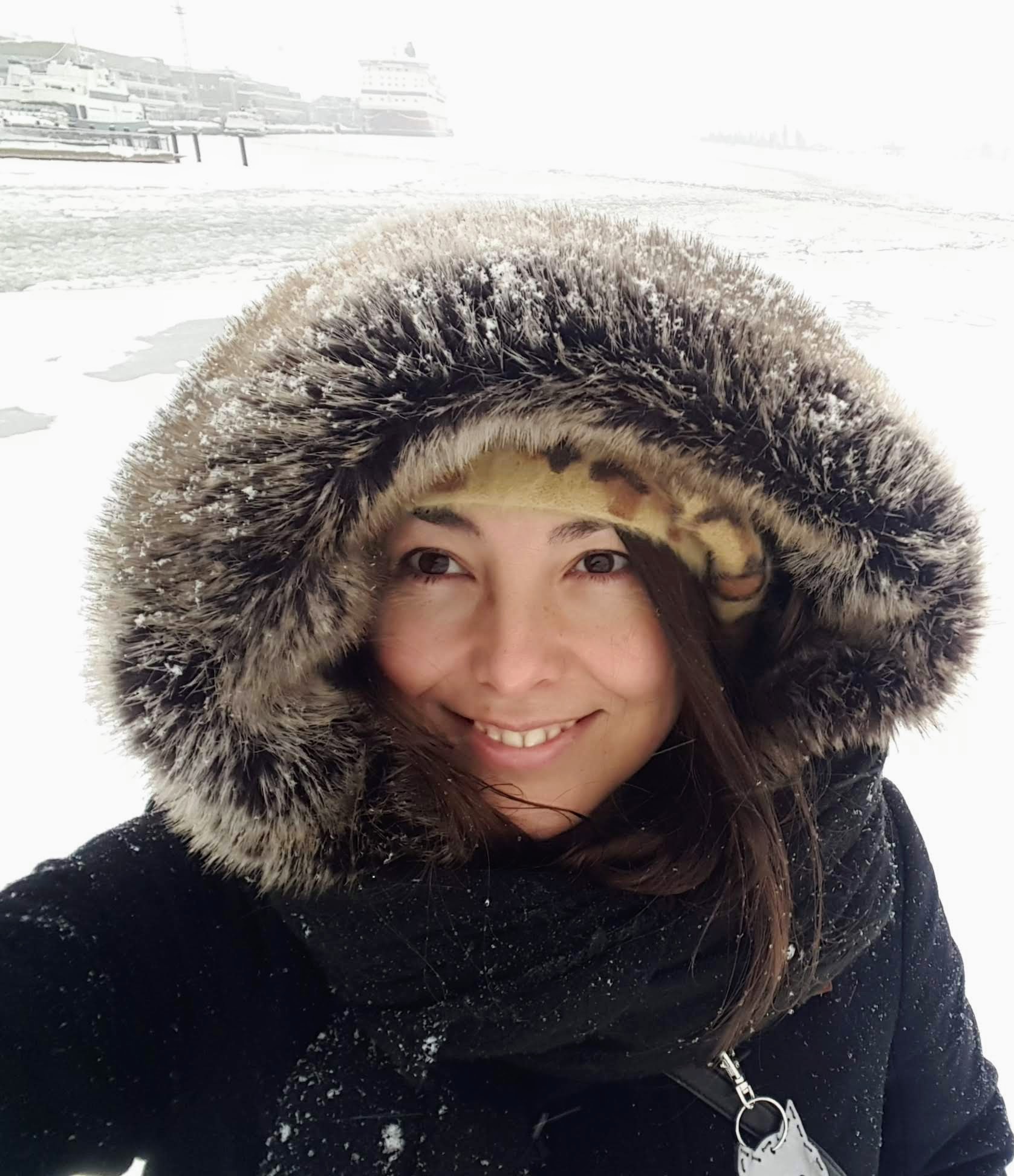 European History (2005, Universidad de Alcala), an MA in Maritime Archaeology (2008, UCL, UK), and a DPhil in archaeology (2017, St. Cross College, Oxford Centre for Maritime Archaeology, University of Oxford, UK), after which she earned a position at the Helsinki Collegium for Advanced Studies (2018-2020). Since completing her MA, Walker Vadillo’s work has been devoted to Southeast Asia, looking specifically at the role of waterways in the development of the Angkor Empire. She has successfully applied the Maritime Cultural Landscape perspective for the first time in the Mekong, a fruitful approach that enabled her to further our knowledge on the study of human responses to amphibious landscapes and tease out Angkor’s fluvial (riverine) cultural landscape. She is currently finalizing her work at Collegium, which centres on human-environment interactions in the Mekong river, especially in regards to fish migration patterns, fishing economies, and the rise of social complexity in the first millennia CE. The Ports and Harbours of Southeast Asia is a progression of her work on shipping logistics and the social processes involved in establishing shipping networks. You can find more about her previous work here.
European History (2005, Universidad de Alcala), an MA in Maritime Archaeology (2008, UCL, UK), and a DPhil in archaeology (2017, St. Cross College, Oxford Centre for Maritime Archaeology, University of Oxford, UK), after which she earned a position at the Helsinki Collegium for Advanced Studies (2018-2020). Since completing her MA, Walker Vadillo’s work has been devoted to Southeast Asia, looking specifically at the role of waterways in the development of the Angkor Empire. She has successfully applied the Maritime Cultural Landscape perspective for the first time in the Mekong, a fruitful approach that enabled her to further our knowledge on the study of human responses to amphibious landscapes and tease out Angkor’s fluvial (riverine) cultural landscape. She is currently finalizing her work at Collegium, which centres on human-environment interactions in the Mekong river, especially in regards to fish migration patterns, fishing economies, and the rise of social complexity in the first millennia CE. The Ports and Harbours of Southeast Asia is a progression of her work on shipping logistics and the social processes involved in establishing shipping networks. You can find more about her previous work here.
Host: Emilia Mataix Ferrandiz
- 7th of March, 11am in Helsinki, 9am in London
Special round table: Women in Maritime Archaeology
Speakers: Lucy Semaan, Crystal Safadi, Clara Fuquen, and Maii Ghanem
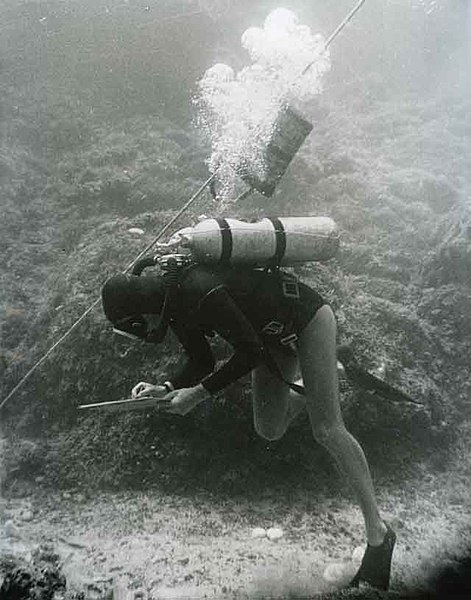
Joan du Plat Taylor at Cape Gelidonya, 1959. Source: UCL Institute of Archaeology
Abstract:
Four different women, four different stories, and four equally passionate and culturally diverse narratives. We will be taking you on their journey from how they first heard about maritime archaeology to what they sacrificed and how hard they worked to get where they are; a journey that runs and extends from the Colombian Andes to the Egyptian desert. Leaving their socio-cultural environment to study, live, and for some work in the UK.
These four maritime archaeologists, three of whom obtained their PhDs in the past decade and one successfully finished her MA program, undertook research in the Middle East and Latin America with interests ranging from public archaeology, capacity building, remote sensing, ethnography, and travelling the world with National Geographic. They present an alternative debate to the dominant western white female practitioners in maritime archaeology by sharing their failures but also their success stories.
Bios:
Lucy Semaan has been HFF’s lead maritime archaeologist in Lebanon since 2019. Lucy has participated in and directed international maritime and terrestrial archaeological surveys and excavations, as well as marine geophysical, geoarchaeological, and capacity building and outreach projects in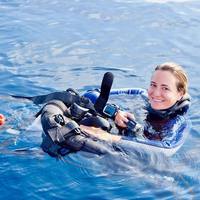 the Eastern Mediterranean and the Arab world since 1996. She also teaches the Minor in Marine Sciences and Culture at the American University of Beirut (AUB), and has lectured in maritime archaeology in Lebanon and abroad. She holds a Bachelor’s degree in Arts and Archaeology from the Lebanese University, a Master’s degree in Maritime Archaeology from the University of Southampton (2007) and a PhD in Arab and Islamic studies with a focus on maritime archaeology from the University of Exeter (2014). From 2016 to 2018, Lucy was awarded a three-year HFF-funded post-doctoral fellowship at the University of Balamand, Lebanon. In 2017, she helped organise, set up, and teach in the first Nautical Archaeology Society (NAS) fieldschool held in Lebanon. She has been diving since 2001 and holds a SSI XR technical diving qualification. She is currently a member of the International Committee on the Underwater Cultural Heritage (ICUCH-ICOMOS).
the Eastern Mediterranean and the Arab world since 1996. She also teaches the Minor in Marine Sciences and Culture at the American University of Beirut (AUB), and has lectured in maritime archaeology in Lebanon and abroad. She holds a Bachelor’s degree in Arts and Archaeology from the Lebanese University, a Master’s degree in Maritime Archaeology from the University of Southampton (2007) and a PhD in Arab and Islamic studies with a focus on maritime archaeology from the University of Exeter (2014). From 2016 to 2018, Lucy was awarded a three-year HFF-funded post-doctoral fellowship at the University of Balamand, Lebanon. In 2017, she helped organise, set up, and teach in the first Nautical Archaeology Society (NAS) fieldschool held in Lebanon. She has been diving since 2001 and holds a SSI XR technical diving qualification. She is currently a member of the International Committee on the Underwater Cultural Heritage (ICUCH-ICOMOS).
Crystal El Safadi is a Senior Research Fellow at the University of Southampton. They are a maritime archaeologist with a background and expertise in archaeological computing. Crystal is part of the Arcadia funded MarEA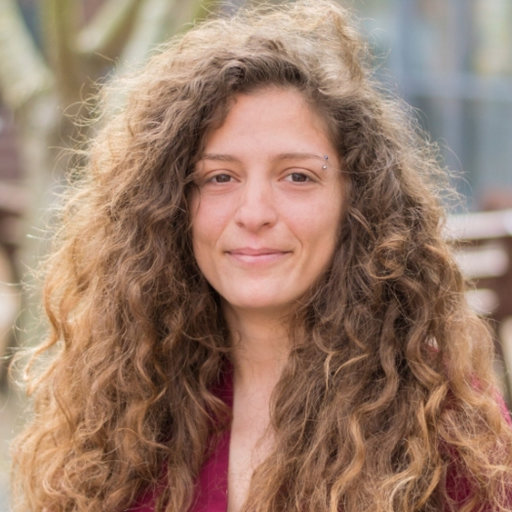 (Maritime Endangered Archaeology) project, which is rapidly and comprehensively documenting and assessing, through remote sensing applications, threats to the maritime and coastal archaeology of the Middle East and North Africa. Their work focuses on managing geospatial and heritage data and undertaking both desk and field-based research that enhances knowledge of the maritime cultural heritage asset, of its state of preservation, and how best to manage it through regional initiatives and collaborations. In their archaeological research, Crystal focuses on Bronze Age and Neolithic seafaring and maritime mobility modelling.
(Maritime Endangered Archaeology) project, which is rapidly and comprehensively documenting and assessing, through remote sensing applications, threats to the maritime and coastal archaeology of the Middle East and North Africa. Their work focuses on managing geospatial and heritage data and undertaking both desk and field-based research that enhances knowledge of the maritime cultural heritage asset, of its state of preservation, and how best to manage it through regional initiatives and collaborations. In their archaeological research, Crystal focuses on Bronze Age and Neolithic seafaring and maritime mobility modelling.
Clara Fuquen has built a career working beneath the surface of the world’s oceans despite having been born and raised in the Andes. Being trained as a diver in the Colombian Navy, she began her underwater archaeological career working on a 18th century shipwreck in Cartagena. Working on various underwater and terrestrial archaeological sites in the following years, Clara completed an undergraduate degree in anthropology at the Colombian National University, followed by a Masters degree in Maritime Archaeology in the UK’s Southampton University. Her subsequent PhD research focused on traditional boat-building in the remote jungles of Colombia’s pacific coast.
working on a 18th century shipwreck in Cartagena. Working on various underwater and terrestrial archaeological sites in the following years, Clara completed an undergraduate degree in anthropology at the Colombian National University, followed by a Masters degree in Maritime Archaeology in the UK’s Southampton University. Her subsequent PhD research focused on traditional boat-building in the remote jungles of Colombia’s pacific coast.
Maii Ghanem is an Egyptian Maritime Archaeologist and an HFF Scholar, currently working on a number of archaeological and rescue projects in Egypt.
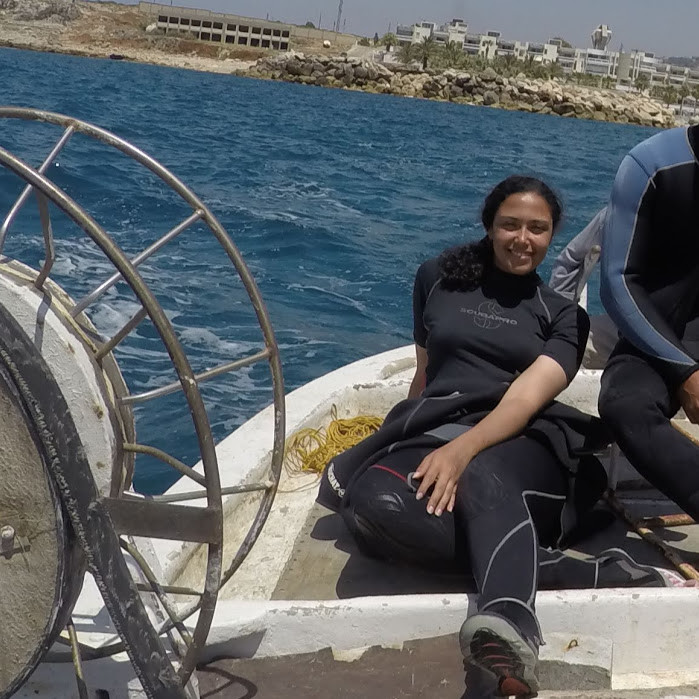 She obtained her MA in Maritime Archaeology from the University of Southampton in 2021. Her research looked at how digital documentation and display can play a role in saving yet spreading the researchers’ knowledge about our Maritime Heritage. She is currently enrolled at the Geographic Information Systems post graduate program at Ulster University. She is also the co-investigator in the TradEGY project (Egyptian Traditional Riverine Tangible and Intangible Heritage Rescue Project) in charge of 3D documentation, and a team member of El-Max Rescue Project as a mapping specialist. Previously, in 2018-2019, she worked as a research assistant in the ERASMUS EduMust Project (Education and Capacity Building in Museums Studies) at the University of Southampton. This experience allowed her to learn more about museums and museum displays, reinforced her passion for digital archaeology, and allowed her to combine both fields in her research. Since 2015, she has participated in several underwater surveys in Egypt, Lebanon, and Croatia and presented her work in international conferences such as the ISBSA 16 in Croatia 2021, and will be presenting in the next IKUWA7 in Helsinki 2022.
She obtained her MA in Maritime Archaeology from the University of Southampton in 2021. Her research looked at how digital documentation and display can play a role in saving yet spreading the researchers’ knowledge about our Maritime Heritage. She is currently enrolled at the Geographic Information Systems post graduate program at Ulster University. She is also the co-investigator in the TradEGY project (Egyptian Traditional Riverine Tangible and Intangible Heritage Rescue Project) in charge of 3D documentation, and a team member of El-Max Rescue Project as a mapping specialist. Previously, in 2018-2019, she worked as a research assistant in the ERASMUS EduMust Project (Education and Capacity Building in Museums Studies) at the University of Southampton. This experience allowed her to learn more about museums and museum displays, reinforced her passion for digital archaeology, and allowed her to combine both fields in her research. Since 2015, she has participated in several underwater surveys in Egypt, Lebanon, and Croatia and presented her work in international conferences such as the ISBSA 16 in Croatia 2021, and will be presenting in the next IKUWA7 in Helsinki 2022.
Host: Lucy Semaan / Katerina Velentza
- 22nd of March (NOTE: Not MONDAY!!), time 14:00 in HKL, 13:00 in Vienna
Crossroads, Ice Curtain, and Chokepoint: Bering Strait over time
with Prof. Peter Schweitzer

Abstract:
The Bering Strait, the body of water that both separates and binds together the USA and the Russian Federation, has been an area of heightened world historical significance ever since it formed a land bridge between Northeast Asia and Northwest North America at the end of the last Ice Age that enabled the peopling of the Americas. Despite these deep historical connections, the talk will focus on the region’s more recent history since the late 19th century. This history has been characterized by indigenous cultural contacts, imperial ambitions, resource extraction, as well as infrastructural projects and plans. The story of these entanglements will be told along the lines of several research projects led by the speaker and spanning the last 30 years, ranging from “Traveling Between Continents” to “Moved by the State” to “Building Arctic Futures (InfraNorth)”. The latter, a recently commenced ERC project, focuses on the nexus between transport infrastructures and the well-being of Arctic communities. The Bering Strait is a chokepoint for Arctic maritime traffic between the Atlantic and the Pacific, no matter whether transportation is routed via the Northern Sea Route or the Northwest Passage. While the geopolitical and strategic significance of the Bering Strait has been great throughout the 20th century, the invasion of the Ukraine will undoubtedly lead to making the 80 kilometres separating Russia from its eastern neighbour into even more volatile waters. Notwithstanding these global dimensions, the talk will be anthropological in nature and focus on the local scale.
Bio:
Peter Schweitzer was born in Upper Austria and studied Philosophy, Political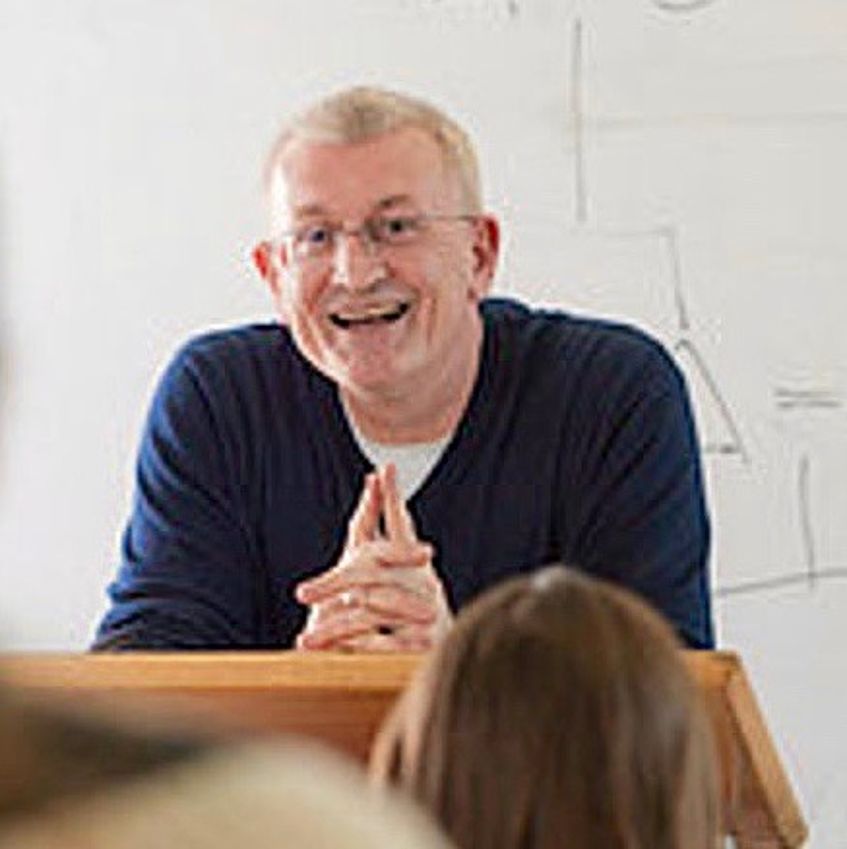 Science and Social and Cultural Anthropology at the University of Vienna. After completing his PhD dissertation on the Ethnohistory of Northeastern Siberia in 1990, he joined the Department of Anthropology at the University of Alaska of Fairbanks in 1991. Having risen from Assistant Professor to Full Professor by the early 2000s, Schweitzer eventually became Alaska Director of the Experimental Program to Simulate Competitive Research (EPSCoR). In late 2012, he returned to his alma mater and accepted a position of Full Professor at the Department of Social and Cultural Anthropology (IKSA) at the University of Vienna, while retaining an appointment as Professor Emeritus at the University of Alaska Fairbanks. He became head of department at IKSA in Vienna in 2016, a position he held until early 2021. He is currently the holder of the ERC Advanced Grant InfraNorth: Building Arctic Futures: Transport Infrastructures and Sustainable Northern Communities.
Science and Social and Cultural Anthropology at the University of Vienna. After completing his PhD dissertation on the Ethnohistory of Northeastern Siberia in 1990, he joined the Department of Anthropology at the University of Alaska of Fairbanks in 1991. Having risen from Assistant Professor to Full Professor by the early 2000s, Schweitzer eventually became Alaska Director of the Experimental Program to Simulate Competitive Research (EPSCoR). In late 2012, he returned to his alma mater and accepted a position of Full Professor at the Department of Social and Cultural Anthropology (IKSA) at the University of Vienna, while retaining an appointment as Professor Emeritus at the University of Alaska Fairbanks. He became head of department at IKSA in Vienna in 2016, a position he held until early 2021. He is currently the holder of the ERC Advanced Grant InfraNorth: Building Arctic Futures: Transport Infrastructures and Sustainable Northern Communities.
Schweitzer is past president of the International Arctic Social Sciences Association, and past chair of the Social and Human Sciences Working Group of the International Arctic Science Committee (IASC). He currently serves as the speaker of the Working Group History of Anthropology of the German Anthropological Association, serves on scientific advisory boards of major projects in Sweden and Russia, and serves on the (advisory) editorial boards of professional journals in Germany, Estonia, Russia and New Zealand.
Host: Veronica Walker Vadillo
- 4th of April, 11:00 am in Helsinki, 16:00 in Hong Kong, 10:00am in Paris
The Endurance: is this maritime archaeology?
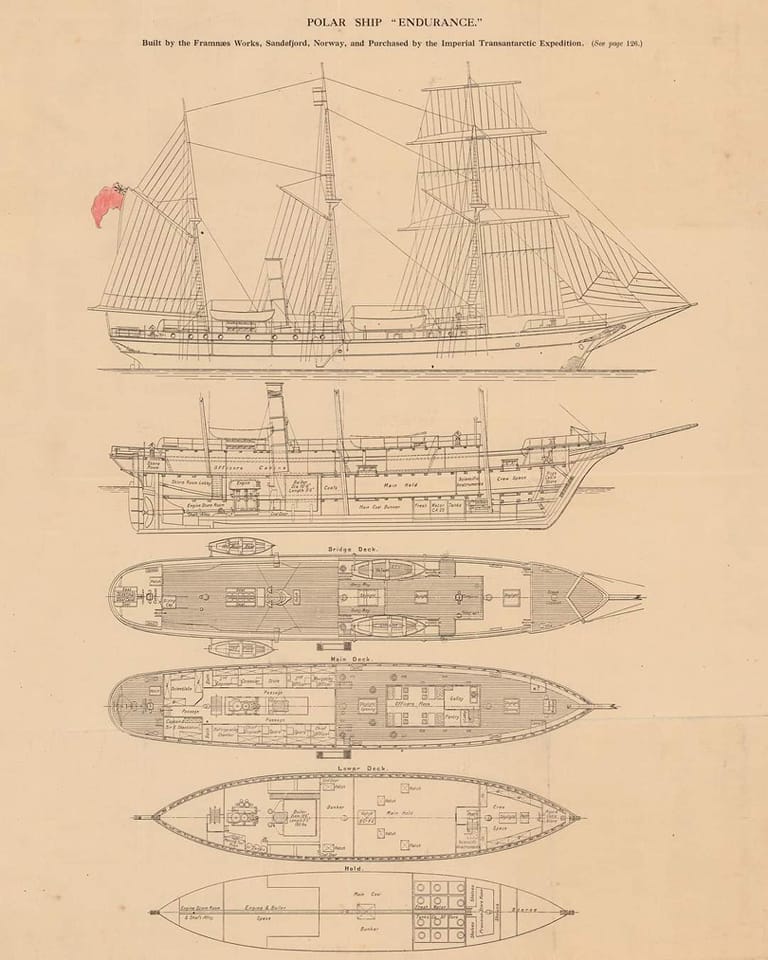
The topic on whether the discovery of the Endurance has sparked a lively debate on what it means to do maritime archaeology, so we want to offer our platform to deepen the conversation. The image above is the plan of the Endurance. We knew where it sank, we knew who sailed it, where to, where from, and why. We even know what happened after it sank. What can we possibly know more by “exploring” the site beyond the fetishism of seeing it “live”? Do we really benefit from perpetuating this side of maritime archaeology? Or could we open up the field to others by also documenting and documenting traditional boat building practices or supporting the revival of traditional sailing techniques that are about to disappear?
In this round table we want to discuss the multifaceted character of maritime archaeology, the impact that these type of projects have on the public perception of maritime archaeology, and the integration of maritime perspectives in the wider field of archaeology. To do this we will have two very different discussants: Cliff Pereira, whose work focuses on maritime migrations, and Brendan Foley, whose focus is on technology and underwater excavation.
Discussants:
Clifford (Cliff) Pereira is a historical geographer, researcher, curator and heritage consultant with a portfolio of global projects. Pereira has contributed to numerous publications, radio and TV documentary programs across the world and was appointed by the Royal Geographical Society (with IBG) to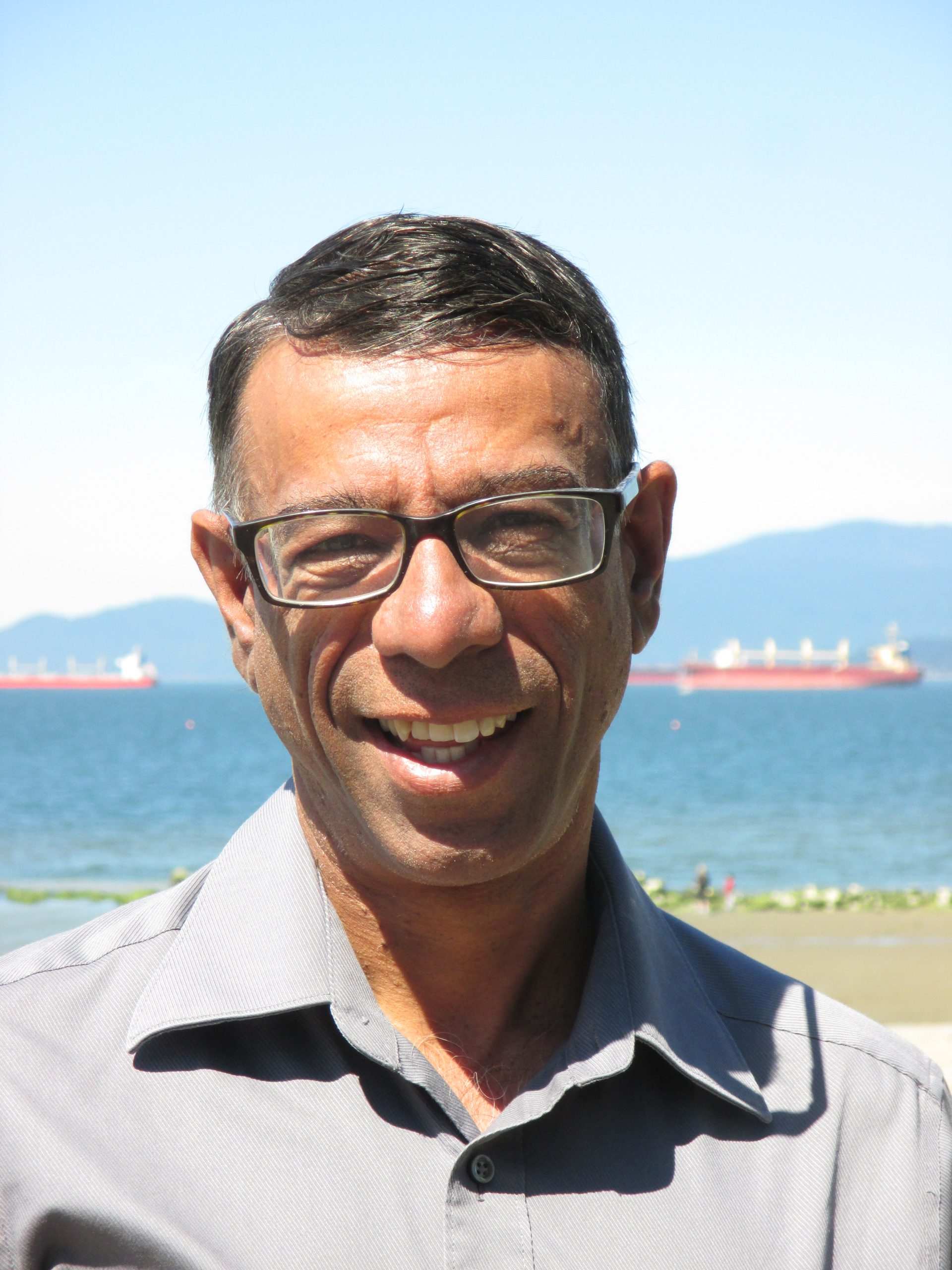 lecture on two Silversea cruises on the themes of “Zheng He and the Indian Ocean” and “The Portuguese Discoveries”. Pereira has undertaken consultancy assignments on the National Maritime Museum (UK), the Maritime Museum of Vancouver (Canada), the Hong Kong Maritime Museum, the Maritime University of Dalian (China) and the National Museum of Qatar at Doha. He is best known for his work on Africans in the Indian Ocean World, especially the “Bombay African” narrative which will be featured in the UNESCO General History of Africa Vol. X. This research led to his work on Africans in the London Borough of Bexley and his curation of the Bin Jalmood House in Qatar. Pereira was recently featured on the Japanese TV network NHK for his work on Yasuke – the African Samurai. His MRes was on Africa and the African Diaspora, focusing on Africans in Southeast Asia 1900-1960. Pereira is Visiting Research Associate with the University of Hong Kong’s African Studies Department.
lecture on two Silversea cruises on the themes of “Zheng He and the Indian Ocean” and “The Portuguese Discoveries”. Pereira has undertaken consultancy assignments on the National Maritime Museum (UK), the Maritime Museum of Vancouver (Canada), the Hong Kong Maritime Museum, the Maritime University of Dalian (China) and the National Museum of Qatar at Doha. He is best known for his work on Africans in the Indian Ocean World, especially the “Bombay African” narrative which will be featured in the UNESCO General History of Africa Vol. X. This research led to his work on Africans in the London Borough of Bexley and his curation of the Bin Jalmood House in Qatar. Pereira was recently featured on the Japanese TV network NHK for his work on Yasuke – the African Samurai. His MRes was on Africa and the African Diaspora, focusing on Africans in Southeast Asia 1900-1960. Pereira is Visiting Research Associate with the University of Hong Kong’s African Studies Department.
Brendan Foley is an underwater archaeologist working in Lund University. Prior to coming to Lund University in 2017 he was a Research Specialist in the Deep Submergence Laboratory at Woods Hole Oceanographic Institution in the USA, and a Lecturer at the Massachusetts Institute of Technology. His PhD from MIT is in the History and Archaeology of Technology, complementing a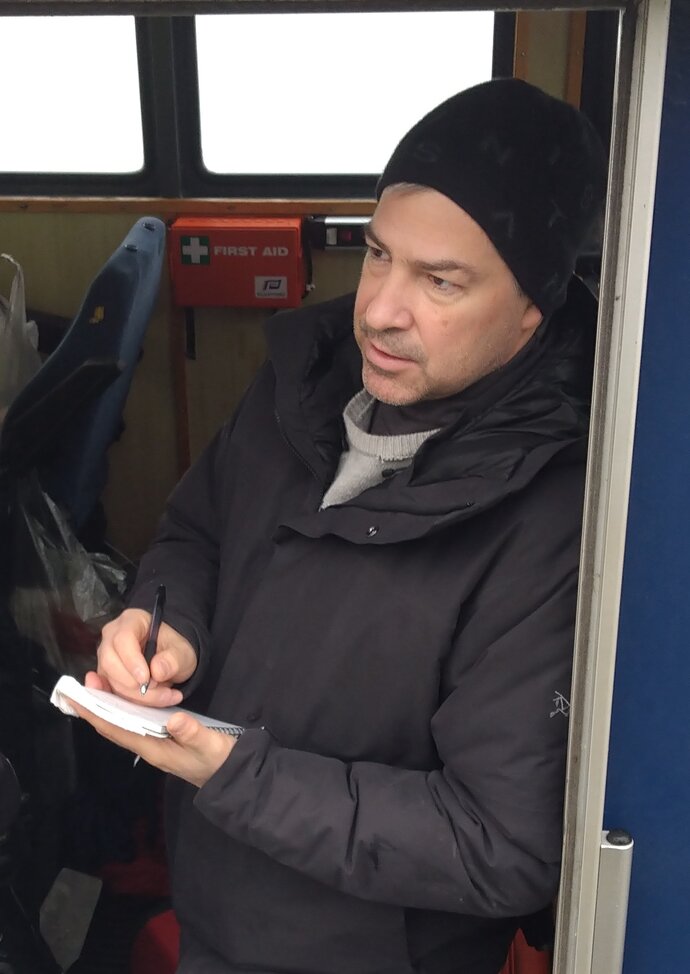 Masters degree in Maritime Archaeology from University of Southampton and another in Social and Economic History from Tufts University. He specializes in the application of advanced methods and technology to archaeology, particularly submerged sites. He has directed several underwater archaeological projects: surveys of ancient shipwrecks by Autonomous Underwater Vehicle in the Aegean; six years of excavation by technical diving on the Antikythera Shipwreck in Greece; and underwater recoveries of human remains from World War II aircraft for the U.S. Department of Defense. His current project is the excavation of the royal Danish flagship, Gribshunden, lost off Blekinge in 1495
Masters degree in Maritime Archaeology from University of Southampton and another in Social and Economic History from Tufts University. He specializes in the application of advanced methods and technology to archaeology, particularly submerged sites. He has directed several underwater archaeological projects: surveys of ancient shipwrecks by Autonomous Underwater Vehicle in the Aegean; six years of excavation by technical diving on the Antikythera Shipwreck in Greece; and underwater recoveries of human remains from World War II aircraft for the U.S. Department of Defense. His current project is the excavation of the royal Danish flagship, Gribshunden, lost off Blekinge in 1495
Round table host: Veronica Walker Vadillo
- 18 of April, 11:00 am in Helsinki, 16:00 in Hong Kong, 10:00am in Paris
Merchants, overland routes and waterways. The case of medieval Venice
With: Stefania Gialdroni, University of Padova (Italy)
Abstract:
For many centuries, throughout the Middle Ages and the Early Modern period, Venice was one of the most powerful and flourishing trading centers of the world, the mandatory stop for merchandise coming from the East and directed, via overland routes, both to northern Europe and to Genoa, from where men and goods would reach other trading centers (e.g., France and the Iberian peninsula).
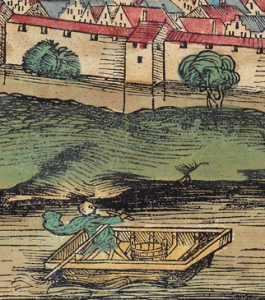
Recent studies have clearly demonstrated that: the medieval and early modern road system was not identical to the ancient Roman one; that the road system changed over the course of the Middle Ages and the modern period; that along with the proper roads, people (and therefore merchants) used rivers, the so-called “waterways”. The discontinuity of the Roman road system during the Middle Ages was due to important changes both from the point of view of geomorphology and the history of human settlements. The legal historian interested in verifying whether merchants transported legal concepts in their luggage from one trading center to the other (just like a stonemason would have carried his working tools from one construction site to the next) must pay attention to the exact paths followed by those merchants. And he cannot properly do it without the support of historical geography, cartography and medieval archaeology. The goal of this paper is to set a working hypothesis for the development of an interdisciplinary study aimed at reconstructing the medieval overland trade routes connecting Venice with Lübeck and Venice with Genoa, with a focus on the role played by waterways (i.e. rivers and channels).
Host: Emilia Mataix Ferrándiz
Bio:
Stefania Gialdroni is a legal historian with a passion for interdisciplinary studies. She has been appointed Full Professor of Medieval and Modern Legal 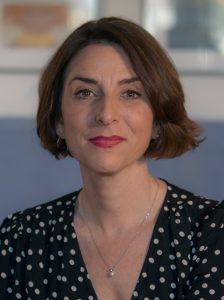 History at the Department of Private Law and Critical Legal Studies (DPCD) of the University of Padua (Italy) after having obtained, in 2020, an ERC Consolidator Grant for her project MICOLL: “Migrating Commercial Law and Language. Rethinking Lex Mercatoria (11th-17th Century)” (2021-2026): https://www.micoll-erc.eu. Since November 2020, she is a specialist consultant for cultural heritage for the United Nations (UNICRI)
History at the Department of Private Law and Critical Legal Studies (DPCD) of the University of Padua (Italy) after having obtained, in 2020, an ERC Consolidator Grant for her project MICOLL: “Migrating Commercial Law and Language. Rethinking Lex Mercatoria (11th-17th Century)” (2021-2026): https://www.micoll-erc.eu. Since November 2020, she is a specialist consultant for cultural heritage for the United Nations (UNICRI)
- 2nd of May, 11:00 am in Helsinki, 11:00am in Athens, 10:00 am in Berlin
Sailing in the time of transition: Mediterranean sailing ships and steamers, 19th-early 20th centuries
With Apostolos Delis, Institute for Mediterranean Studies/ FORTH (Crete, Greece)

Abstract:
Navigation is a quite neglected subject by maritime historians. Despite its importance in terms of economic performance in shipping and in terms of geographical connectivity, historians tend to overlook this dimension in their analysis. Furthermore, sources like ship logbooks and books of sailing directions are also understudied. In the framework of the ERC STG 2016 project “Seafaring Lives in Transition, Mediterranean Maritime Labour and Shipping, 1850s-1920s (SeaLiT)”, the history of navigation was one of the main subjects of study. Using ship logbooks of Mediterranean sailing ships and steamers as well as sailing directions books it was created the first map visualization application in an online open access called Ship Voyages (http://www.sealitproject.eu/ship-voyages). Based on the information provided in Ship Voyages, as well as on sailing directions books I examine certain aspects of the history of navigation of Mediterranean merchant ships in the period of the transition from sail to steam. First, the evolution of the trade routes from sailing ships to steamers, second, the navigation patterns of the two different types of ship technologies, third, the duration of the voyages and the impact on the economic performance. Last but not least, the level of integration attained by the expansion of the routes from one technology to the other.
Bio:
Apostolos Delis (Volos, 1971) studied Ancient History in the Universities of Siena and Bologna and Maritime Archaeology and History in the University of Bristol. He completed his PhD thesis in 2010 in the Ionian University with subject: “Hermoupolis (Syros): the shipbuilding centre of the sailing merchant marine, 1830-80”. During the academic year 2010-11 worked as a post doc researcher in the Centre de la Méditerranée Moderne et Contemporaine (CMMC) of University of Nice in the program ANR/NAVIGOCORPUS: Corpus des itinéraires des navires de commerce, XVIIe-XIXe siècles. Since 2012 worked as a researcher in the Institute for Mediterranean Studies/ FORTH in two research projects: 1) “ELISTOKAINO”: the History of Innovation in Greece, 19th-20th centuries with subject: Innovation in the Greek and Mediterranean Shipbuilding Technology, 19th-20th centuries and 2) “Thalis”: The Black Sea and its port-cities, 1774-1914. Development, convergence and linkages with the global economy, (http://blacksea.gr/) with subject: The port of Marseille and the Black Sea trade in the nineteenth century. His research interests lie in the maritime economic and social history, the history of technology of the sailing ship and of the steamship, the shipbuilding industry, port history and the institutions of shipping business. He is author of a monograph entitled Mediterranean Wooden Shipbuilding. Economy, Technology and Institutions in Syros in the Nineteenth Century, Leiden, BRILL, (2015), whereas he has published in Greek and international journals and collective volumes such as European Review of Economic History, Urban History, International Journal of Maritime History, History of Technology. He is the Principal Investigator in the ERC STG 2016 project “Seafaring Lives in Transition, Mediterranean Maritime Labour and Shipping, 1850s-1920s (SeaLiT) project, responsible for the coordination of the research groups and the supervision of the work and its outcome. His specific research agenda in the SeaLiT is the study of the transition from sail to steam and tis effects in the island of Andros, Cyclades, Greece.
researcher in the Centre de la Méditerranée Moderne et Contemporaine (CMMC) of University of Nice in the program ANR/NAVIGOCORPUS: Corpus des itinéraires des navires de commerce, XVIIe-XIXe siècles. Since 2012 worked as a researcher in the Institute for Mediterranean Studies/ FORTH in two research projects: 1) “ELISTOKAINO”: the History of Innovation in Greece, 19th-20th centuries with subject: Innovation in the Greek and Mediterranean Shipbuilding Technology, 19th-20th centuries and 2) “Thalis”: The Black Sea and its port-cities, 1774-1914. Development, convergence and linkages with the global economy, (http://blacksea.gr/) with subject: The port of Marseille and the Black Sea trade in the nineteenth century. His research interests lie in the maritime economic and social history, the history of technology of the sailing ship and of the steamship, the shipbuilding industry, port history and the institutions of shipping business. He is author of a monograph entitled Mediterranean Wooden Shipbuilding. Economy, Technology and Institutions in Syros in the Nineteenth Century, Leiden, BRILL, (2015), whereas he has published in Greek and international journals and collective volumes such as European Review of Economic History, Urban History, International Journal of Maritime History, History of Technology. He is the Principal Investigator in the ERC STG 2016 project “Seafaring Lives in Transition, Mediterranean Maritime Labour and Shipping, 1850s-1920s (SeaLiT) project, responsible for the coordination of the research groups and the supervision of the work and its outcome. His specific research agenda in the SeaLiT is the study of the transition from sail to steam and tis effects in the island of Andros, Cyclades, Greece.
Host: Katerina Velentza
- 16th of May, 11:00 am in Helsinki, 11:00am in Athens, 10:00 am in Berlin
**Hybrid event: If you are in Helsinki, come to ArlaPro in Topelia F, Unioninkatu 35**
From the sea, we find our harvest and our graves – life in Lavansaari in the 19th century
With Johanna Roiha, University of Helsinki (Finland)
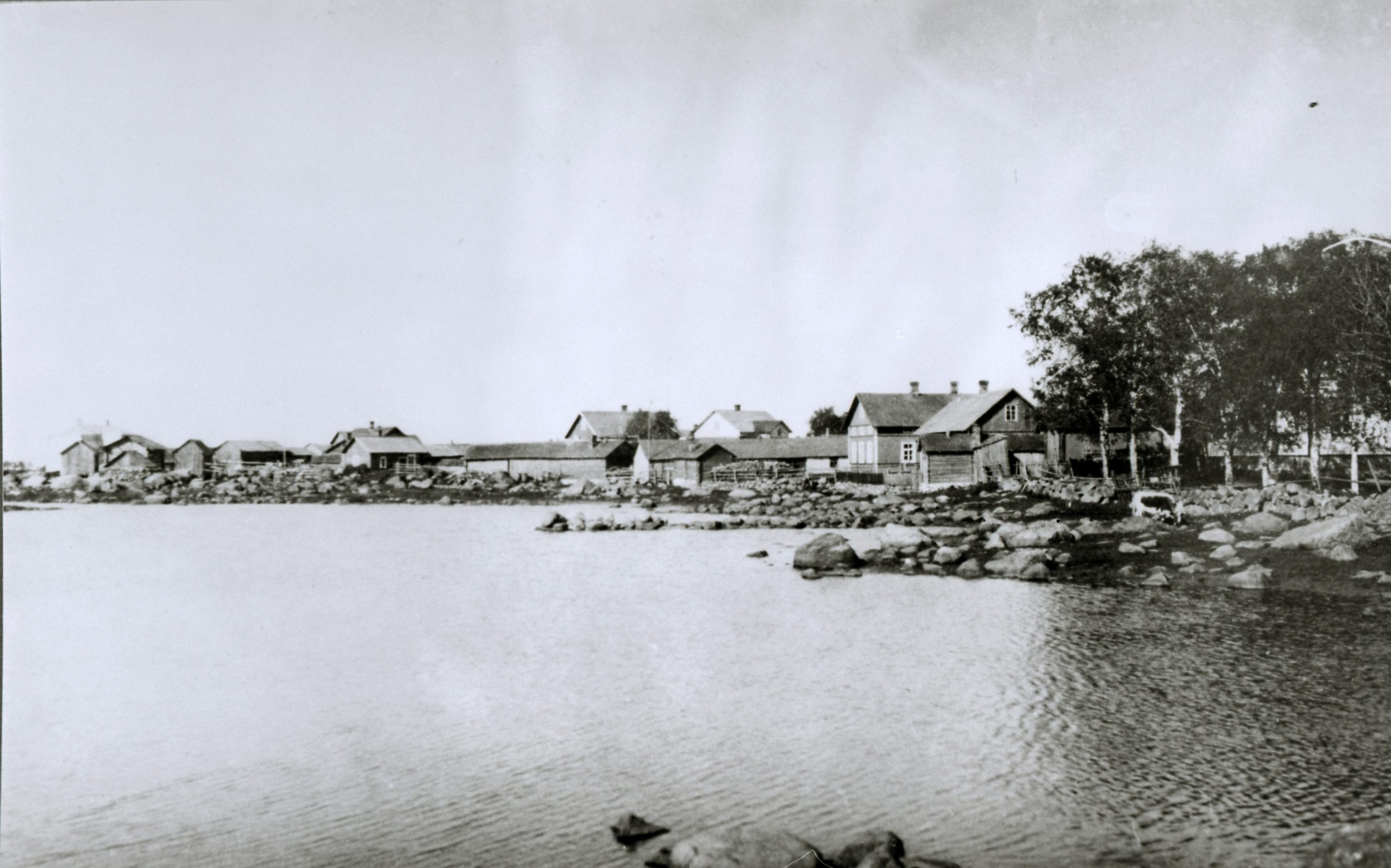
Abstract:
The small island in the eastern Gulf of Finland called Lavansaari has an interesting past. Today, Lavansaari is occupied by the Russian military, but before the Winter War, it was a home for a group of people who mostly lived from marine resources. The first signs of settlement on the island are from the Pre-Roman age, but the prehistory of the area is yet mostly unknown. However, at least since the 17th century, some families have been living in Lavansaari. Life on that remote island wasn’t easy in those times. The sea provided resources, but often also took the lives of those sailors and their families. Agriculture was not possible in that harsh environment so trading fish and other supplies to grain and vegetables were important. Alongside fishing and seal hunting the island is also known for piracy. The robbery of shipwrecked ships provided resources for those who hit the scene first. Competition of all resources was sometimes fierce in that hard environment. The remote location of the island also allowed people to continue some very old traditions, like hunting magic and “seer” tradition even until the 19th century. Unique ethnographic records and descriptions of those seer rituals can give us a small peek into the worldview of the past. Knowledge of that very different worldview where magic was present everywhere and affected many aspects of daily life could also support archaeological research. The presentation is a short introduction to life in the Lavansaari 19th century and a summary of those special myths, rituals and beliefs of the past islanders.
Bio:
Johanna Roiha is a doctoral researcher from the University of Helsinki. After finishing her master’s studies at the University of Helsinki, she has focused on archaeological fieldwork and GIS. Her doctoral research studies the use of GIS applications in archaeology. However, maritime history and especially the history of islands in the Gulf of Finland has been her lifetime interest. Part of her family comes from the Lavansaari-island and her great-great-grandfather started the historical and ethnographical research of the area already in 1890.
on archaeological fieldwork and GIS. Her doctoral research studies the use of GIS applications in archaeology. However, maritime history and especially the history of islands in the Gulf of Finland has been her lifetime interest. Part of her family comes from the Lavansaari-island and her great-great-grandfather started the historical and ethnographical research of the area already in 1890.
Host: Veronica Walker Vadillo
- 30th of May, 11:00 am in Helsinki, 15:00 in Bangkok
It’s complicated! The Current State of Maritime Knowledge in Thailand
With Abhirada Pook Komoot, Independent Researcher

This presentation reviews the current state of maritime knowledge of mainland Southeast Asia from Thailand’s perspective. It aims to reappraisal the complexity of maritime connections and reshapes our thinking of how maritime history should be understood in the Southeast Asian context. Maritime historiography of Southeast Asia today is based on the separate view of the mainland and island regions. Many scholars have chosen to focus on the island setting to represent the maritime greatness and the competition of naval power. The neglect of the mainland in maritime activities is unjustified. It has underestimated and distorted the role of the continental coast in a significant way.
A result of my initial-phase survey in Thailand has shown strong evidence of a complex link of the continental coast and land to the wider maritime world. The nautical knowledge of the mainland is no less than the island region. In fact, there are some core findings that need to be emphasized. Ship remains are the direct evidence of water transportation and the connections made via waterway. The distribution of Southeast Asian lashed-lug and Indian Ocean sewn-plank vessels testifies to the participation of the mainland communities in intra and interregional maritime activities up at the top of the Gulf of Thailand and the upland. An odd piece of keel end shows a possible ancient hydrofoil technology that has never been found elsewhere besides Thailand. Essentially, the oldest shipwreck in Southeast Asia was discovered near the Isthmus of Kra, on the upper peninsular. By this means, the complex situation of Southeast Asia’s maritime history must be reexamined and the mainland should be equally heightened as a vital part of the regional and global maritime partner.
Bio
Abhirada Pook Komoot recently graduated with a doctoral degree from the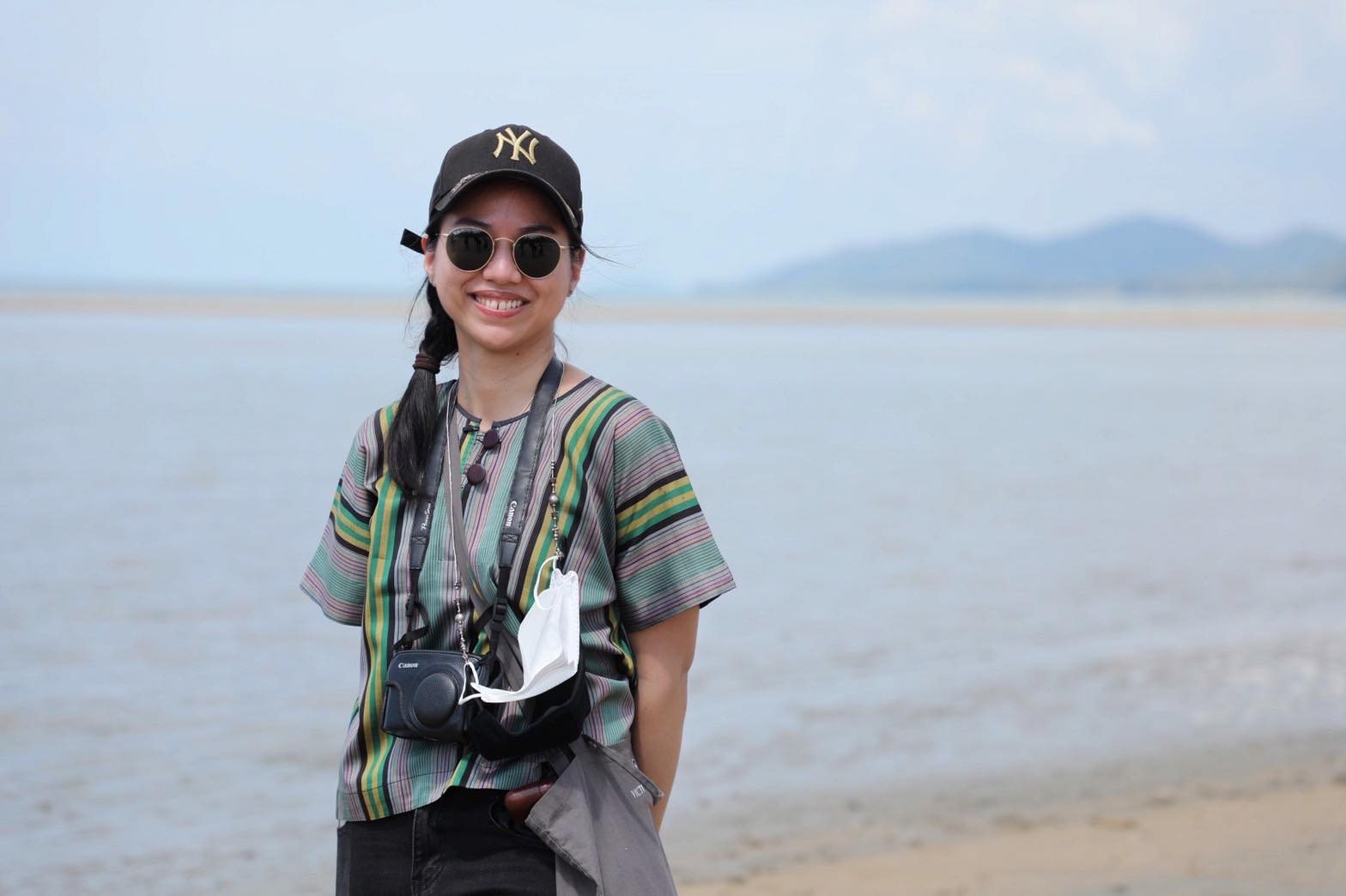 University of Western Australia in maritime archaeology. Alongside her colleagues from Thammasat University, she currently holds a scholarship from the Thailand Academy of Social Sciences, Humanities and Arts or TASSHA under the auspice of the Ministry of Higher Education, Science, Research and Innovation. Her research interest is in maritime history and heritage in Thailand, Southeast Asia, and the Indian Ocean World. In her PhD project, she worked on the Phanom-Surin ship, an Indian Ocean sewn-plank vessel of the 9th century, as key evidence of the long-distance connections between mainland Southeast Asia and the Indian Ocean World. Later she expanded her scope of interest to the integration of local maritime knowledge. Ultimately, she anticipates the development of maritime historical dialogue in which the mainland coast was taking an active role along with the island counterparts.
University of Western Australia in maritime archaeology. Alongside her colleagues from Thammasat University, she currently holds a scholarship from the Thailand Academy of Social Sciences, Humanities and Arts or TASSHA under the auspice of the Ministry of Higher Education, Science, Research and Innovation. Her research interest is in maritime history and heritage in Thailand, Southeast Asia, and the Indian Ocean World. In her PhD project, she worked on the Phanom-Surin ship, an Indian Ocean sewn-plank vessel of the 9th century, as key evidence of the long-distance connections between mainland Southeast Asia and the Indian Ocean World. Later she expanded her scope of interest to the integration of local maritime knowledge. Ultimately, she anticipates the development of maritime historical dialogue in which the mainland coast was taking an active role along with the island counterparts.
Host: Veronica Walker
September 5th, 2022
Time: 13:00 in Helsinki
Perspectives in Maritime Archaeology
with Kristin Ilves and Marko Marila
In 2019–2021, research was carried out at the University of Helsinki into degree program development in maritime archaeology. In order to develop the teaching, an online learning platform was designed and launched. The platform, titled Perspectives in Maritime Archaeology, consists of lectures by a number of international experts and literature on a variety of topics ranging from boatbuilding to seamanship and from trade and exploration to public outreach and contemporary art. The purpose of the platform is to convey a broad image of the discipline and promote multidisciplinary thinking among students. In order to assess the success of the platform in achieving this, surveys were conducted on student expectations and satisfaction, as well as on (potential) changes in the perceived image of maritime archaeology. In this talk, we introduce the platform, but also report the findings of our research on the development of teaching and discuss them in the context of educational theory, history of higher education in maritime archaeology, and the public perception of maritime archaeology.
Kristin Ilves is Assistant Professor in Maritime Archaeology at Helsinki University. Interested in maritime cultural landscapes, she is currently focusing in relating climate, environment, and culture change to each other and is particularly drawn to the construction of island identities. She has an extensive fieldwork experience and a fascination in the development of innovative techniques for the presentation of archaeological sites to public and professional audiences. Kristin Ilves is responsible for teaching in maritime archaeology.
University. Interested in maritime cultural landscapes, she is currently focusing in relating climate, environment, and culture change to each other and is particularly drawn to the construction of island identities. She has an extensive fieldwork experience and a fascination in the development of innovative techniques for the presentation of archaeological sites to public and professional audiences. Kristin Ilves is responsible for teaching in maritime archaeology.
Marko Marila is a postdoctoral researcher at the University of Turku. He finished his PhD at the University of Helsinki in 2020, wherein he focused on speculative epistemology in archaeology. His interests lie at the intersection between archaeology and philosophy. He is the co-author of the report “Long-term degree program success in Maritime Archaeology” (2020) along side Kristin Ilves, and has subsequently collaborated with her in other publications related to maritime archaeology.
speculative epistemology in archaeology. His interests lie at the intersection between archaeology and philosophy. He is the co-author of the report “Long-term degree program success in Maritime Archaeology” (2020) along side Kristin Ilves, and has subsequently collaborated with her in other publications related to maritime archaeology.
Host: Emilia Mataix Ferrandiz
September 26th, 2022 (postponed until next spring-summer program
Time: 13:00 in Helsinki, 11:00 in Oxford
Thoughts on the archaeology of ports: what are we looking for?
with Linda Hulin
In this paper I shall argue that ports were generally viewed through the lens of economic activity and political power. More recent interest in the social life of ports focuses upon their function as liminal spaces, places of subversion and innovation. I will consider ports as the intersections of differing sets of requirements and offer a way to think about this archaeologically. My main interest is in the mariner experience and how their requirements shape ports.
Linda Hulin is research officer at the Oxford Centre for Maritime Archaeology and a Supernumerary Fellow of Harris Manchester College. Linda Hulin’s interests centre upon the materiality of interregional contact across the eastern Mediterranean, and particularly the Levant, Egypt, Cyprus and Libya. She has researched the impact of empire on both rulers and ruled in the Late Bronze Age, and she focuses generally upon the relationship between aesthetic sensibilities and social identification in both the ancient and modern world. Hulin has taken part in numerous excavations and surveys across the eastern Mediterranean and is currently preparing the the Western Marmarica Coastal Survey in Libya for publication. She is also exploring the lives of sailors on land in the Late Bronze age eastern Mediterranean. Hulin is also PI of the project Making Maritime Memories: the British Country House and the Sea. She is editor of the Palestine Exploration Quarterly, the journal of the Palestine Exploration Fund, which is devoted itself to the history, archaeology and geography of the Levant since 1865.
She has researched the impact of empire on both rulers and ruled in the Late Bronze Age, and she focuses generally upon the relationship between aesthetic sensibilities and social identification in both the ancient and modern world. Hulin has taken part in numerous excavations and surveys across the eastern Mediterranean and is currently preparing the the Western Marmarica Coastal Survey in Libya for publication. She is also exploring the lives of sailors on land in the Late Bronze age eastern Mediterranean. Hulin is also PI of the project Making Maritime Memories: the British Country House and the Sea. She is editor of the Palestine Exploration Quarterly, the journal of the Palestine Exploration Fund, which is devoted itself to the history, archaeology and geography of the Levant since 1865.
Host: Veronica Walker Vadillo
October 3rd, 2022
Time: 13:00 in Helsinki, 12:00 in Madrid
Gone under sea: Shipwrecks, Legal Landscapes and Mediterranean Paradigms
with Emilia Mataix Ferrandiz

The purpose of this presentation is not to discuss something that does not really exist, namely the Roman law of the sea. Instead, I will be looking at the perceptions of Romans about the sea and how that affected its legal status. While the Romans may have approached the sea as a savage wilderness beyond domination of their civil law, their views also reflected the role of empire and civilization in marking the limits of law. In their texts, Roman jurists reflect on different kinds of sea-storm scenes, to which they apply legal institutions in order to organize and provide solutions to the catastrophes suffered by people in what was considered a space free from the rule of Roman civil law. Concretely, I will be focusing on the criminal liability for shipwrecking in the light of the edict de incendio ruina naufragio rate nave expugnata from the 1st cent BC (that dating is my hypothesis) which is linked with a series of edicts dealing with violent behavior also enacted in that period.
The analysis of that source leads to a study of the socio-political context and lawmaking practices in the Roman Republic, but overall, to consider the Roman understanding of an ‘unruly’ sea and the civilizing power of law with the focus on the event of shipwrecking. In that respect, shipwrecks appear as events that bridge the gap between land and sea, because of the different legal remedies provided to deal with these catastrophes, which in turn enlarged the scope of land-based legal rulings. This produced a dynamic connection between the conceptual categories of land and sea, with the consistently adaptable character of human structures and institutions along the coast of the sea, and the utterly malleable application of jurisdiction over the sea itself. For the Romans who debated the matter, the main issue was not sovereignty of the sea, but rather the political implications that such an extraordinary command, and with it, unusual powers, would have.
Emilia Mataix Ferrandiz earned her PhD in Roman law in march, 2014 (university of Alicante and Facolta di giurisprudenza Palermo) concerning the criminal liability for shipwrecking. She finished her 2nd PhD in archaeology in June 2018, concerning the epigraphy of merchandise at the Universities of Southampton and Lyon 2 la lumiere, related to the Portus limen project (http://portuslimen.eu/). Her research interest lies on Roman law and especially on its commercial and maritime focus. She was awarded a postdoctoral fellowship at the Helsinki Collegium for advanced studies (2018-2020) to develop a project entitled materialising and tracing roman commercial sea law (2nd cent BC-3rd cent AD), where she aimed to understand legal procedures from an anthropological point of view and thinking what do the parties in trade aimed to achieve by using certain legal mechanisms or practices. She has been hired as collaborator for the Center of Excellence Eurostorie (University of Helsinki), concretely on the subproject 1 “Law and the uses of the past” (https://www.helsinki.fi/en/researchgroups/law-identity-and-the-european-narratives) until 2024. From 2021 to 2022, she worked as a research fellow at the Käte Hamburger Kolleg Münster ‘Legal unity and Pluralism’ (https://evir-muenster.de/), where she developed her project ‘Commercial Portscapes: an holistic approach to Roman trade’. In 2022 she earned a Maria Zambrano fellowship to work at the University of the Basque Country within the field of Roman Law.
Host: Veronica Walker Vadillo
October 17th, 2022
Time: 18:00 in Helsinki, 10:00 am in the Lone Star State (College Station)
Understanding Watercraft in Ancient Iconography
with Shelley Wachsmann, Meadows Professor of Biblical Archaeology
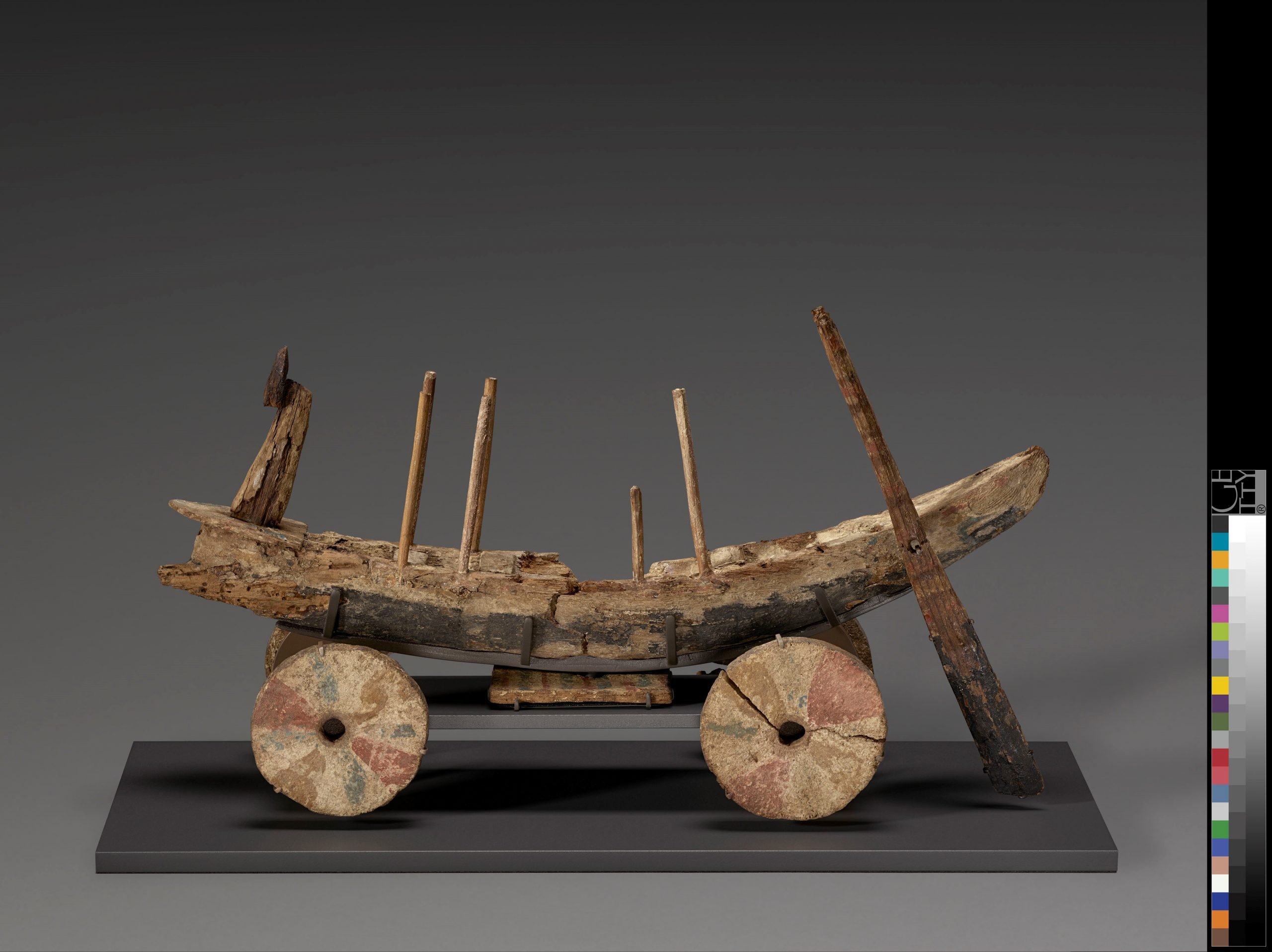
Abstract
In the past six decades since its inception, nautical archaeologists have excavated and studied the hulls, cargoes, and other remains of ancient watercraft. However, shipwrecks themselves only tell part of the story. The archaeological record is replete with examples of known shipwrecks from some cultures and periods, but, for others, no hulls exist in the known archaeological record. Vagaries of preservation generally prevent the upper parts and rigging of a vessel to survive in all but the most remarkable of cases. This lecture reviews the role of iconographic representations in understanding ancient vessels and seafaring by presenting the issues, examining the limitations, proposing interpretative methods for, and finally by supplying specific examples of, ancient nautical depictions.
The presentation will discuss this paper, you are welcome to read it in advance!
Biography
Shelley Wachsmann was born in Canada and immigrated to Israel in 1968. He earned all three of his degrees in Near Eastern Archaeology from the Hebrew University, Jerusalem’s Institute of Archaeology: BA (1974), MA (1984) and Ph.D. (1990). From 1976 to 1989 Wachsmann served as the Inspector of Underwater Antiquities for the Israel Department of Antiquities and Museums. During that time he was directly responsible for the nautical heritage of Israel. He carried out numerous underwater archaeological surveys and excavations in the Mediterranean, Red Sea and Sea of Galilee. Among the projects he directed were the excavation of a Late Bronze Age cargo off the Carmel coast, probe excavations of a late fifth century BC wreck near Kibbutz Maagan Michael, a sixth century AD Byzantine wreck off Dor and the search for cannon jettisoned by Napoleon during his retreat from Acco in 1799. In 1986 he directed the excavation of the Sea of Galilee Boat, a 2,000-year-old boat found in the Sea of Galilee near the ancient site of Migdal. At the completion of the excavation the boat was moved intact to a conservation pool at the Yigal Allon Museum at nearby Kibbutz Ginosar where it is now on exhibit.
He carried out numerous underwater archaeological surveys and excavations in the Mediterranean, Red Sea and Sea of Galilee. Among the projects he directed were the excavation of a Late Bronze Age cargo off the Carmel coast, probe excavations of a late fifth century BC wreck near Kibbutz Maagan Michael, a sixth century AD Byzantine wreck off Dor and the search for cannon jettisoned by Napoleon during his retreat from Acco in 1799. In 1986 he directed the excavation of the Sea of Galilee Boat, a 2,000-year-old boat found in the Sea of Galilee near the ancient site of Migdal. At the completion of the excavation the boat was moved intact to a conservation pool at the Yigal Allon Museum at nearby Kibbutz Ginosar where it is now on exhibit.
Beginning in 1990, Wachsmann became Meadows Visiting Assistant Professor of Biblical Archeology in the Nautical Archaeology Program, Texas A&M University. In 1993 this Chair was converted to a tenure-track position for which Wachsmann was appointed and in 1999 he received tenure and promotion to Associate Professor. Since 2009 he has served as the Coordinator of the Nautical Archaeology Program. Wachsmann has carried out extensive fieldwork in the eastern Mediterranean. Most recently, in 2002 he directed a paleo-environmental study of three possible Phoenician anchorages in Portugal. In 2003-2006, he directed the Canadian team of a joint Canadian-Greek expedition in search of fleets lost during the Persian War in the early 5th century B.C.) and in 2007-2009 he led the Danaos Project, a deep-water survey studying the Crete-to-Egypt trade route in antiquity.
Host: Veronica Walker Vadillo
October 31st, 2022
Time: 12:30 Helsinki, 20:30 pm Australia
Imperial Niche Construction on the Bay of Naples and around the Mediterranean
With Duncan Keenan Jones, School of Historical and Philosophical Inquiry, The University of Queensland

Abstract
The pressing political and social need to supply the high population densities of Imperial Rome shaped not only the capital’s immediate hinterland (which was turned over to high-value, perishable goods) but also the Mediterranean more broadly. A vital link in the supply system connecting Rome to the Mediterranean were the ports on the Tyrrhenian coast within a few hundred km of Rome (Keay 2012). One of the most important of these, especially early in this period, was Puteoli on the Bay of Naples, around which grew a network of commercial and military ports. Imperial Rome attempted to shape the Bay of Naples in manifold ways to supply (and protect) itself, including the creation or improvement of deep water ports and the transfer of water hundreds of kms between river basins: a very modern example of environmental imperialism. These attempts took place in the context of seismic and climatic dynamism, however. During the early and high empire, resources were sufficient to meet these challenges. Changing capabilities and priorities in late antiquity led to the collapse of this system. This paper will investigate this 500-year history of human-environment interaction. It will consider whether the supply networks of Rome, and the water supply of the ports of the Bay of Naples can be considered a form of niche construction. Niche Construction Theory views alteration of environment as an important part of bio-/cultural evolution (Laland and O’Brien 2010).
Biography
Duncan Keenan-Jones is Lecturer in Ancient History at the University of Queensland. His research focuses on the relationship between environment,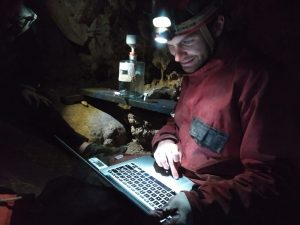 technology and society in the past, especially in the ancient Mediterranean and in Australia, as well as how these can help us manage this relationship today. He has current projects on the climate, flooding and water management in ancient Italy and floodplain management in Australia’s channel country, as well as how Roman mortar developed and why it is so durable. He is an affiliate of UQ’s Centre for Policy Futures, having been a fellow there in 2020.
technology and society in the past, especially in the ancient Mediterranean and in Australia, as well as how these can help us manage this relationship today. He has current projects on the climate, flooding and water management in ancient Italy and floodplain management in Australia’s channel country, as well as how Roman mortar developed and why it is so durable. He is an affiliate of UQ’s Centre for Policy Futures, having been a fellow there in 2020.
Before taking up the position at UQ, he held postdoctoral positions at the Collegium de Lyon (2017-2018), University of Glasgow (2014 – 2017) and the University of Illinois, Urbana-Champaign (2011-2014). Duncan’s doctoral thesis (Macquarie University, 2011), investigated the creation and social and environmental impacts of a unique, regional water supply network. Before his Masters of Arts in Ancient History (Macquarie, 2006), Duncan completed an honours degree in chemical engineering.
Host: Emilia Mataix Ferrándiz
November 14th, 2022
Time: 13:00 in Helsinki, 12:00 in Madrid
The Maritime Transport of Sculptures in the Ancient Mediterranean
With Katerina Velentza, Kone foundation fellow, University of Helsinki

Abstract
This book examines where, when, why and how sculptures were transported on the Mediterranean Sea during Classical Antiquity through the lenses of both maritime and classical archaeology. From the 16th century onwards numerous ancient sculptures have been discovered in the Mediterranean from the context of surveyed shipwrecks, unrecorded potential shipwrecks or as isolated finds. Scholars so far have analysed those sculptural artefacts from an art historical perspective, with interpretation of their maritime transportation remaining conjectural due to the problematic recording and the remoteness of their underwater context.
With a focus on the underwater context of already retrieved sculptures, this book aims at comprehending in detail the various circumstances under which ancient sculptural artefacts were carried on board ancient merchant ships and were consequently deposited underwater. Through the creation of an extensive Mediterranean-wide database, with more than 100 known incidents of ancient sculptures found underwater, and the in-depth analysis of three case studies, the Porticello, Mahdia and Favaritx shipwrecks, a new interpretation is presented for this maritime activity. Thereby, new details for the maritime transport and distribution of sculptures during the period of Classical Antiquity are revealed. Finally, the volume demonstrates the importance of the thorough recording of underwater archaeological evidence in the hope of raising awareness and eliminating the salvage of ancient sculptures out of their underwater context, a practice that has been encouraging the illicit trade of such antiquities.
Biography
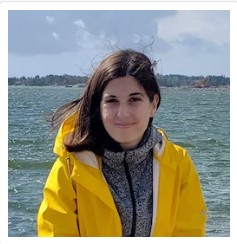
Katerina Velentza is a maritime archaeologist, currently a postdoctoralresearcher in the University of Helsinki, in Finland, carrying out the project ‘Re-imagining the use of traditional watercraft in the Aegean Sea for a sustainable environment and economy’ with funding awarded by the Kone Foundation (Koneen Säätiö) in 2020. Previously she completed a PhD in Archaeology at the Centre of Maritime Archaeology of the University of Southampton (2020), an MA in Maritime Archaeology at the University of Southampton (2015-2016) and a BA in Classical Archaeology at King’s College London (2012-2015). As an archaeologist she has worked and conducted research in several archaeological projects and museums of the Mediterranean region, the UK and the Baltic Sea. Her research interests range from subjects of terrestrial and maritime archaeology from the period of Classical Antiquity to issues of modern maritime history and ethnography.
Moderator
Emilia Mataix Ferrándiz
Participating panelists
Brendan Foley, Lund University
Brian Martens, University of St. Andrews
November 28th, 2022
November 28th, 2022: Karenleigh A Overmann, co-director of the Center for Cognitive Archaeology, University of Colorado
Time: 13:00 in Helsinki
NOTE: This will be a face-to-face event, live-streamed on Zoom in our regular zoom meeting point. If you are in Helsinki, please join us at the Helsinki Collegium for Advanced Studies (3rd Floor, Common Room, Fabianinkatu 24 A).
Human navigation: Evolution, cognition, devices
with Karenleigh A. Overmann, University of Colorado

Abstract
In this seminar I will explore how human societies navigate: route following, survey knowledge, and devices. Route following, the ability to move from one landmark to the next, is how all primate species navigate, including humans and ancestral species like Homo erectus. As practiced by human societies, traditional route following involves distinguishing subtle environmental clues; establishing, memorizing, and marking trails and tracks; giving places descriptive and memorable names; codifying route knowledge in stories and songs; and using spatial memory. I will present several interesting cases of route following, including the Mississippi river, Aboriginal dreaming tracks, and London taxi driving. In comparison, survey knowledge requires a spatial ability unique to humans: allocentric perception, the ability to coordinate features and relations across multiple dimensions. I will explain how this ability can be seen emerging in the archaeological record of stone tools, first as bilateral symmetry about two million years ago and then as symmetry across three dimensions about five hundred thousand years ago. Allocentric navigation is the same ability used to shape stone tools multidimensionally, expanded to sets of features and relations that are non-contiguous (not located in a single object) and distributed (across landscape and sky). This ability allowed our species to leave Africa to colonize virtually every environment on the planet within the past two hundred thousand years or less. I will illustrate how human societies combine allocentric navigation with route following with Pacific open ocean navigation, as well as historical devices like maps and compasses using cases from Babylon and the Vikings.
Karenleigh A. Overmann is an associate professor of anthropology (adjunct) and acting director of the Center for Cognitive Archaeology at the University of Colorado, Colorado Springs. She earned her doctorate in archaeology from the University of Oxford in 2016 as a Clarendon scholar. In June 2020, she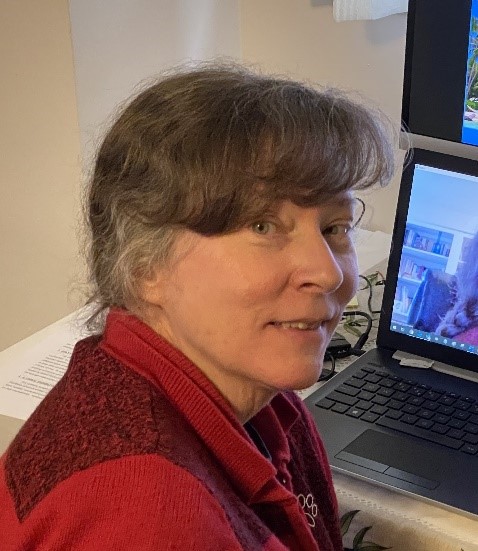 completed two years of postdoctoral research at the University of Bergen (MSCA individual fellowship, EU project 785793), and she was a visiting scholar at the University of Pittsburgh from Sept. 2020 to June 2021. She investigates how societies create complex cultural systems by using and modifying material forms over generations of collaborative effort, the effect this elaborational mechanism has on conceptual content, how material forms become increasingly refined to elicit specific behavioral and psychological responses, and what this might augur about the future of human cognition. To date, she has published 57 articles and book chapters, two special journal issues, and three books: The material origin of numbers (Gorgias Press, 2019), Squeezing minds from stones (Oxford University Press, 2019, co-edited with Frederick L. Coolidge), and Nature and transformation of writing systems in the ancient Near East (Ugarit Verlag, 2021, co-edited with Gösta Gabriel and Annick Payne). Her fourth book, The materiality of numbers, is in press (Cambridge University Press, 2023), and she is currently co-editing The Oxford handbook of cognitive archaeology (Oxford University Press, 2023) with Thomas Wynn and Frederick L. Coolidge.
completed two years of postdoctoral research at the University of Bergen (MSCA individual fellowship, EU project 785793), and she was a visiting scholar at the University of Pittsburgh from Sept. 2020 to June 2021. She investigates how societies create complex cultural systems by using and modifying material forms over generations of collaborative effort, the effect this elaborational mechanism has on conceptual content, how material forms become increasingly refined to elicit specific behavioral and psychological responses, and what this might augur about the future of human cognition. To date, she has published 57 articles and book chapters, two special journal issues, and three books: The material origin of numbers (Gorgias Press, 2019), Squeezing minds from stones (Oxford University Press, 2019, co-edited with Frederick L. Coolidge), and Nature and transformation of writing systems in the ancient Near East (Ugarit Verlag, 2021, co-edited with Gösta Gabriel and Annick Payne). Her fourth book, The materiality of numbers, is in press (Cambridge University Press, 2023), and she is currently co-editing The Oxford handbook of cognitive archaeology (Oxford University Press, 2023) with Thomas Wynn and Frederick L. Coolidge.
Host: Veronica Walker Vadillo
Friday, December 16th, 13-15 (Finnish time), 12-14 CEST, 2022: Book Launch “Down by the Water: interdisciplinary studies in human-environment interactions in watery spaces”
Event both in person and in zoom.
Place: Common Room of the Helsinki Collegium for advanced studies (3rd floor), 24, Fabianinkatu 22, Helsinki, Finland
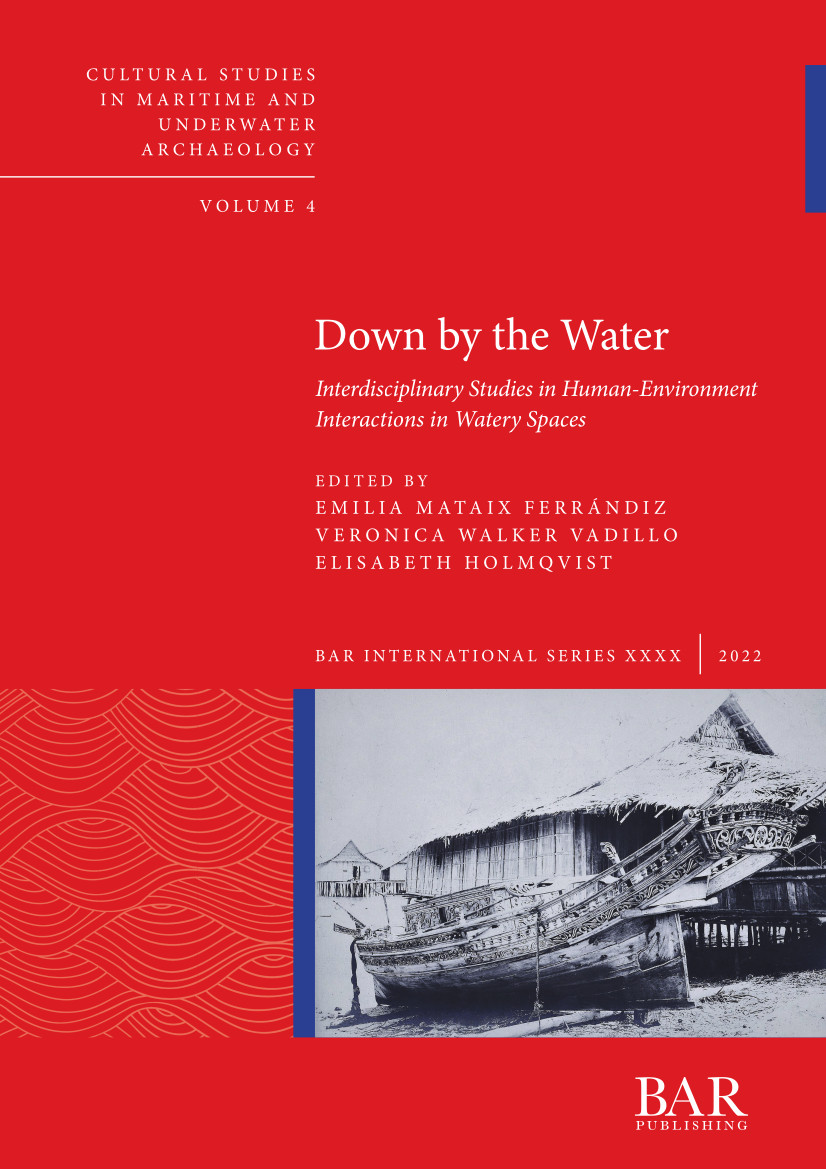
Book Blurb
Waterways have been key factors in the development of societies from prehistoric times to nowadays, particularly due to their role as vectors for cultural interactions, material exchange, and transmission of knowledge. The fluidity of these highways of transport and communications is tightly linked to the presence of transit points: spaces with unique geographical characteristics that acted as nodal points between different communities. Transit points are thus defined as places of intense social contacts, putting objects of physical geography into the domain of social sciences and humanities. The subject is challenging, as many activities that happen in the aquatic spaces seldom leave substantial archaeological traces behind. Actions that take place on board vessels are only visible through secondary sources like iconography, while archaeological remains from ships are often difficult to access. In some instances, the location where contacts might have taken place are obscured by a lack of remains, but the impact of those interactions are visible in other ways, such as nautical technology or language and cultural exchanges. This book demonstrates that by changing the research paradigm to an interdisciplinary and multidisciplinary perspective that fully embraces the intricate connection between society and water spaces we can bring forth the nuances of human-environment interactions in water transit points.
With the intervention of: Linda Hulin
Speakers for the Fall of 2023
Monday, 2nd of October, 2023
12h PM Helsinki, 10h AM UK
Regulating maritime trade at the dawn of early-modern Europe
With Guido Rossi (University of Edinburgh)
Maritime trade played a crucial role in the economic development of western Europe. During the Middle Ages, the increase in trade led to its increasingly complex regulation; in its turn, such a regulation had a profound influence on the development of trade. This connection is so deep that it is not possible to appreciate the development of maritime commerce without looking at the rules underpinning it. This paper will provide an introduction to the main aspects of this complex subject, ranging from insurance to averages, looking especially at the late fifteenth and sixteenth centuries.
Guido Rossi’s bio
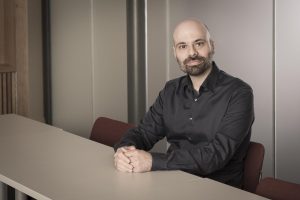
Guido Rossi read law at Pavia (Italy) and Cambridge. After a short spell at St Catherine’s College, Oxford, he moved to Edinburgh in 2013. Guido is particularly interested in the medieval and early modern history of civil, canon and commercial law, and welcomes enquires from prospective PhD students on any of those fields.
Chair: Emilia Mataix Ferrándiz
Monday, 16th of October, 2023
12h PM Helsinki, 10h AM UK
Book discussion: The Life of the Red Sea Dhow: a cultural history of seaborne exploration in the Islamic world
With Dionisius Agius (University of Exeter)
Few images are as evocative as the silhouette of the Arab dhow as, under full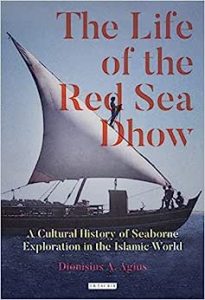 sail, it tacks to windward on glittering waters of Red Sea before moving across the face of the rising or setting sun. In this authoritative new book, Dionisius A. Agius, one of the foremost scholars of Islamic material culture, offers a lucid and wide-ranging history of the iconic dhow from medieval to modern times. Traversing the Arabian and African coasts, he shows that the dhow was central not just to commerce but to the vital transmission and exchange of ideas. Discussing trade and salt routes, shoals and wind patterns, spice harvest seasons and the deep and resonant connection between language, memory and oral tradition, this is the first book to place the dhow in its full and remarkable cultural contexts.
sail, it tacks to windward on glittering waters of Red Sea before moving across the face of the rising or setting sun. In this authoritative new book, Dionisius A. Agius, one of the foremost scholars of Islamic material culture, offers a lucid and wide-ranging history of the iconic dhow from medieval to modern times. Traversing the Arabian and African coasts, he shows that the dhow was central not just to commerce but to the vital transmission and exchange of ideas. Discussing trade and salt routes, shoals and wind patterns, spice harvest seasons and the deep and resonant connection between language, memory and oral tradition, this is the first book to place the dhow in its full and remarkable cultural contexts.
Dionisius Agios’ bio
Our speaker is an Arabist and ethnographer specializing in the maritime landscapes of the Islamicate world with a focus on the material culture and heritage, and the medieval Arabic cultural geography of the Western Indian Ocean. He has conducted extensive fieldwork on the coasts of the Arabian Gulf and Oman between 1990 and 2000, and the African and Arabian Red Sea from 2002 to present.
Islamicate world with a focus on the material culture and heritage, and the medieval Arabic cultural geography of the Western Indian Ocean. He has conducted extensive fieldwork on the coasts of the Arabian Gulf and Oman between 1990 and 2000, and the African and Arabian Red Sea from 2002 to present.
Pioneering dhow studies his research uses multiple methods or data sources in extensive archival material and archaeological finds establishing a historical, geographical and cultural pattern of the life of a maritime people in a unique multi-disciplinary series of research outputs
Chairs: Emilia Mataix Ferrándiz and Veronica Walker-Vadillo
Monday, 13th November 2023
12h PM Helsinki, 10h AM UK
Title : Lines and Laws on a Painted Ocean
With Philip Steinberg (University of Durham)
When Samuel Taylor Coleridge writes in The Rime of the Ancient Mariner that his vessel was ‘As idle as a painted ship / Upon a painted ocean,’ the references to ‘painting’ have a double meaning. Although Coleridge’s primary aim with this image was to highlight how both the ocean and ship are still and frozen, without dynamic character, the reference has the secondary effect of stressing how, in modern thought, the ocean and ship are reduced (or elevated) to drawn, allegorical features, abstracted from material reality. In this paper, I use a reflection on Coleridge’s image of a ‘painted ocean’ to explore some of the ways that lines are drawn on the sea, and how line-drawing supports a form of abstraction that excludes dynamic, experienced nature. Building on examples from maritime boundary delimitation, marine spatial planning, and uses of bounded ocean-space to evoke state sovereignty, this paper argues that ‘painting’ the ocean with lines can do as much to obscure as reveal the lines that we draw in ocean-space, and that the ocean draws on us.
Philip Steinberg’s bio
Philip Steinberg is UArctic Chair in Political Geography at Durham University, where he directs the Durham Arctic Research Centre for Training and Interdisciplinary Collaboration (DurhamARCTIC), the Northeast England/Northern Ireland Doctoral Training Partnership (NINEDTP), and IBRU: Durham University’s Centre for Borders Research. He is the author or editor of seven books including, most recently, The Routledge Handbook of Ocean Space and Territory Beyond Terra as well as recent articles on topics ranging from the potential for international law to limit the right to break sea ice, the role that ideals of oceanic memorialisation and dispersal have played in the debate surrounding Bristol, England’s memorial to slave trader Edward Colston, and the politics surrounding the definition and management of the marginal ice zone in Norway’s Barents Sea.
Chair: Emilia Mataix Ferrándiz
8th of January 2024
14:00-16:00 Helsinki
New Year, New Research Proposal!
Welcome the New Year with us! We will be discussing the funding horizon in Europe and giving tips to Early Career Scholars on their next step toward an Academic Career!
Hosts: Veronica Walker Vadillo, Katerina Velentza, Emilia Mataix Ferrandiz
Monday 29th of January 2024
18:00 Helsinki / 08:00 Vancouver time
**Event Cancelled**
Unruly Oceans: Law, Violence and Sovereignty at Sea
Interview with Renisa Mawani and Sebastian Prange (University of British Columbia)
In the fourteenth century, on the South Indian coast, the North African traveller, Ibn Battuta, witnessed a custom that was then common across the Indian Ocean. Under what was known as the ‘right of the port’ (Ar. haqq al-bandar), coastal states could seize part of the cargo of any vessel that entered a port, not of its own volition, but due to a storm or some other calamity. While the origins of this custom are unknown, it is widely attested across the trading world of the medieval Indian Ocean.1 A few rulers even went so far as to force passing ships into their harbour, in order to then exercise their ‘right of the port.’ Ibn Battuta, a jurist by training, complained bitterly about this practice, but continued to frame his description of it in terms of law and sovereignty. The commercial networks along which Ibn Battuta travelled traversed many different legal orders, polities, jurisdictions, and religious contexts. In their dealings with one another, merchants developed a type of trans-oceanic lex mercatoria to govern their business relationships; this was often rooted in Islamic law, even in cases when none of the parties identified as Muslim.2 The legal plurality of the Indian Ocean arena and its surrounding ports, described by Ibn Battuta and many others, opens a generative context from which to teach an aqueous history of international law.
Renisa Mawani’s Bio
Renisa Mawani is Canada Research Chair in Colonial Legal Histories and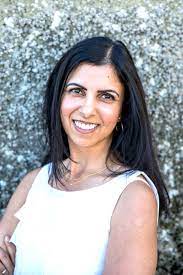 Professor of Sociology at the University of British Columbia, located on the unceded territories of the Musqueam (xʷməθkʷəy̓əm) peoples. From 2022-2025 she is a Global Professorial Fellow at the School of Law, Queen Mary University of London. Renisa is the author of Colonial Proximities (University of British Columbia Press, 2009) and Across Oceans of Law (Duke University Press, 2018), which was a finalist for the U.K. Socio-Legal Studies Association Theory and History Book Prize (2020) and winner of the Association of Asian American Studies Book Prize for Outstanding Contribution to History (2020). With Antoinette Burton, she is co-editor of Animalia: An Anti-Imperial Bestiary for Our Times (Duke University Press, 2020).
Professor of Sociology at the University of British Columbia, located on the unceded territories of the Musqueam (xʷməθkʷəy̓əm) peoples. From 2022-2025 she is a Global Professorial Fellow at the School of Law, Queen Mary University of London. Renisa is the author of Colonial Proximities (University of British Columbia Press, 2009) and Across Oceans of Law (Duke University Press, 2018), which was a finalist for the U.K. Socio-Legal Studies Association Theory and History Book Prize (2020) and winner of the Association of Asian American Studies Book Prize for Outstanding Contribution to History (2020). With Antoinette Burton, she is co-editor of Animalia: An Anti-Imperial Bestiary for Our Times (Duke University Press, 2020).
Sebastian Prange’s bio
Sebastian Prange (PhD, University of London) is an economic historian of the 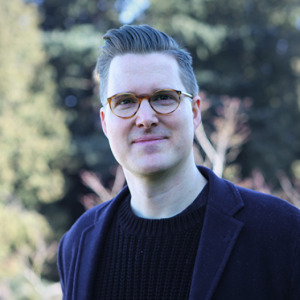 medieval Indian Ocean world, with a focus on South India. His research interests revolve around the history of Islam in monsoon Asia, the role of piracy and maritime violence, and the development of capitalism from a non-European perspective.
medieval Indian Ocean world, with a focus on South India. His research interests revolve around the history of Islam in monsoon Asia, the role of piracy and maritime violence, and the development of capitalism from a non-European perspective.
Interviewer: Emilia Mataix Ferrándiz
5th of February
16:00 in Helsinki, 09:00 in Washington D. C.
Community Archaeology and Indigenous Landscapes and Seascapes in the Mariana Islands
with Jennifer Mckinnon, East Carolina University
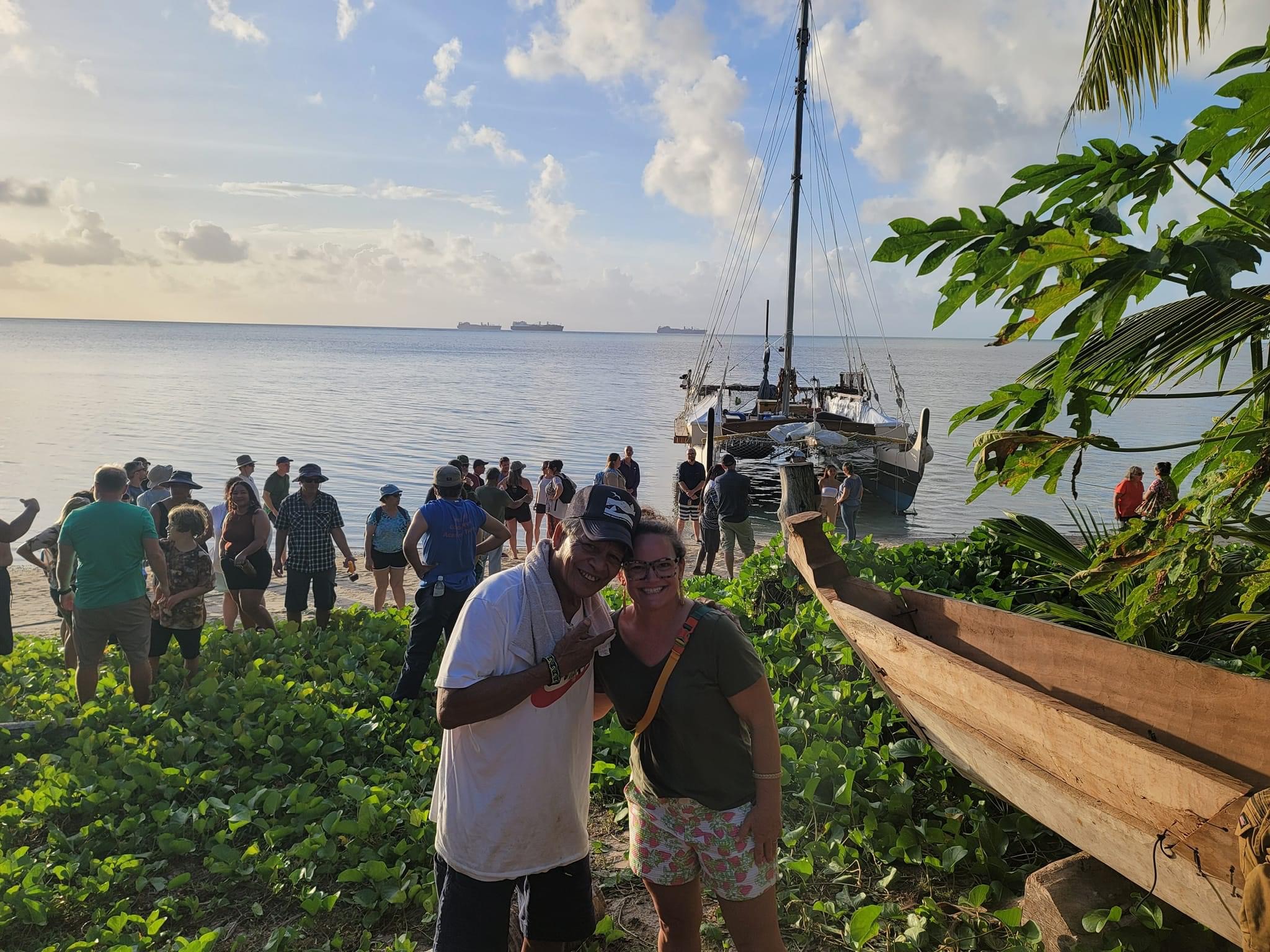
Over a decade of community archaeological research in the Mariana Islands of the western Pacific has provided the foundation for identifying Indigenous Pacific Island maritime heritage and cultural practices and upholding that heritage within the community. The work began in 2010 with an unfunded, community-requested project to identify and record significant Indigenous maritime cultural landscapes and seascapes on the island of Saipan. The basis for that project set the path for multiple community-driven projects over the following years on a variety of cultural sites. This year marks the beginning of a four-year project that continues the work of identifying and preserving significant maritime heritage in the island chain. The project develops a tangible and intangible database of maritime heritage for the region. Community workshops and meetings identify traditional cultural properties and traditional cultural use areas. Protocols will be identified and implemented to address potentially sensitive information. Follow-on workshops provide a space for the community to identify best practices for US federal review and preservation. And an educational program funded at the grass roots level presents a model for generational maintenance of maritime cultural tradition and knowledge. The project draws on concepts related to community archaeology, intangible heritage, landscape and seascape, ethnography, and place-based community participatory mapping. This talk will follow the trajectory of work over the decade and introduce some of the concepts and plans for the current project.
Jennifer McKinnon is an underwater and terrestrial archaeologist, and Professor in East Carolina University’s Department of History, Program in Maritime Studies. She received a B.A. in Anthropology from University of Florida and an M.A. and Ph.D. in Anthropology from Florida State University. Her current research interests include WWII battlefield and conflict archaeology, public and community archaeology, heritage tourism, maritime cultural landscapes and seascapes, and Spanish colonial heritage.
Maritime Studies. She received a B.A. in Anthropology from University of Florida and an M.A. and Ph.D. in Anthropology from Florida State University. Her current research interests include WWII battlefield and conflict archaeology, public and community archaeology, heritage tourism, maritime cultural landscapes and seascapes, and Spanish colonial heritage.
Prior to arriving at ECU in 2013, McKinnon was a Senior Lecturer in the Department of Archaeology at Flinders University in Adelaide, South Australia from 2004 to 2013. This is when she began working in the western Pacific on WWII conflict sites, but also developed an interest in Indigenous maritime cultural landscapes and seascapes. Before moving to Australia, she was a Senior Underwater Archaeologist with the State of Florida’s Bureau of Archaeological Research where I continued working on Spanish colonial heritage sites like the 1733 Spanish Galleon Trail.
McKinnon is a Research Associate with Ships of Exploration and Discovery Research, Inc. and Chair of the Advisory Council on Underwater Archaeology.
Host: Veronica Walker Vadillo
4th of March
12:00 pm in Helsinki, 10:00 am in Oxford
More than sun and sand: the Canary Islands as a crucible for understanding island archaeology in Africa
with Peter Mitchell, Professor of African Archaeology, University of Oxford

Island archaeology is a well-established field within the wider discipline, but African contributions to it remain scarce. The Canary Islands are unusual in the broader African context for their relatively long history of occupation (~2000 years) and the intensity with which archaeological research has been undertaken there. Much of that research, however, has focused on specifically Canarian issues, including efforts to demonstrate connections between the islands’ initial settlement and the Classical Mediterranean world. Relatively little has been conducted within the broader comparative framework that an island archaeology perspective provides. This seminar synthesizes what is currently known about the archipelago’s archaeology. By focusing on four themes – when did people arrive (and from where and how); what impact did their settlement have on Canarian environments; what variability can we see in precolonial social, economic, and political trajectories between individual islands; and what consequences flowed from European conquest and colonization and the archipelago’s assimilation into the wider Atlantic world – I hope to identify areas in which archaeological work in the Canary Islands can contribute to wider debates in island archaeology as a whole.
Peter Mitchell is Professor of African Archaeology at the University of Oxford and Tutor and Fellow in Archaeology at St Hugh’s College, Oxford, as well as a Research Associate of the Rock Art Research Institute, University of the Witwatersrand. He read Archaeology & Anthropology at Cambridge – where he was first introduced to island archaeology by John Cherry – and then took his doctorate at Oxford, specialising in the Later Stone Age hunter-gatherer archaeology of southern Africa, where he has excavated extensively in Lesotho. The archaeology of African islands has been a longstanding interest, with a paper in the Journal of African Archaeology in 2004 leading on to a recent book and papers exploring the histories of Madagascar (2020; Journal of Island Archaeology), São Tomé and Príncipe (2021; World Archaeology with Sam Lunn-Rockliffe) and the Canarian archipelago (2023; Journal of Archaeological Research).
and Tutor and Fellow in Archaeology at St Hugh’s College, Oxford, as well as a Research Associate of the Rock Art Research Institute, University of the Witwatersrand. He read Archaeology & Anthropology at Cambridge – where he was first introduced to island archaeology by John Cherry – and then took his doctorate at Oxford, specialising in the Later Stone Age hunter-gatherer archaeology of southern Africa, where he has excavated extensively in Lesotho. The archaeology of African islands has been a longstanding interest, with a paper in the Journal of African Archaeology in 2004 leading on to a recent book and papers exploring the histories of Madagascar (2020; Journal of Island Archaeology), São Tomé and Príncipe (2021; World Archaeology with Sam Lunn-Rockliffe) and the Canarian archipelago (2023; Journal of Archaeological Research).
Host: Veronica Walker Vadillo
8th of March – Women’s Day Special Round Table
12:00 pm in Helsinki, 11:00 am in Madrid, 10:00 am in Southampton
It’s complicated! Maternity, motherhood, and parenting in Academia
The transition to motherhood presents a substantial change in a woman’s life, even more so if the mother in question is aiming to develop a career in Academia. While hyper mobility on the academic job market may make it difficult for all researchers to develop and establish meaningful personal relationships, women have to contend with the added pressure of our biological clock ticking faster as we reach the early stages of our career. In this round table we want to bring forth our own personal experiences with maternity, motherhood and parenting while working in Academia, and discuss how this transition to a life with children has affected or transformed our careers.
Panellists:
Helen Farr is an Associate Professor in Archaeology at the University of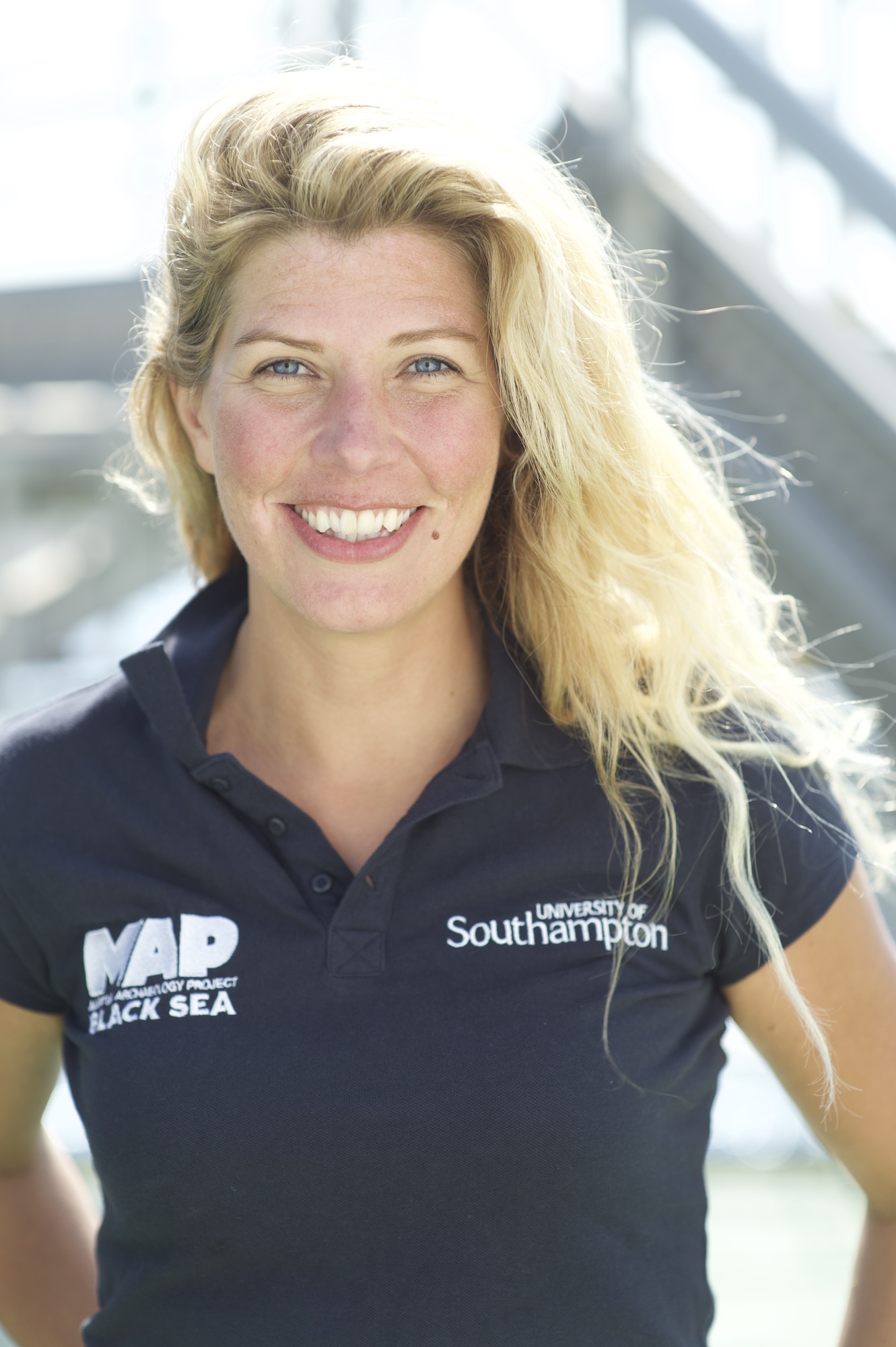 Southampton and is currently director of Maritime Archaeology programmes. To date within her career, she has worked on projects in many parts of the world, from locally in the Solent, to the Mediterranean, Black Sea, Indian Ocean, Australia and South America. She is currently PI of the ERC grant ‘ACROSS’ studying the earliest seafaring to Sahul. Helen’s research focuses on questions of deep time, social and environment change, however she is also passionate about maritime heritage and has served as chair of the UNESCO UNITWIN network for Underwater Archaeology. Helen is a commercial diver, keen sailor, and most importantly, a multitasking mother.
Southampton and is currently director of Maritime Archaeology programmes. To date within her career, she has worked on projects in many parts of the world, from locally in the Solent, to the Mediterranean, Black Sea, Indian Ocean, Australia and South America. She is currently PI of the ERC grant ‘ACROSS’ studying the earliest seafaring to Sahul. Helen’s research focuses on questions of deep time, social and environment change, however she is also passionate about maritime heritage and has served as chair of the UNESCO UNITWIN network for Underwater Archaeology. Helen is a commercial diver, keen sailor, and most importantly, a multitasking mother.
Elena Perez Alvaro is Lecturer in Cultural and Natural Heritage at UNIR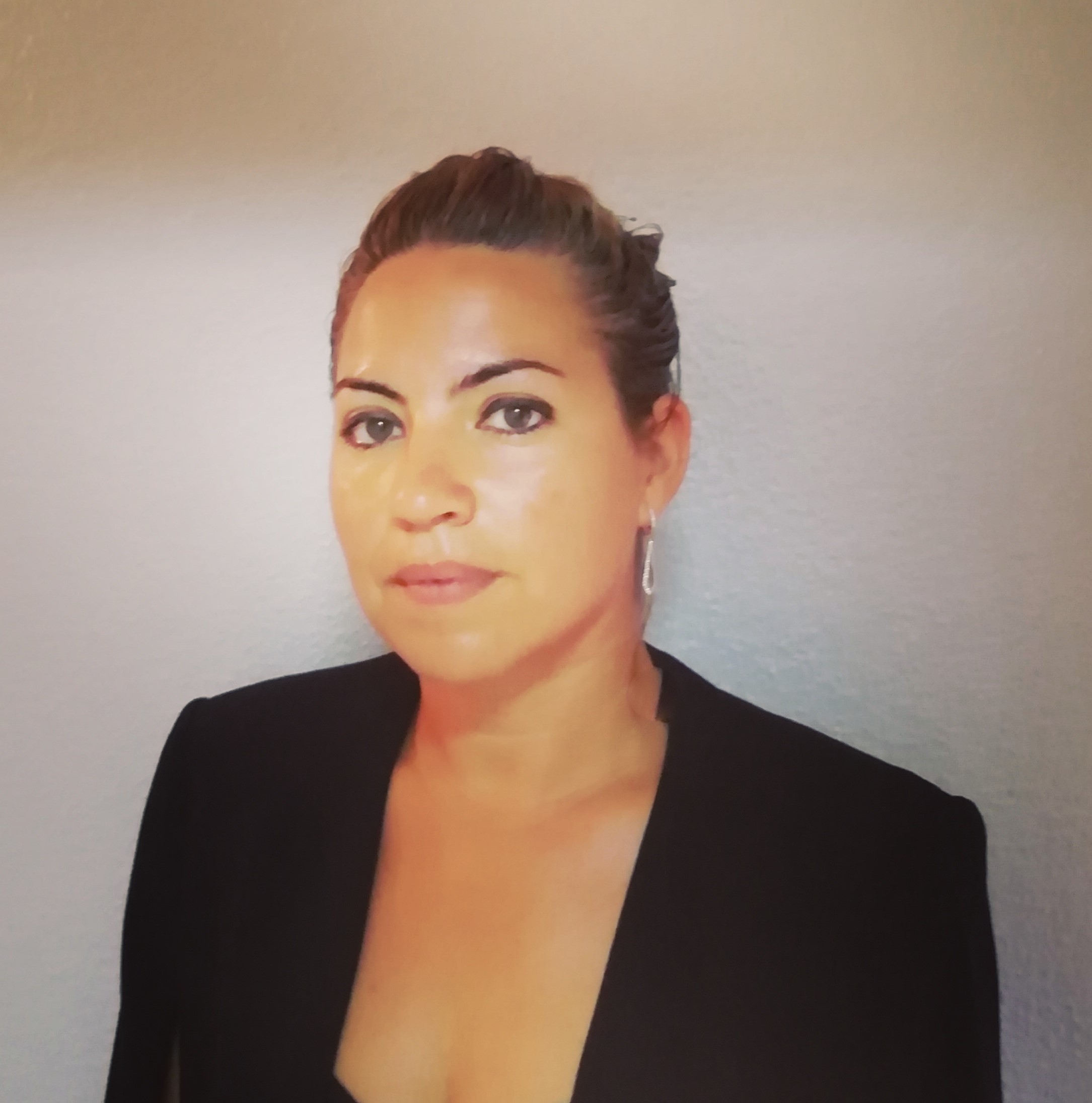 University, Spain, and a Research Associate at Nelson Mandela University, South Africa. She is also an Expert Member of the ICOMOS International Committee on Underwater Cultural Heritage, an Expert Member of the ICOMOS International Committee on Intangible Cultural Heritage, and part of the ICOMOS Sustainable Development Goals Working Group. Dr Perez-Alvaro is also Chair of the Underwater Heritage Working Group of UK Blue Shield. Her main research is a holistic multidisciplinary study creating links between aspects of heritage, identity, and society, the past, and the future. She is the author of several articles in specialised journals and books in diverse fields. She has also published the monography Underwater Cultural Heritage: Ethical Concepts and Practical Challenges (Routledge).
University, Spain, and a Research Associate at Nelson Mandela University, South Africa. She is also an Expert Member of the ICOMOS International Committee on Underwater Cultural Heritage, an Expert Member of the ICOMOS International Committee on Intangible Cultural Heritage, and part of the ICOMOS Sustainable Development Goals Working Group. Dr Perez-Alvaro is also Chair of the Underwater Heritage Working Group of UK Blue Shield. Her main research is a holistic multidisciplinary study creating links between aspects of heritage, identity, and society, the past, and the future. She is the author of several articles in specialised journals and books in diverse fields. She has also published the monography Underwater Cultural Heritage: Ethical Concepts and Practical Challenges (Routledge).
Veronica Walker Vadillo is a postdoctoral researcher at the University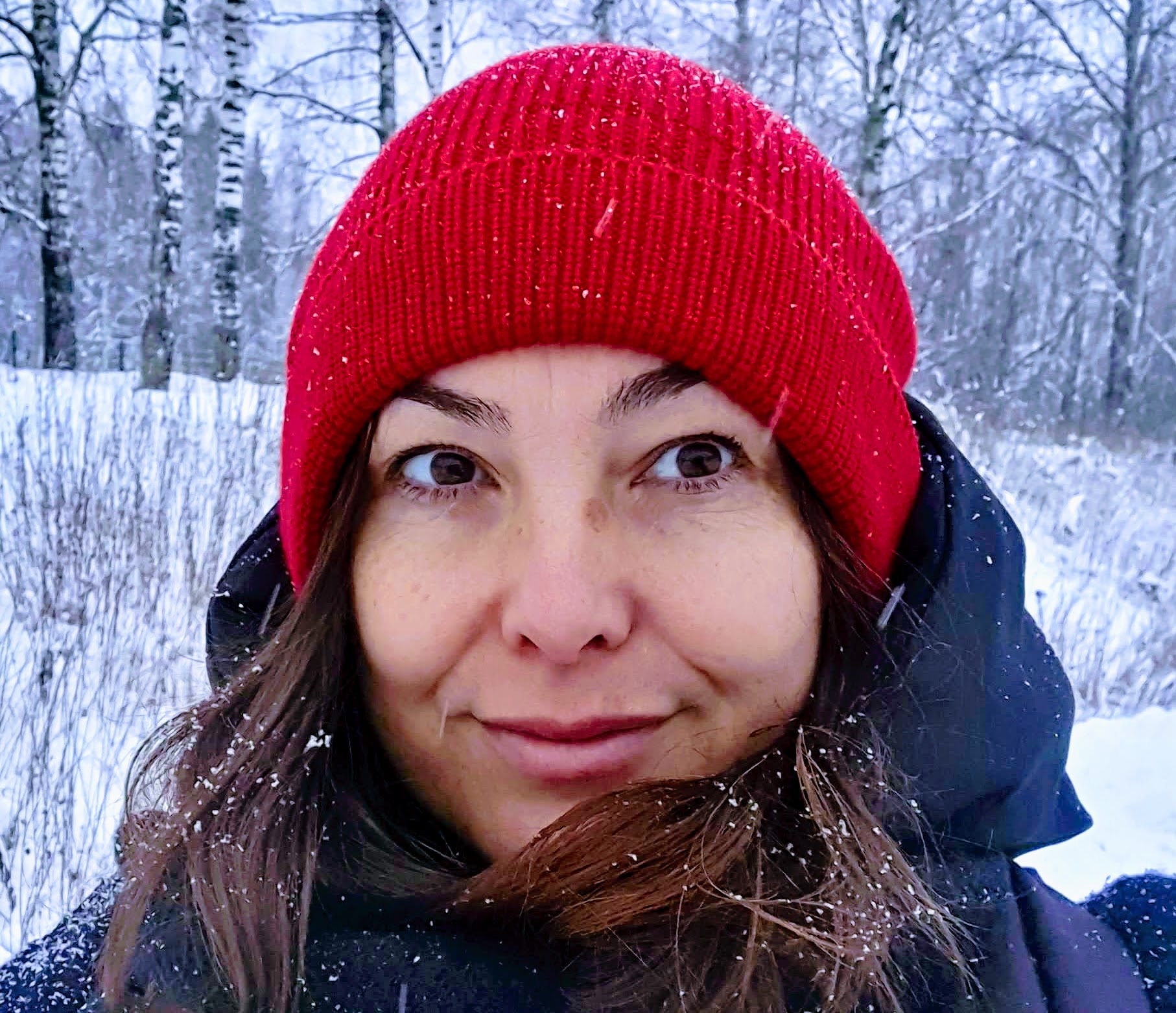 of Helsinki and host of the Down by the Water webinar series. After completing her PhD at the University of Oxford she became a mother and earned the competitive Core Fellowship at the Helsinki Collegium for Advanced Studies. She went on to obtain the University of Helsinki’s Three-Year Research Grant for her project “The ports and harbours of Southeast Asia” (2020-2023). She is chair of the Asia-Pacific Regional Conference on Maritime and Underwater Cultural Heritage, and since 2020 she is co-host of the Down by the Water: Global Conversations in Maritime Archaeology. She loves listening to heavy metal and doing crafts with her little one when she is not reading about all things Maritime Asia.
of Helsinki and host of the Down by the Water webinar series. After completing her PhD at the University of Oxford she became a mother and earned the competitive Core Fellowship at the Helsinki Collegium for Advanced Studies. She went on to obtain the University of Helsinki’s Three-Year Research Grant for her project “The ports and harbours of Southeast Asia” (2020-2023). She is chair of the Asia-Pacific Regional Conference on Maritime and Underwater Cultural Heritage, and since 2020 she is co-host of the Down by the Water: Global Conversations in Maritime Archaeology. She loves listening to heavy metal and doing crafts with her little one when she is not reading about all things Maritime Asia.
Emilia Mataix Ferrandiz is a Maria Zambrano Fellow at the University of the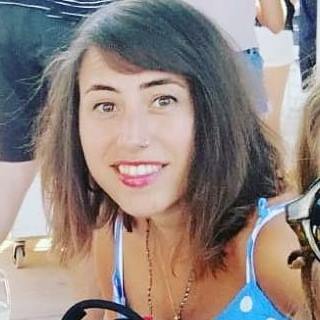 Basque Country, Spain, and host of the Down by the Water webinar series. Emilia is a Roman jurist and researcher focused on the maritime world of Classical Antiquity. Her research interest lies on Roman law in its commercial and maritime aspects. After finalizing her second PhD in Archaeology, Emilia was awarded a postdoctoral fellowship at the Helsinki Collegium for advanced studies (2018-2020) to develop a project entitled materialising and tracing roman commercial sea law (2nd cent BC-3rd cent AD). She is the author of the book “Gone under Sea. Shipwrecks, Legal Landscapes and Mediterranean Paradigms“. In September 2023 she became a mom, and currently juggles her academic duties with the care of her little one. In September 2024 she will be taking up a postdoctoral position at the International University of Catalonia (Spain) after earning the competitive Ramon y Cajal award.
Basque Country, Spain, and host of the Down by the Water webinar series. Emilia is a Roman jurist and researcher focused on the maritime world of Classical Antiquity. Her research interest lies on Roman law in its commercial and maritime aspects. After finalizing her second PhD in Archaeology, Emilia was awarded a postdoctoral fellowship at the Helsinki Collegium for advanced studies (2018-2020) to develop a project entitled materialising and tracing roman commercial sea law (2nd cent BC-3rd cent AD). She is the author of the book “Gone under Sea. Shipwrecks, Legal Landscapes and Mediterranean Paradigms“. In September 2023 she became a mom, and currently juggles her academic duties with the care of her little one. In September 2024 she will be taking up a postdoctoral position at the International University of Catalonia (Spain) after earning the competitive Ramon y Cajal award.
